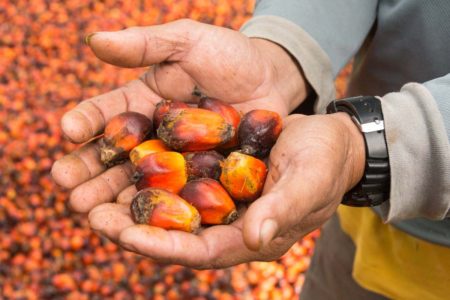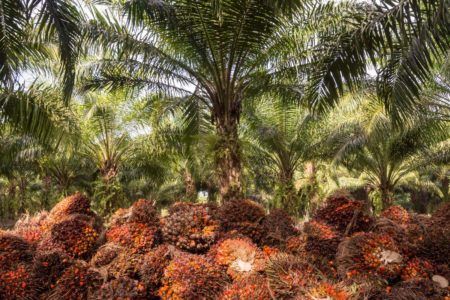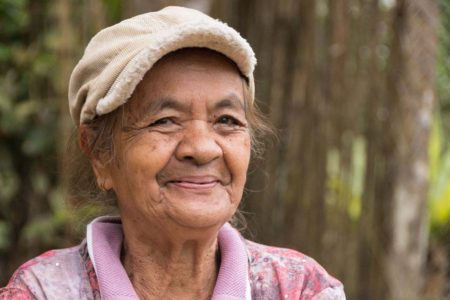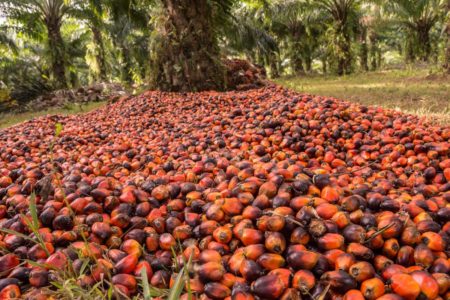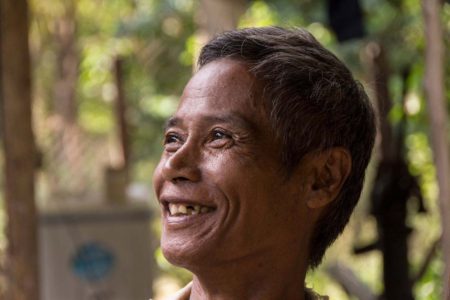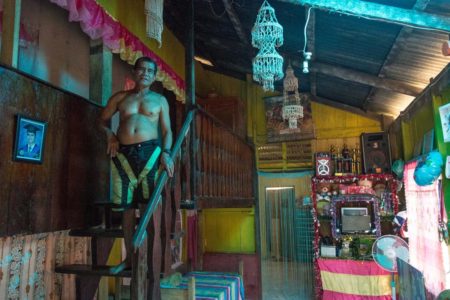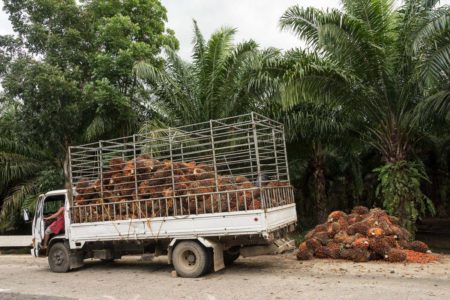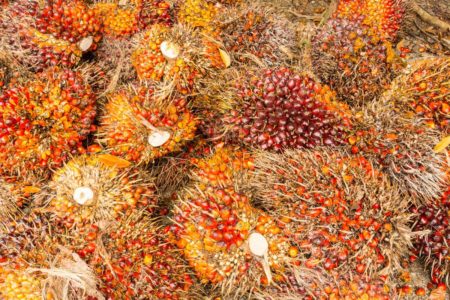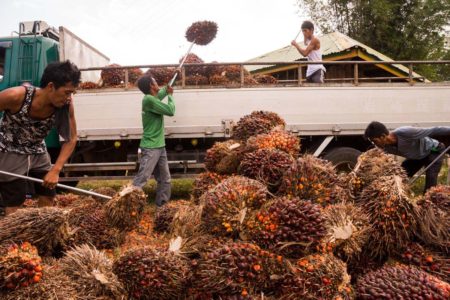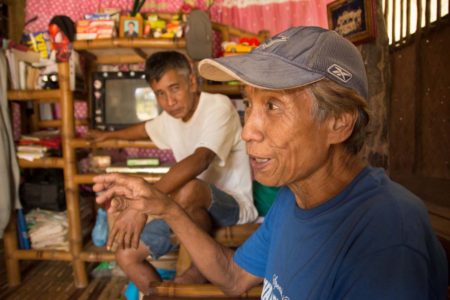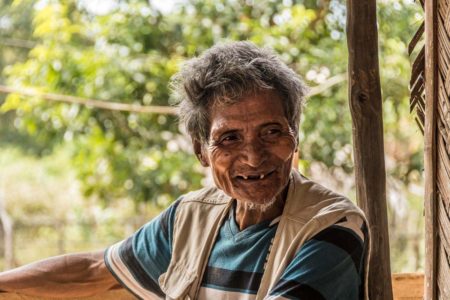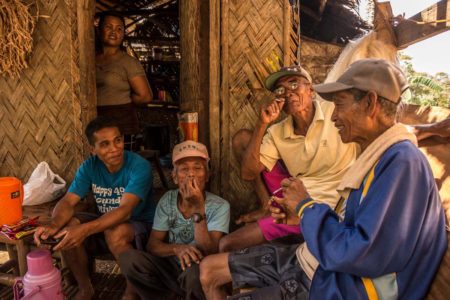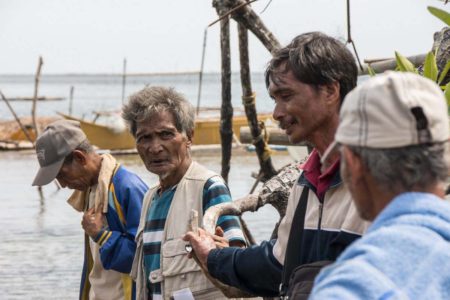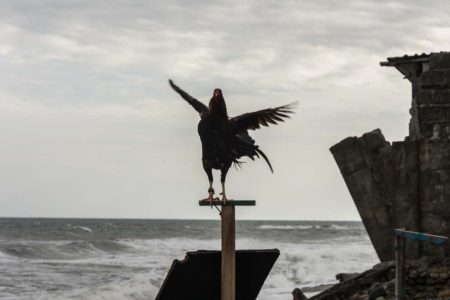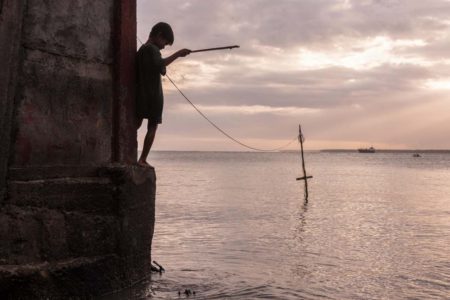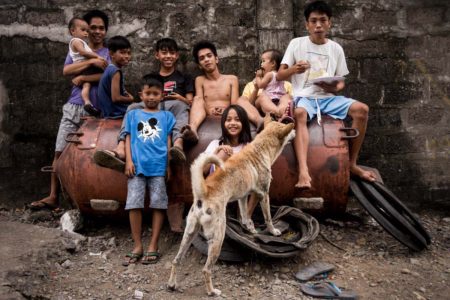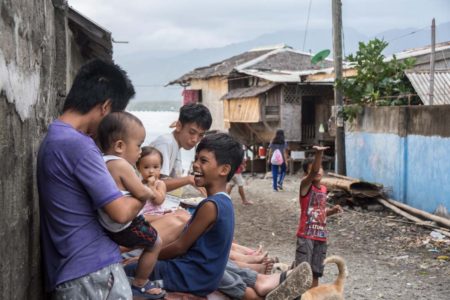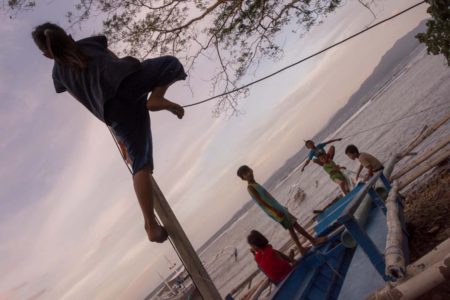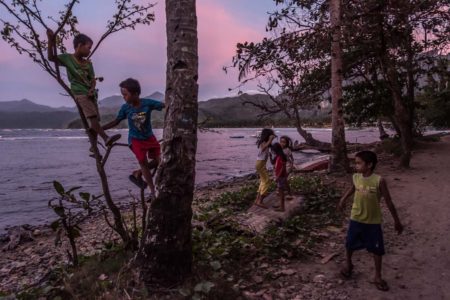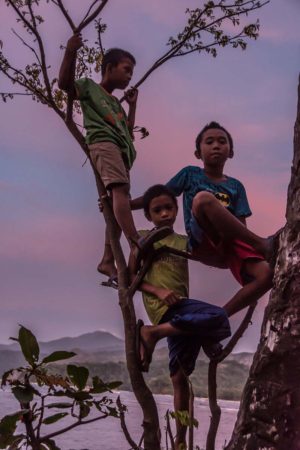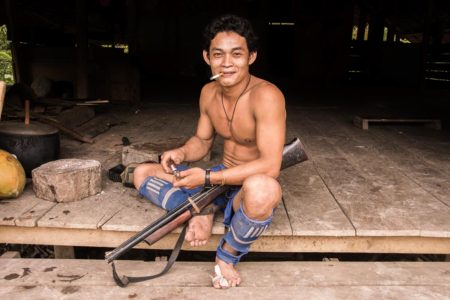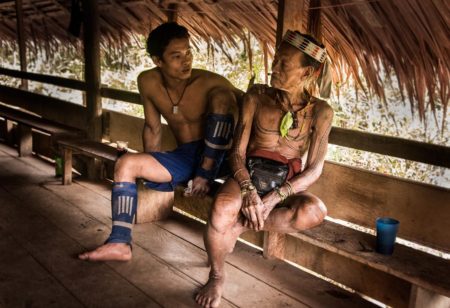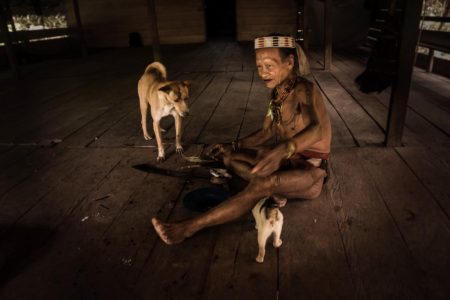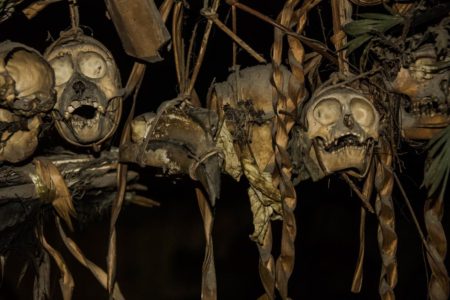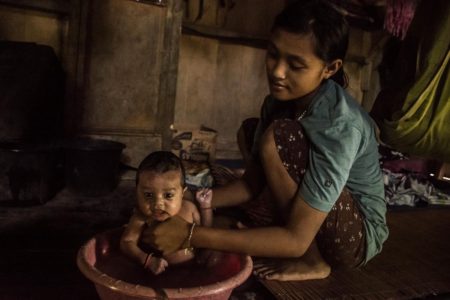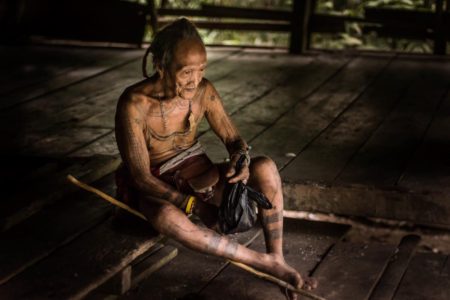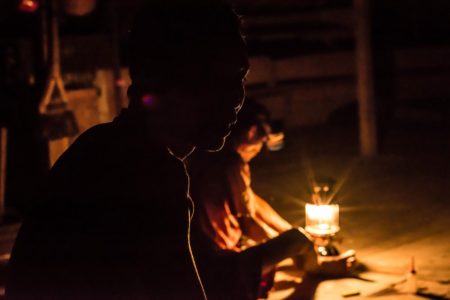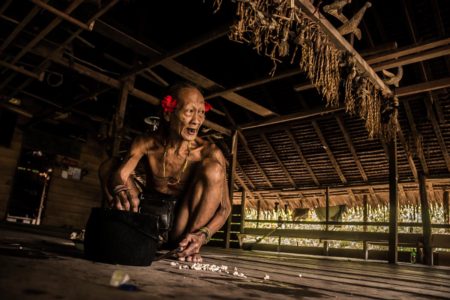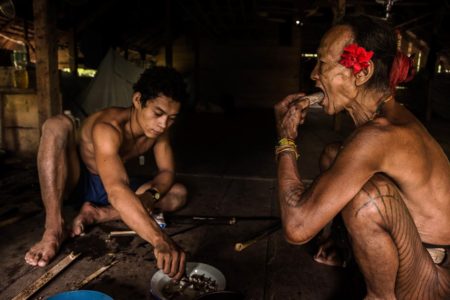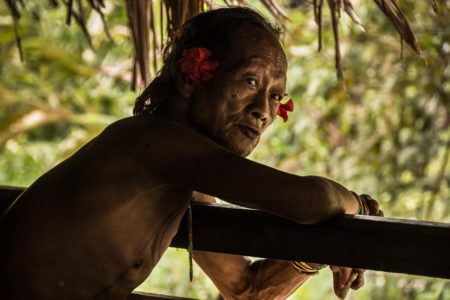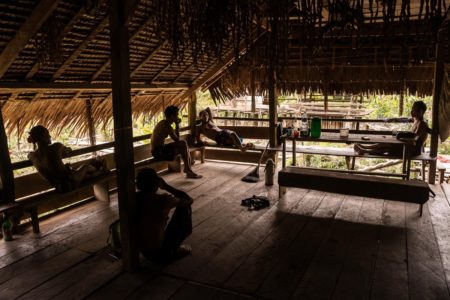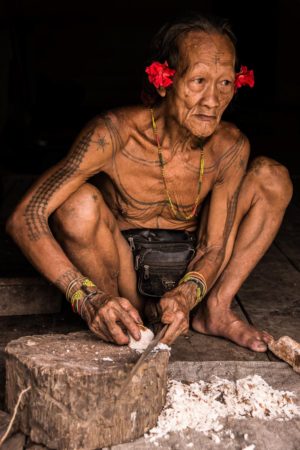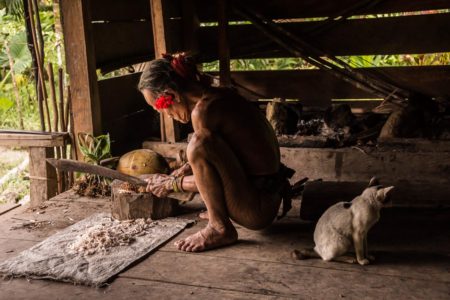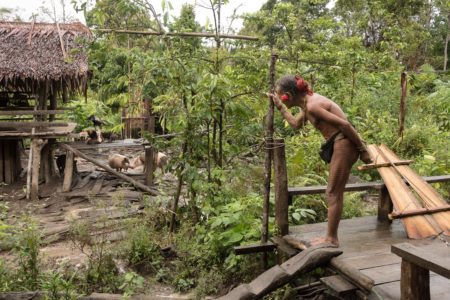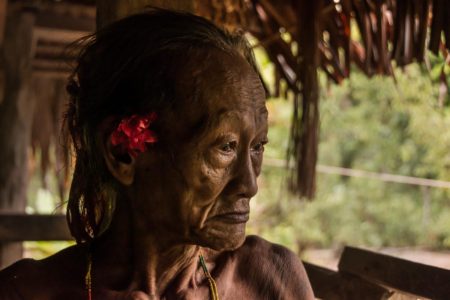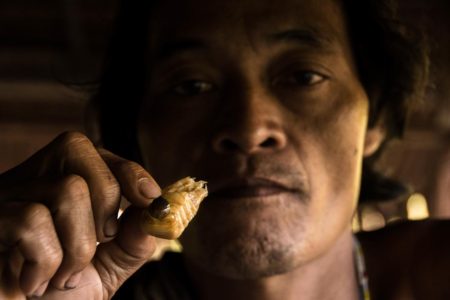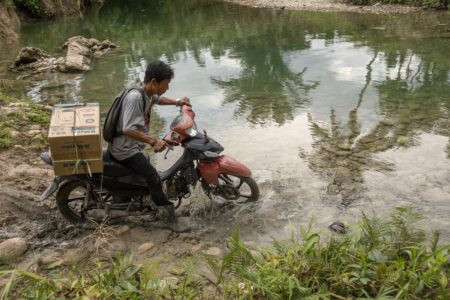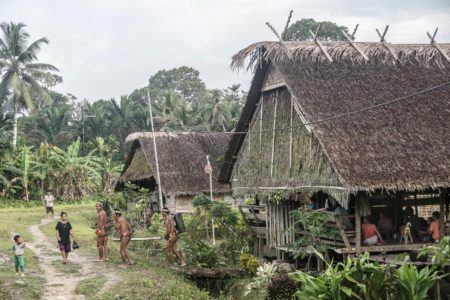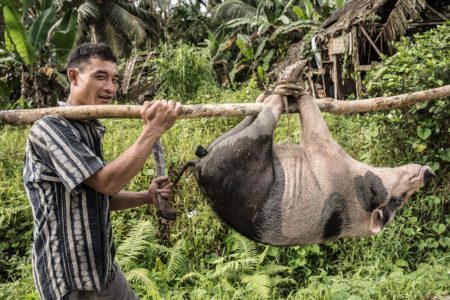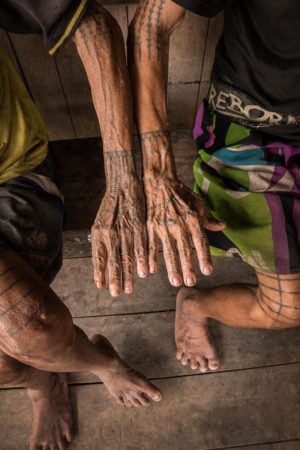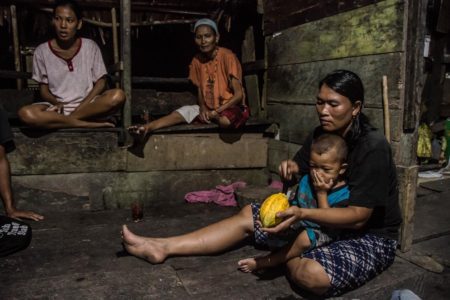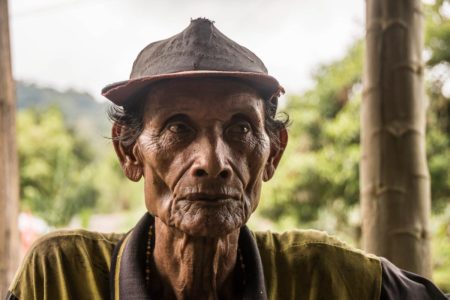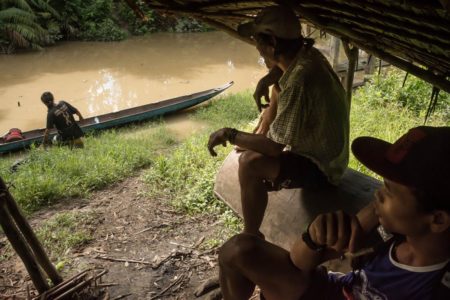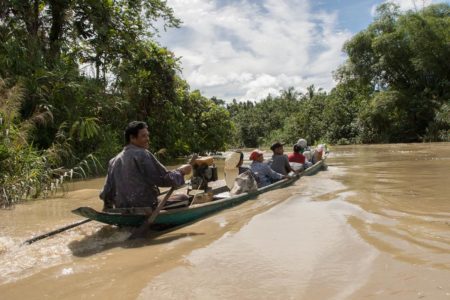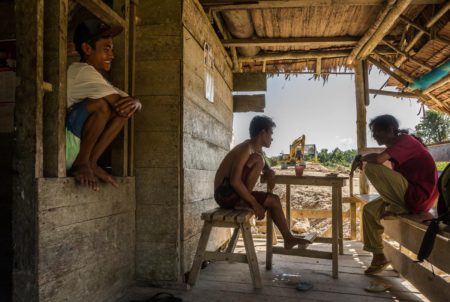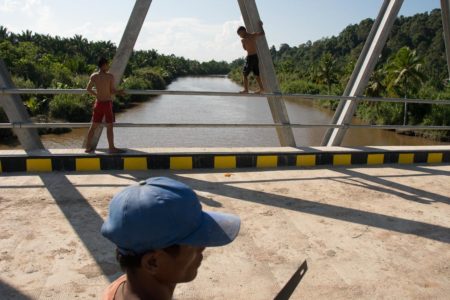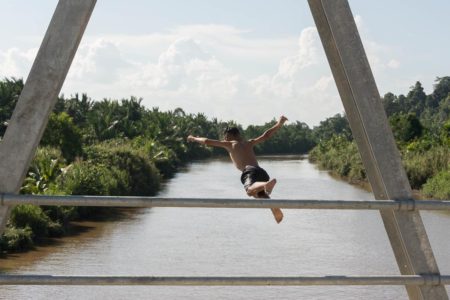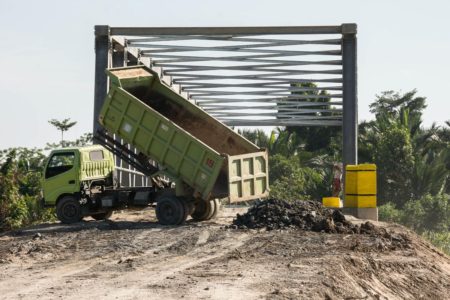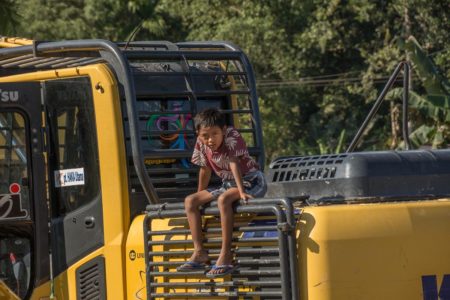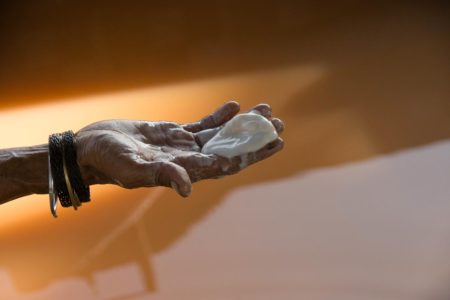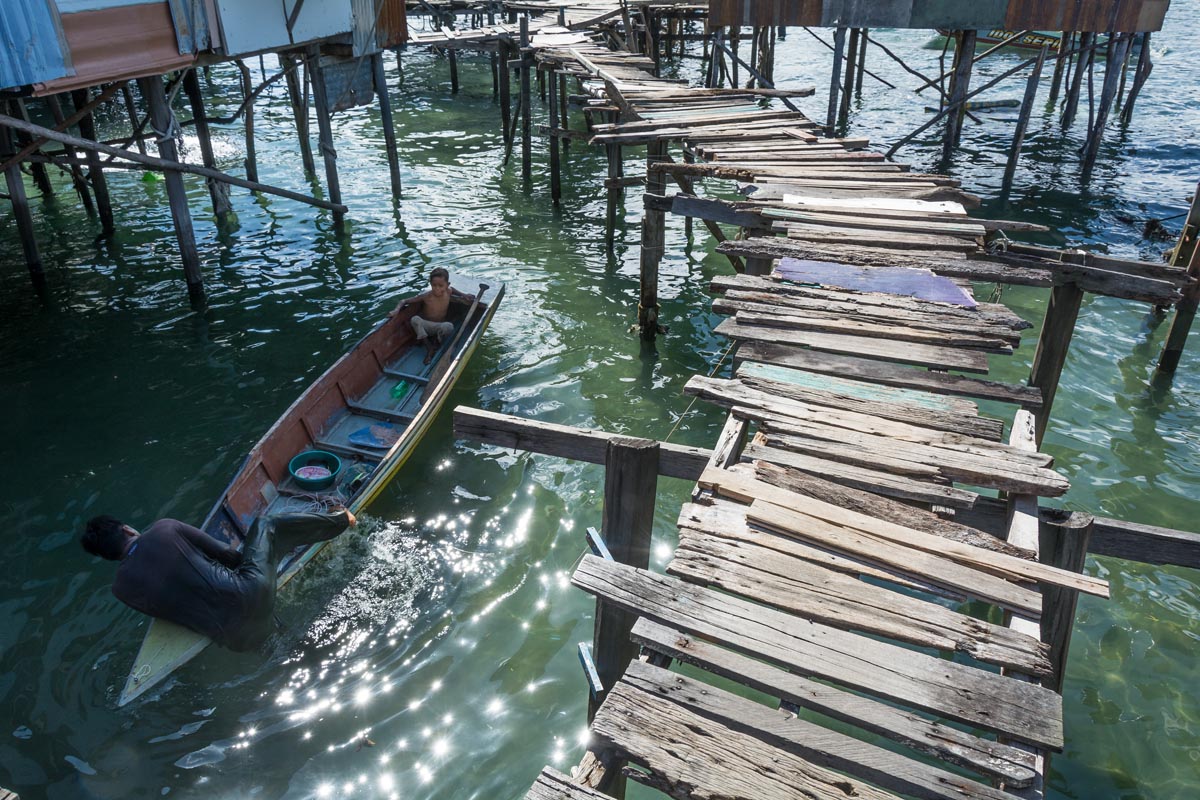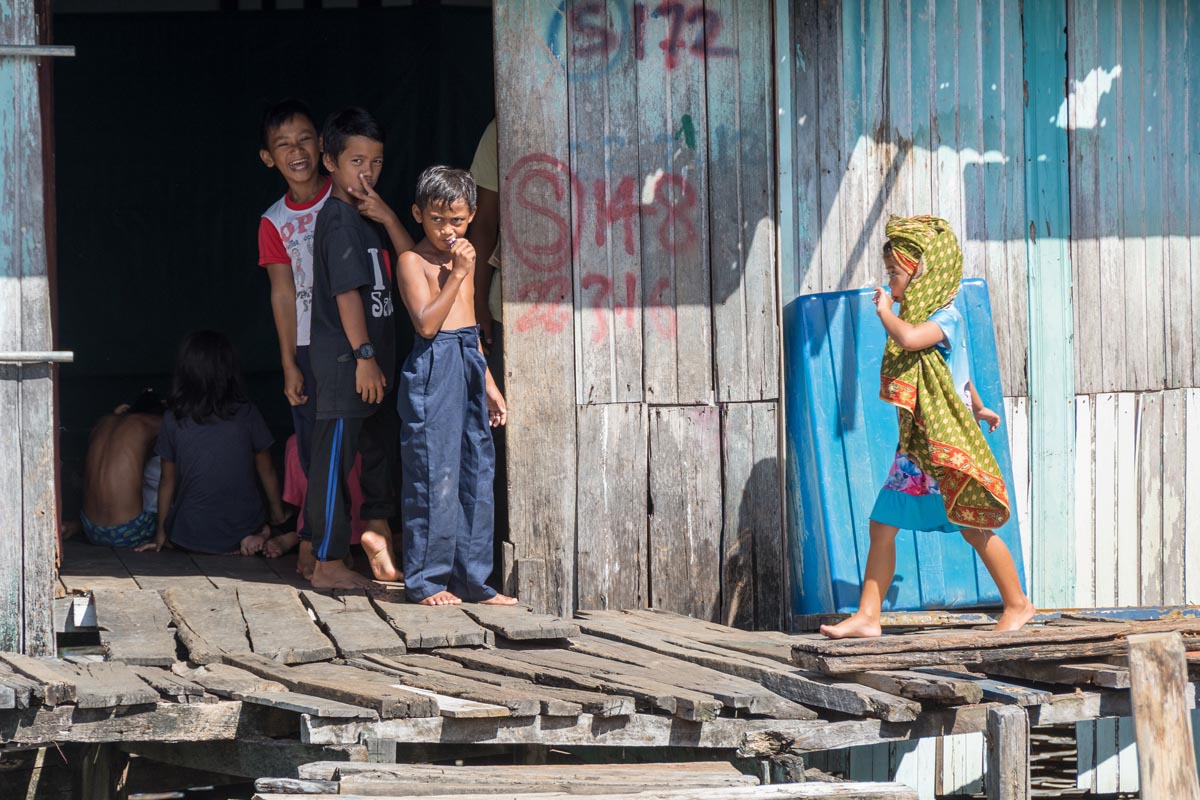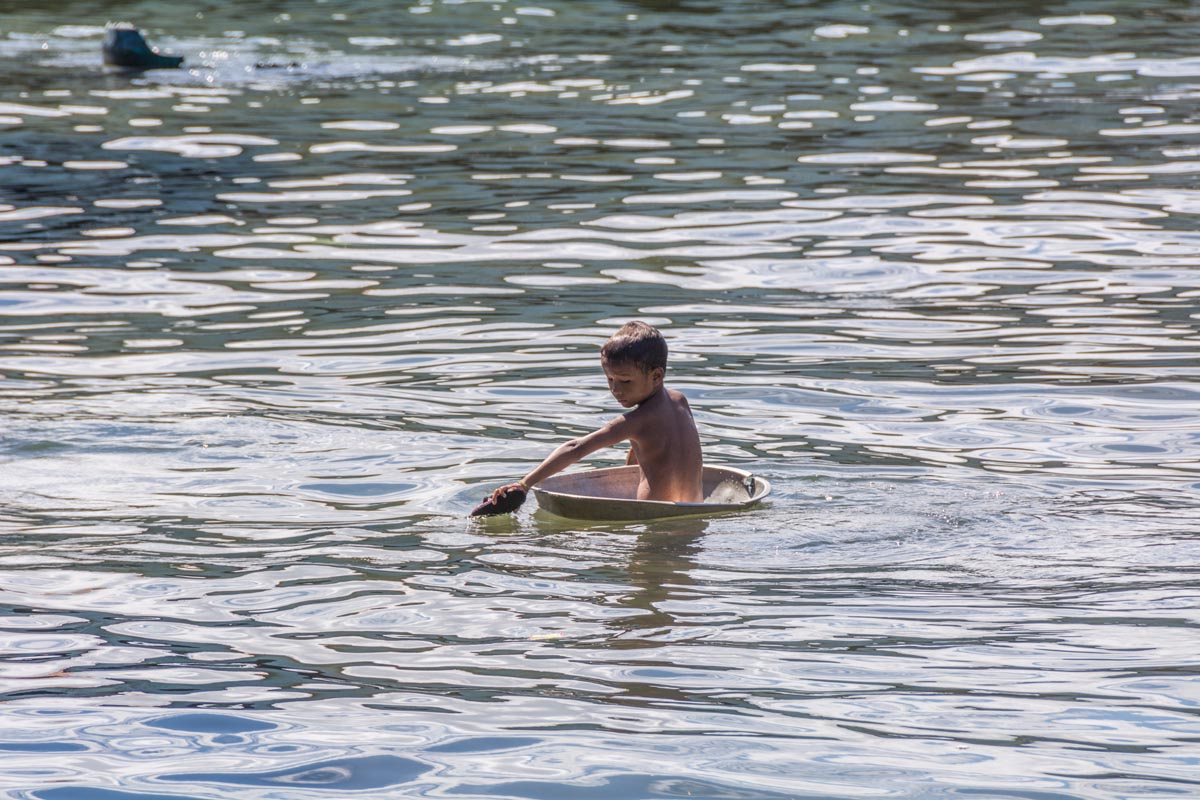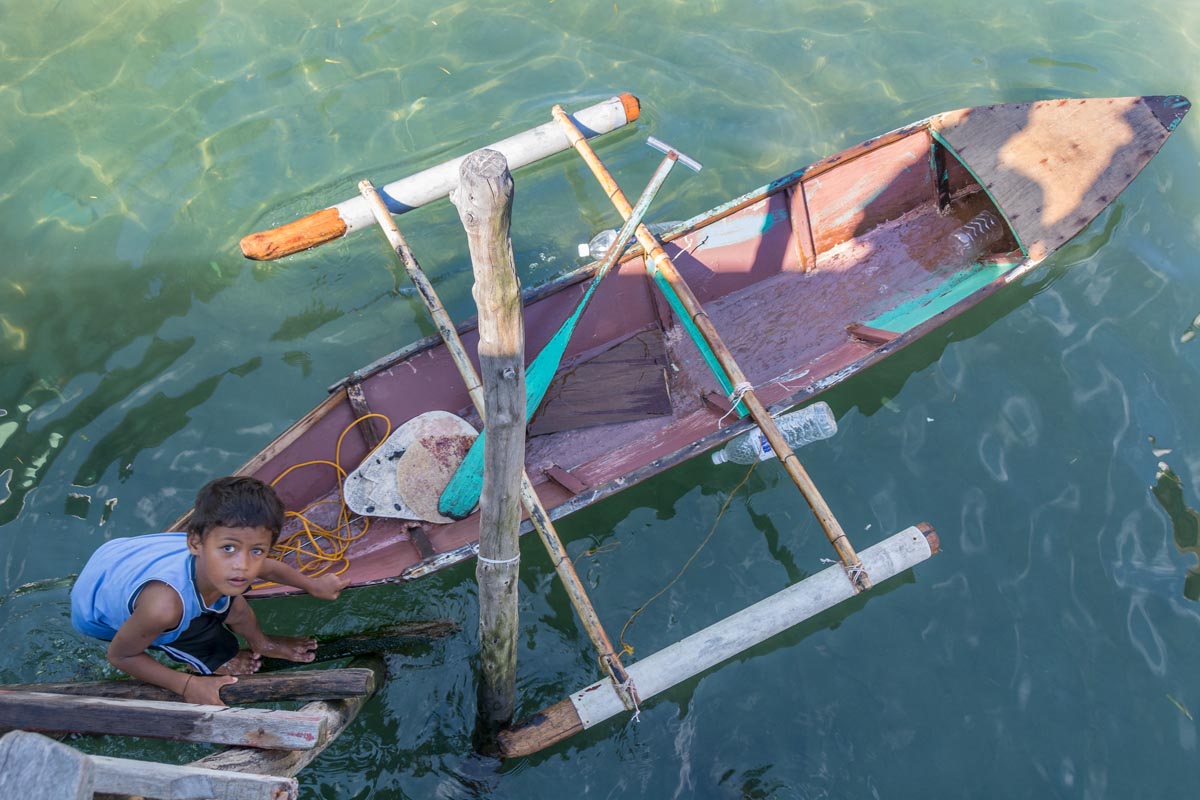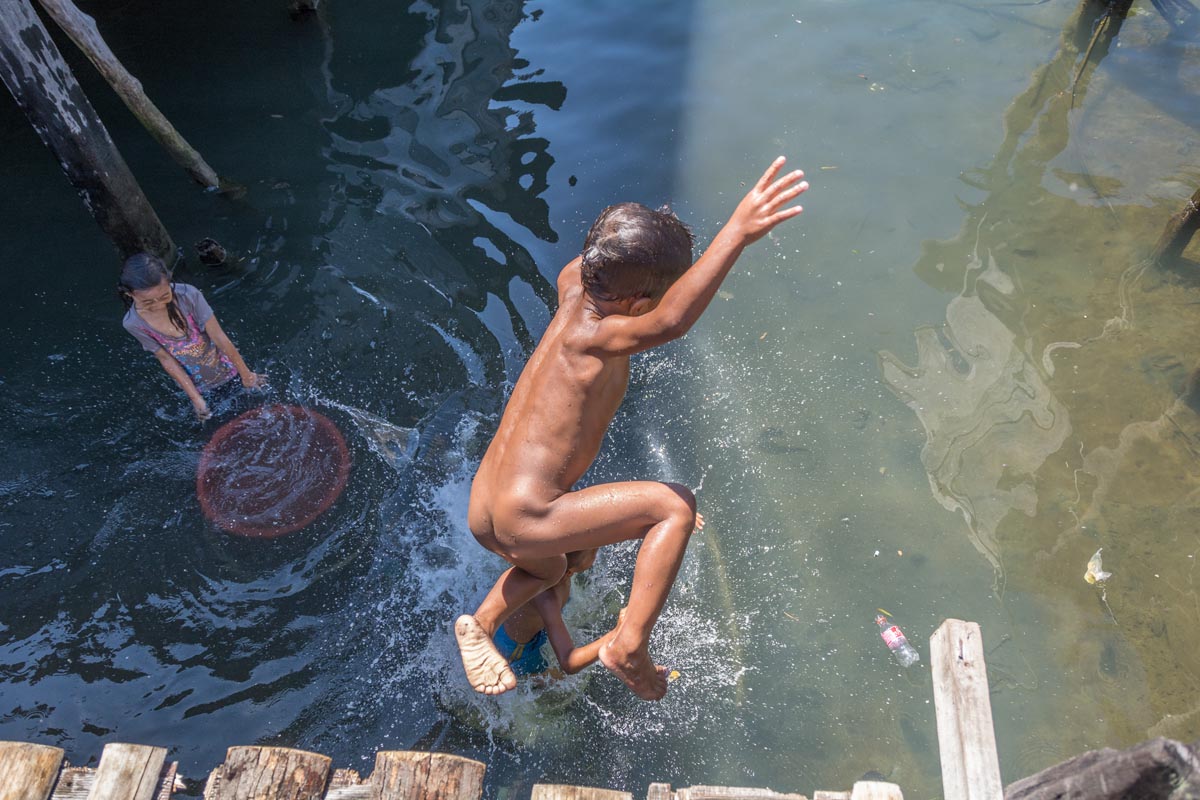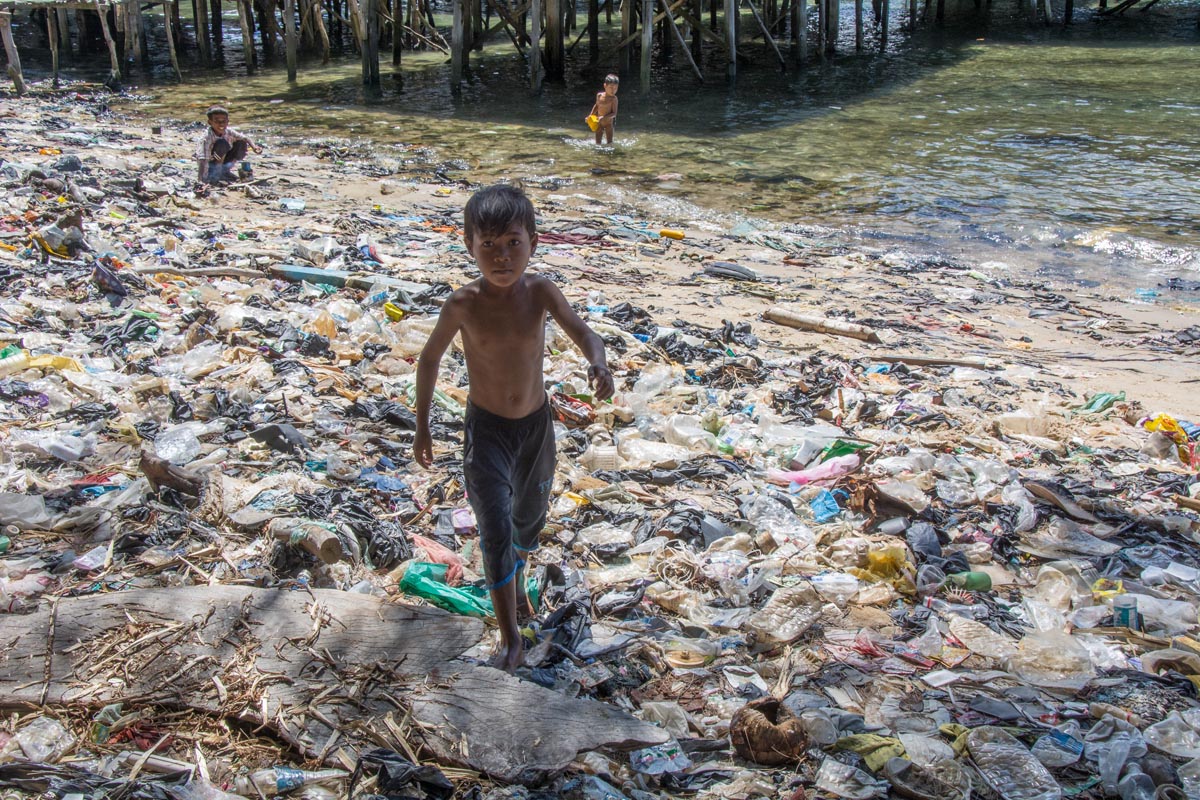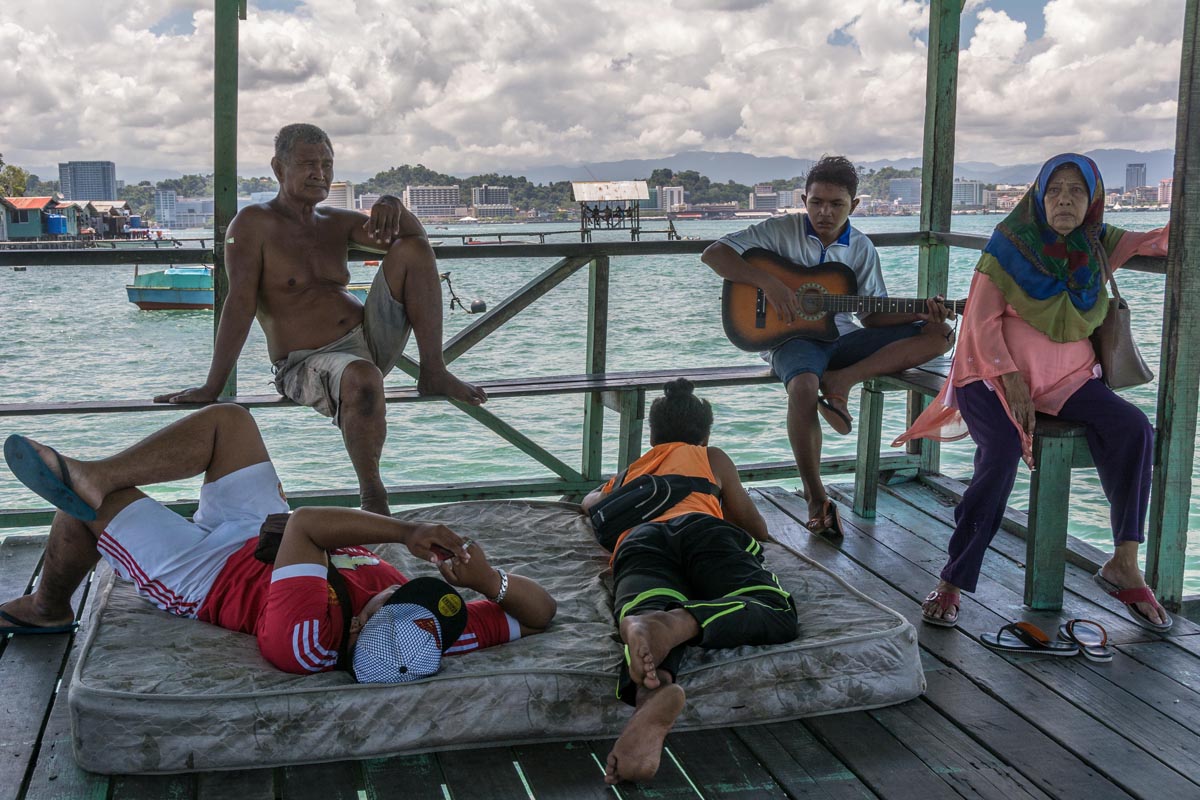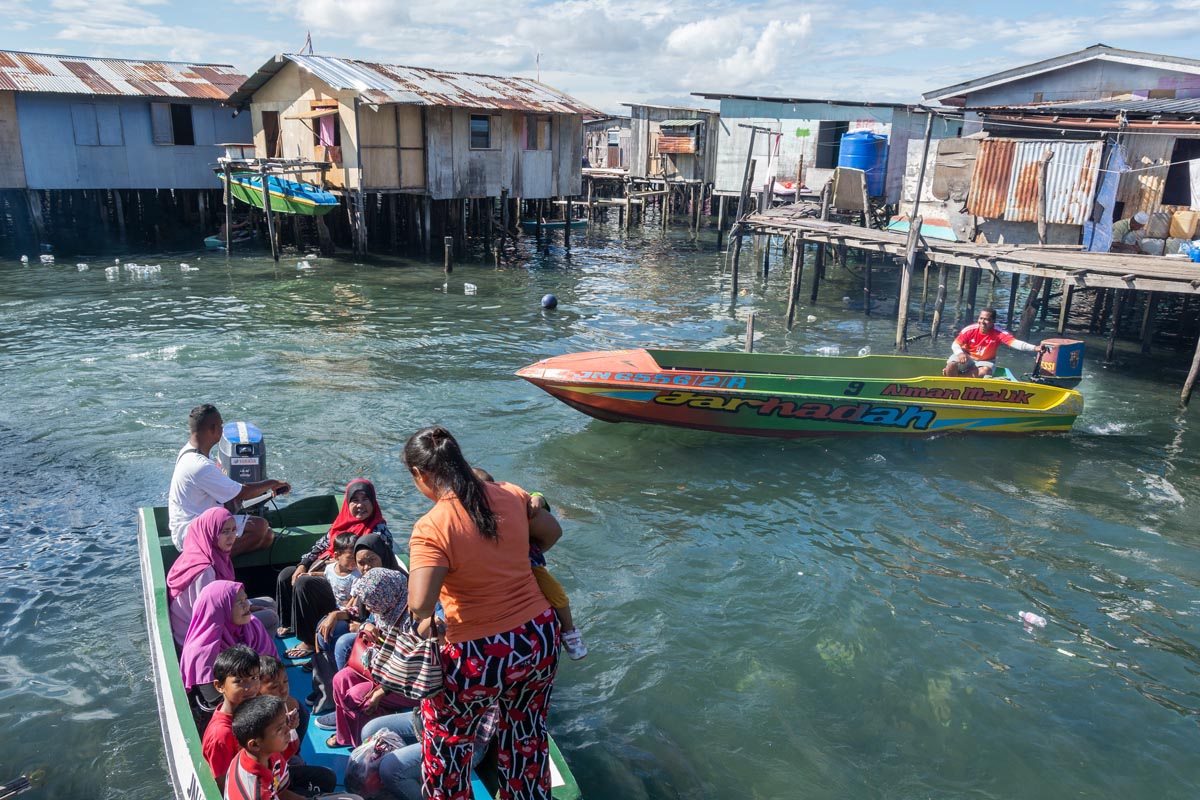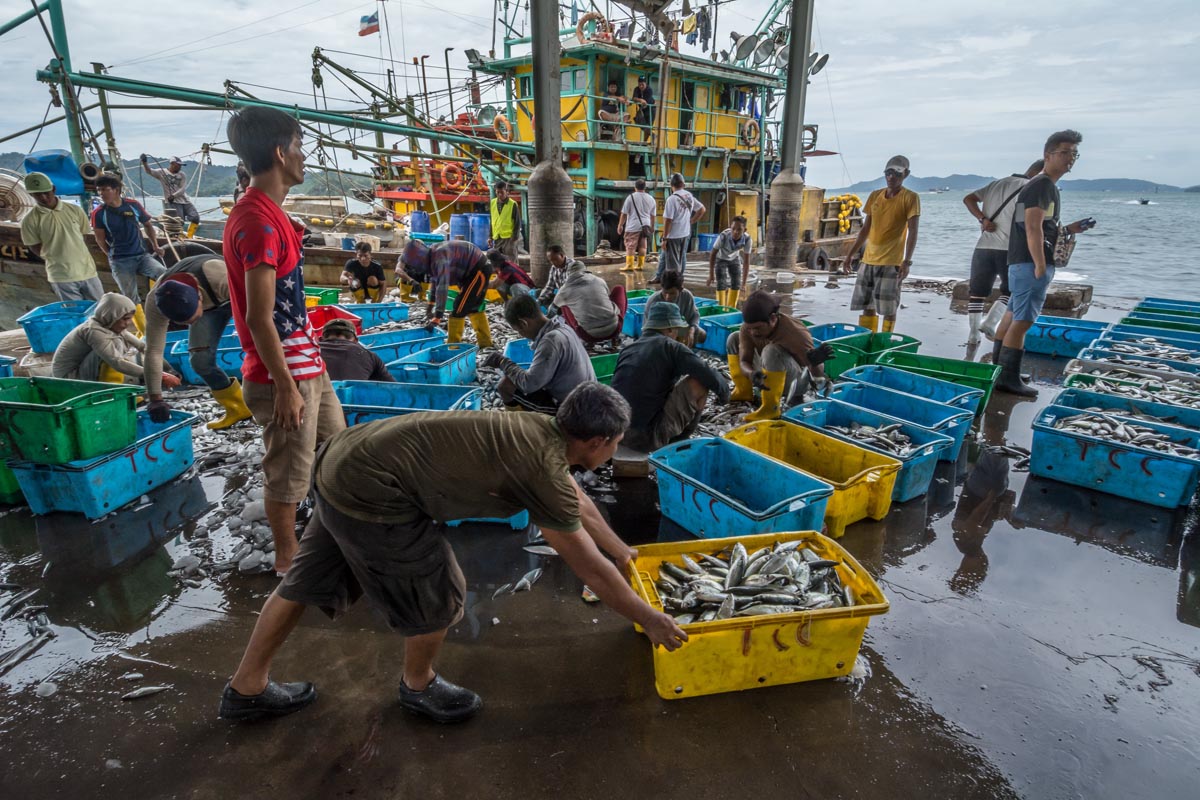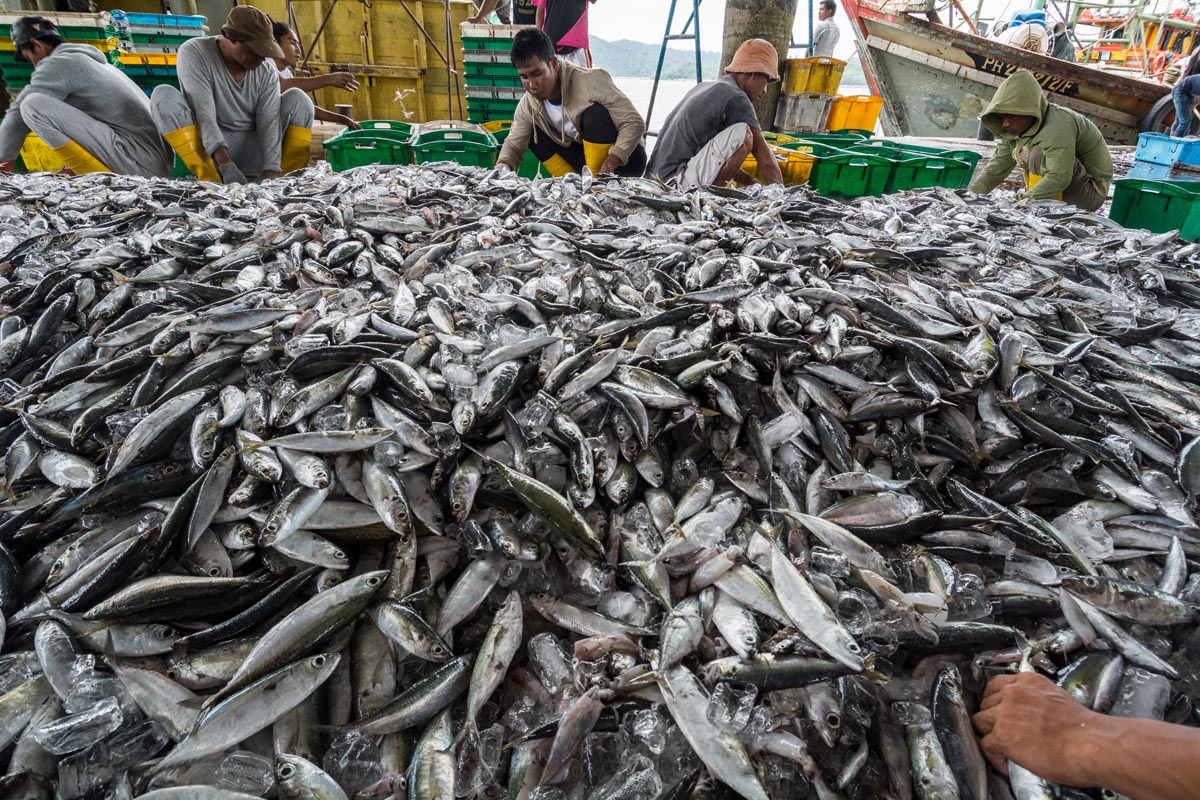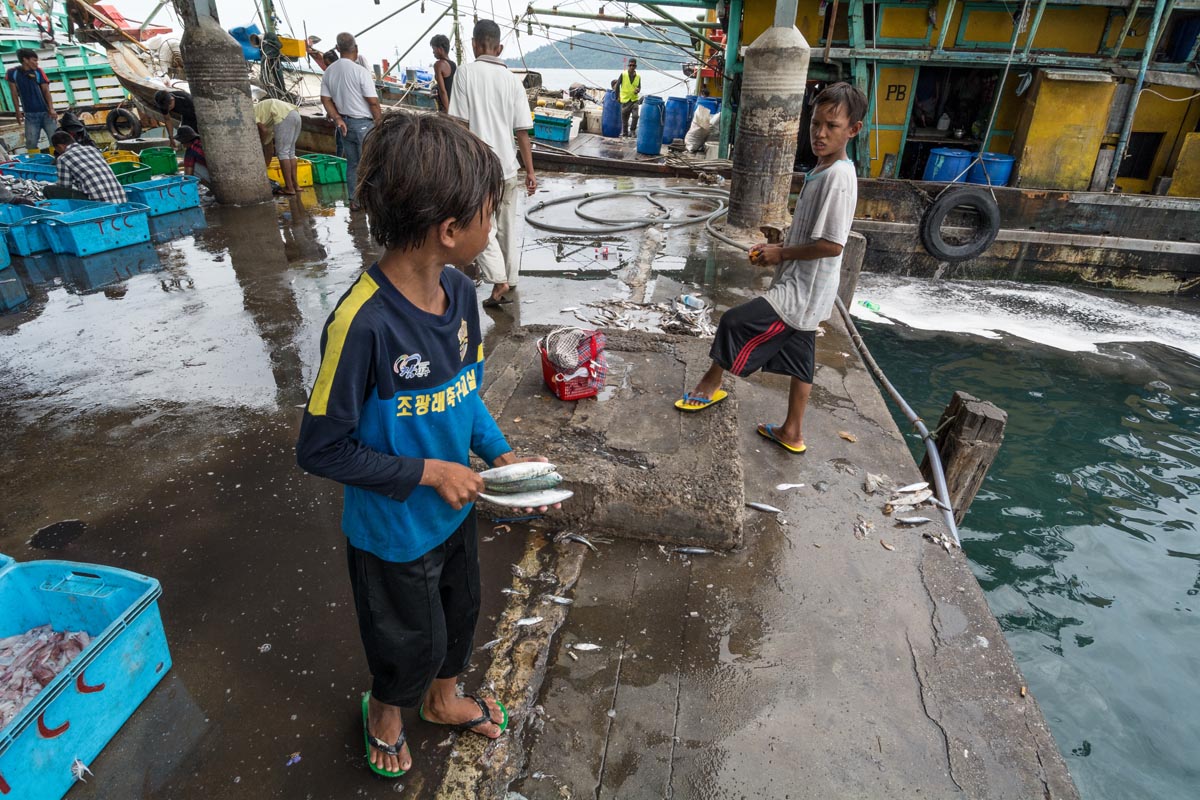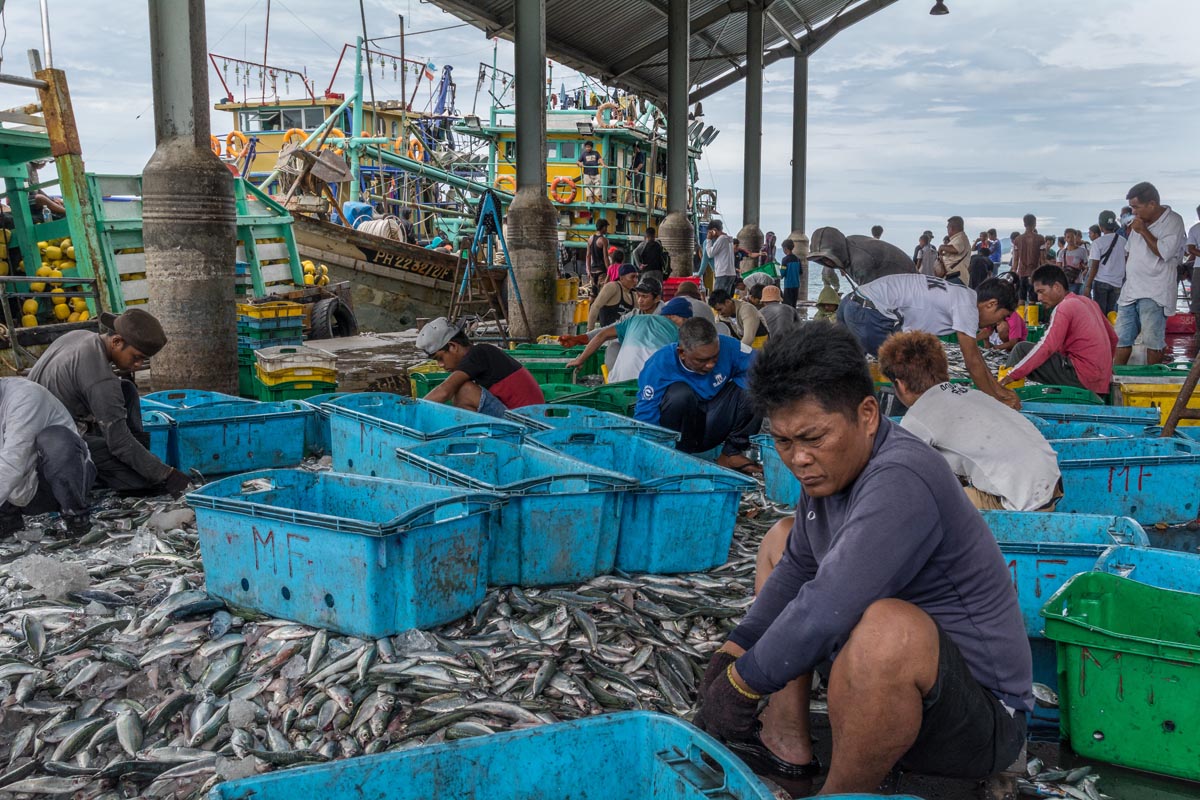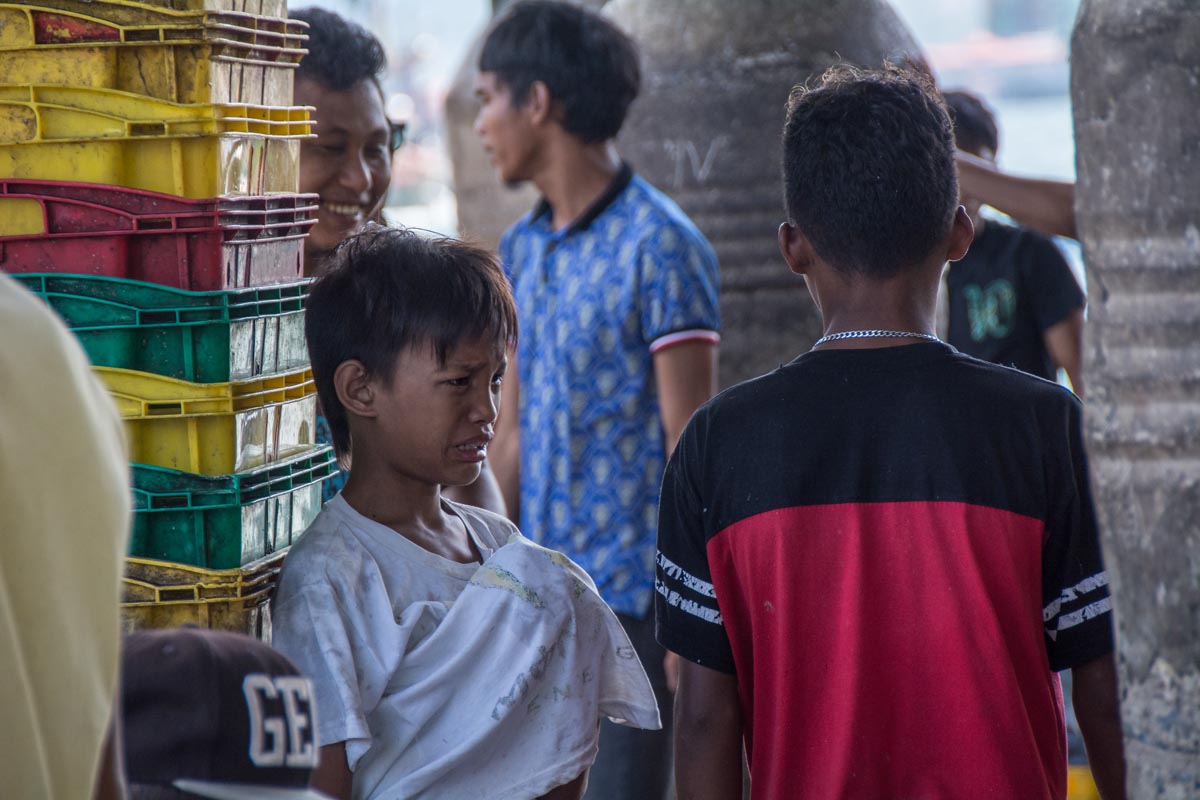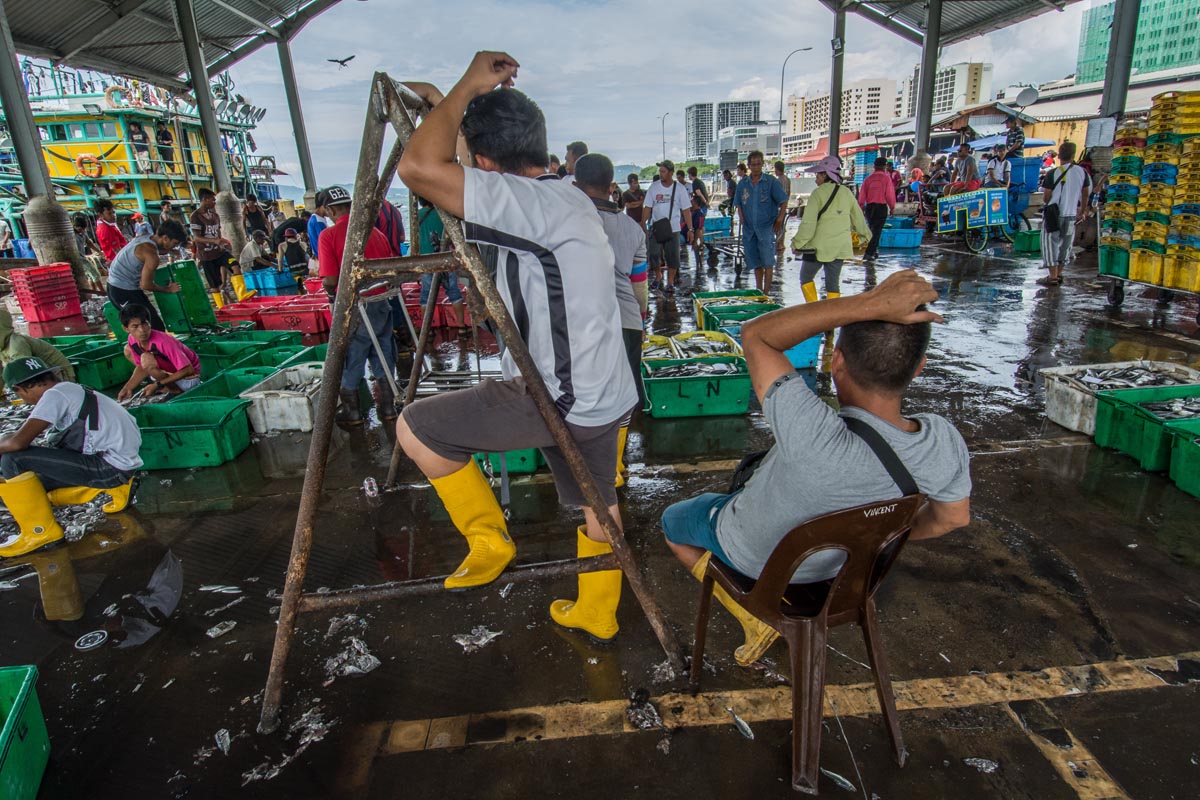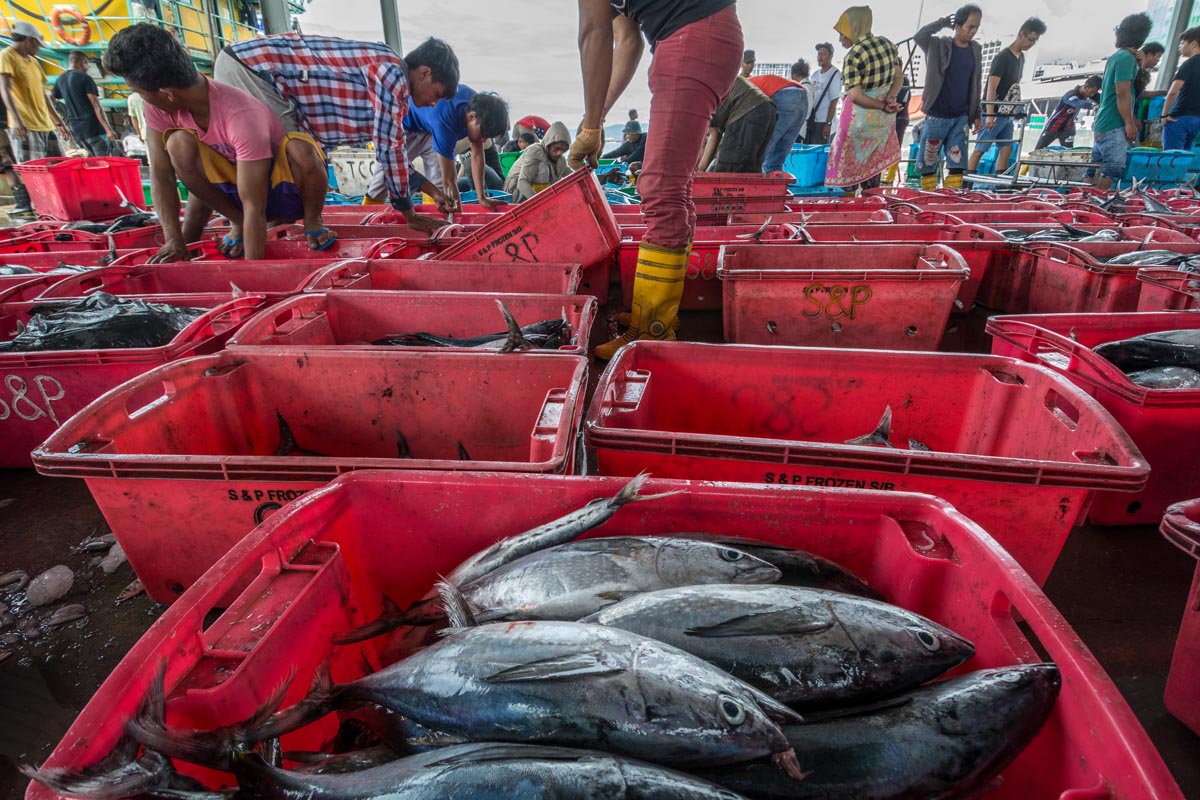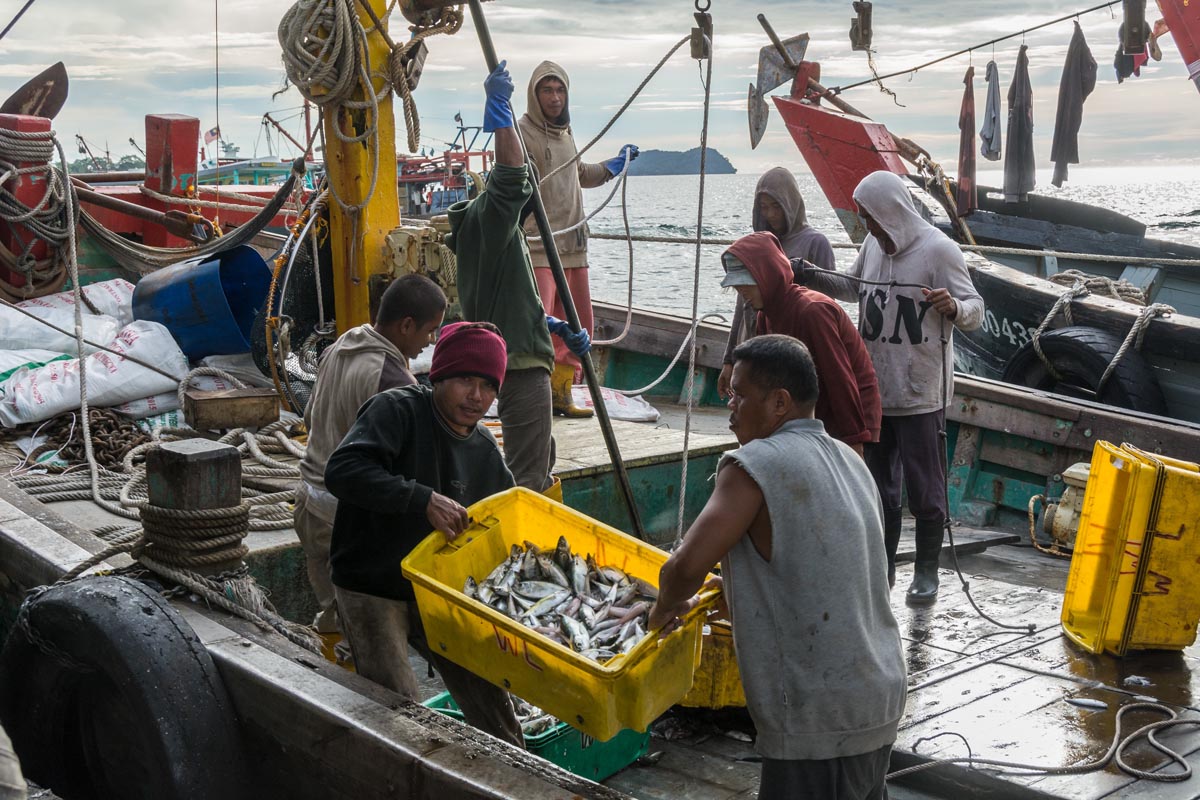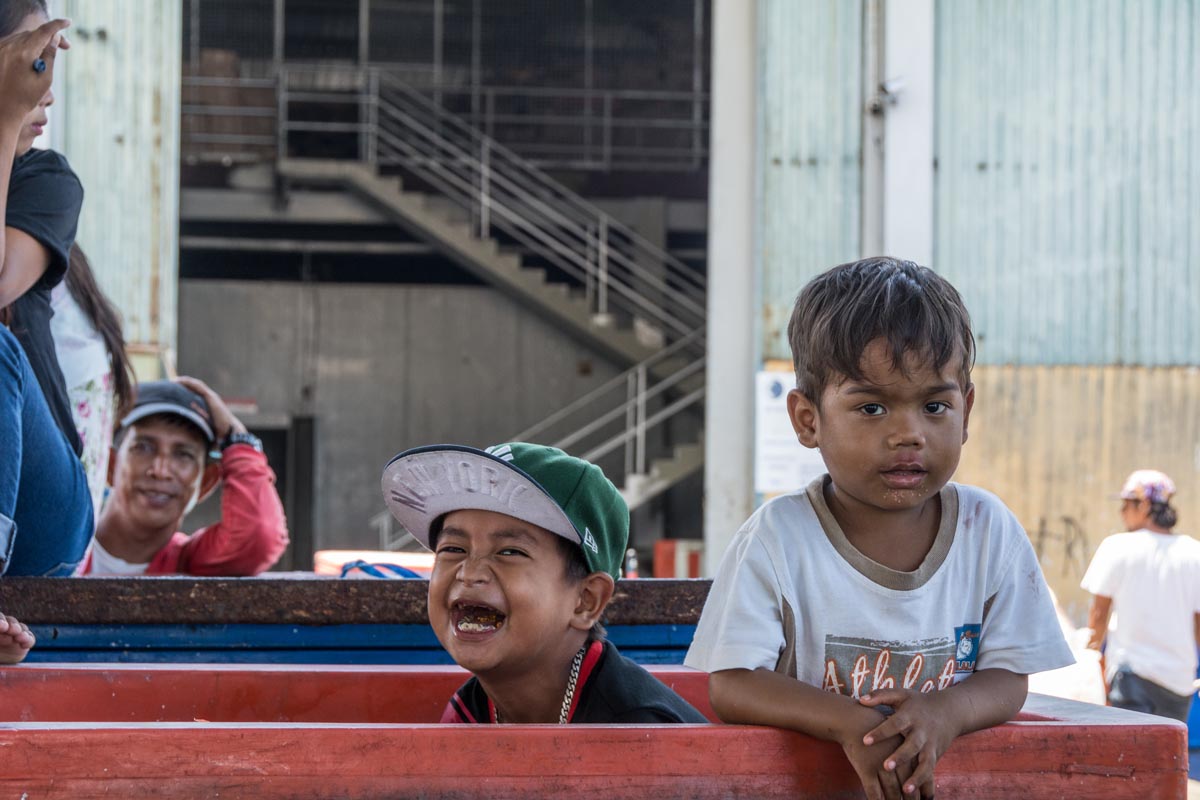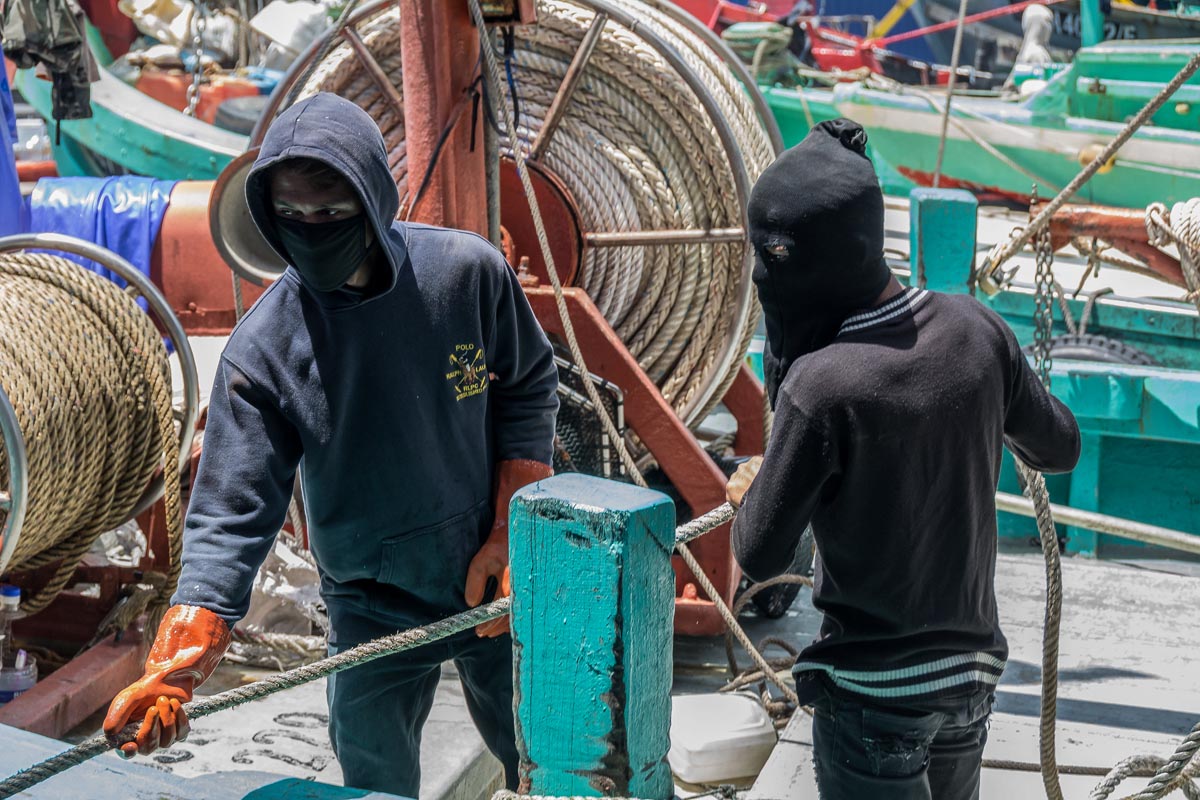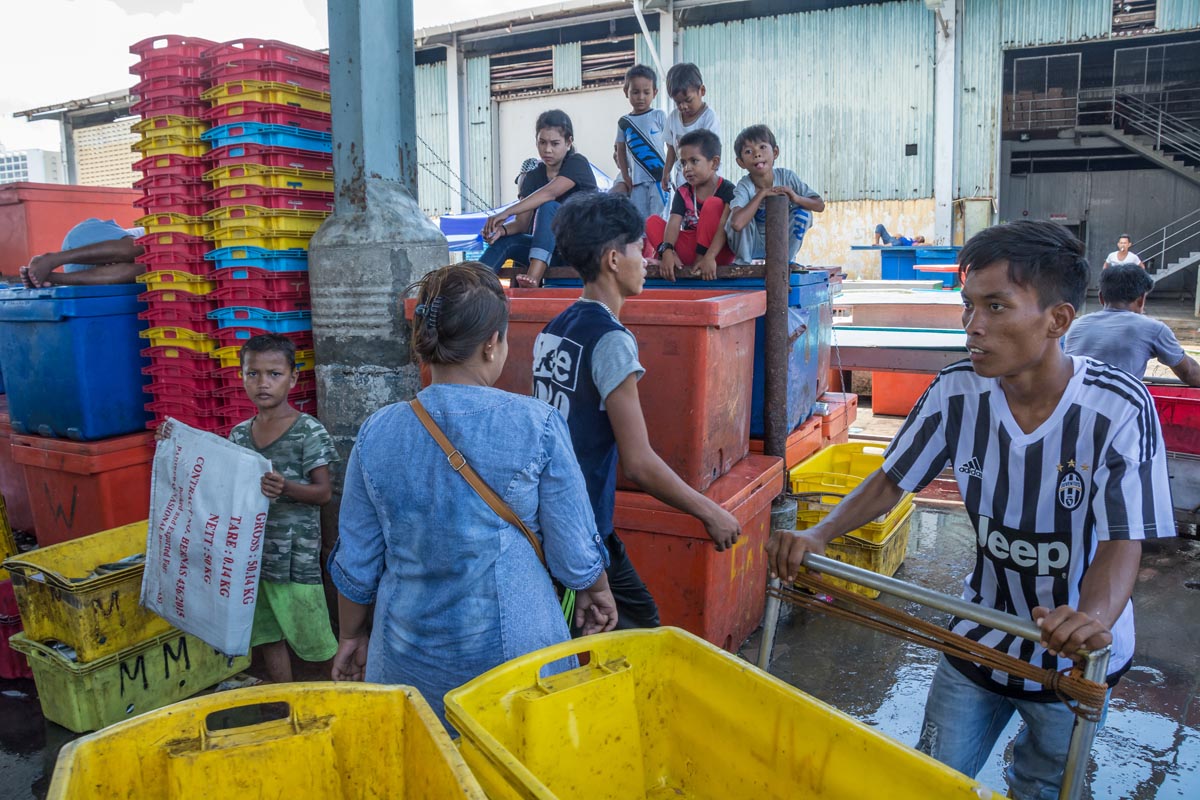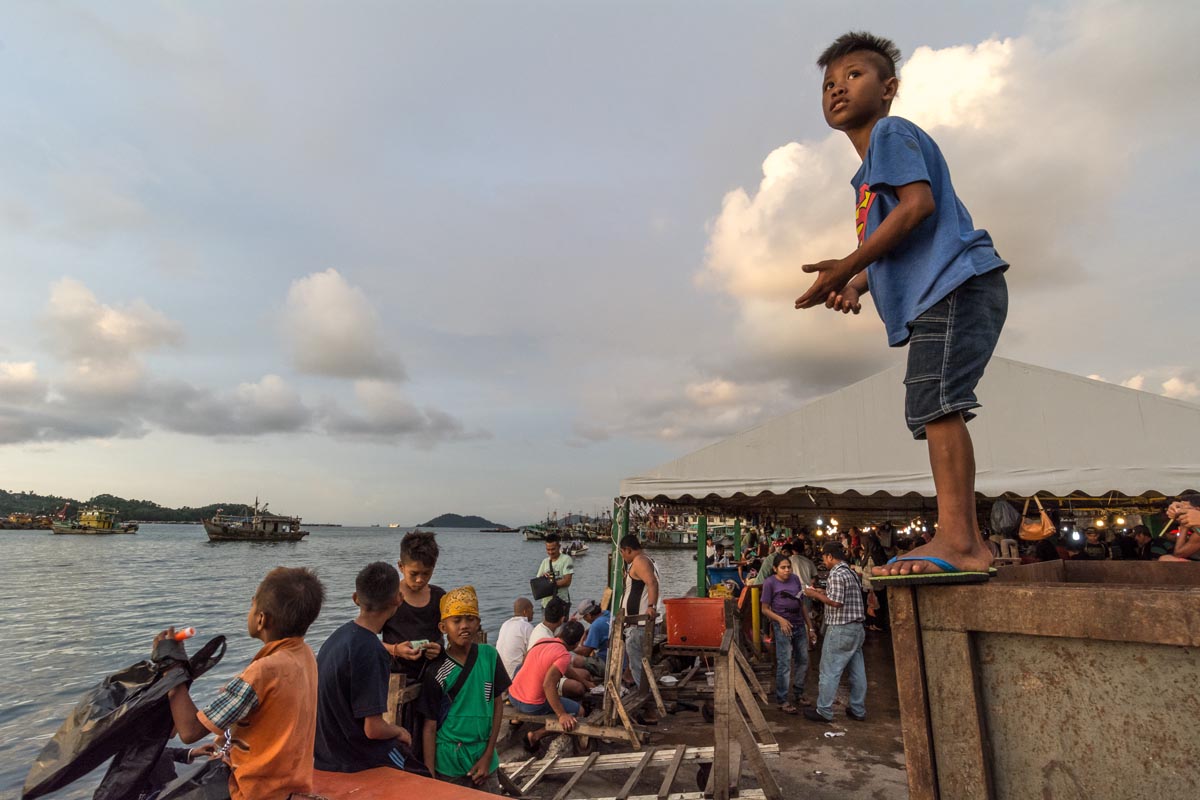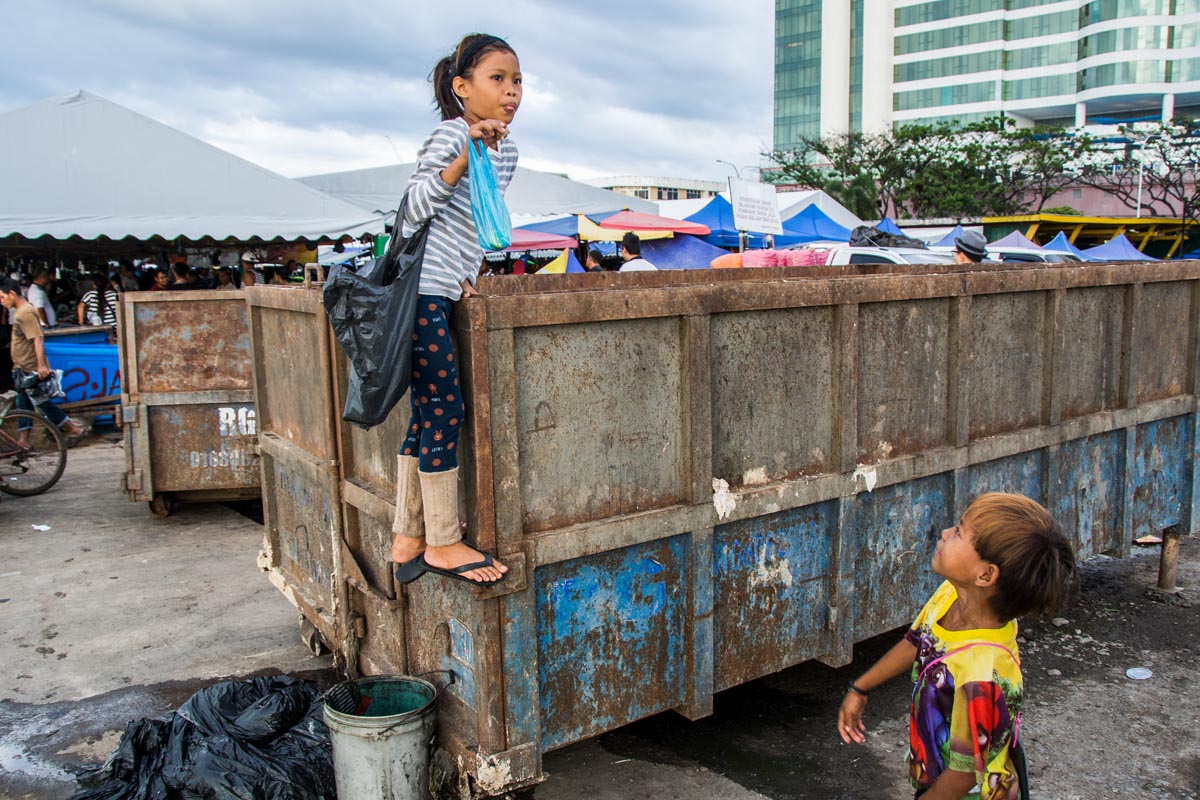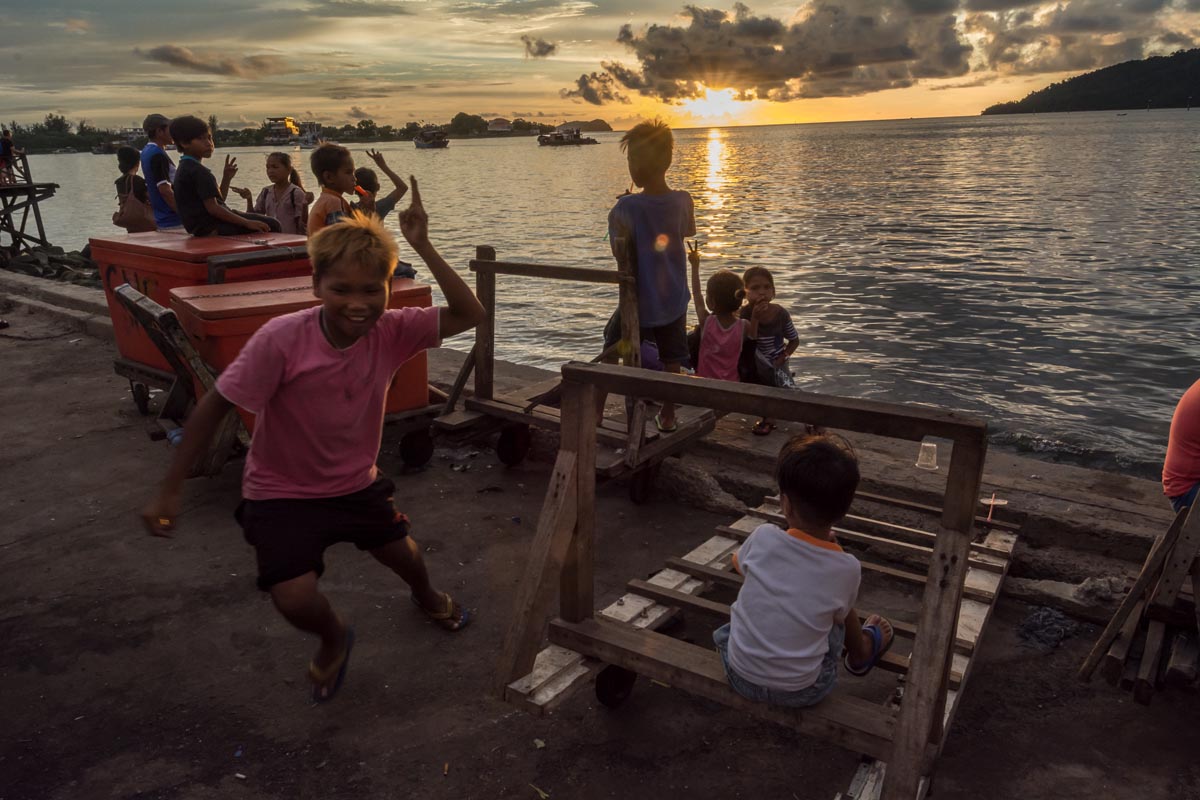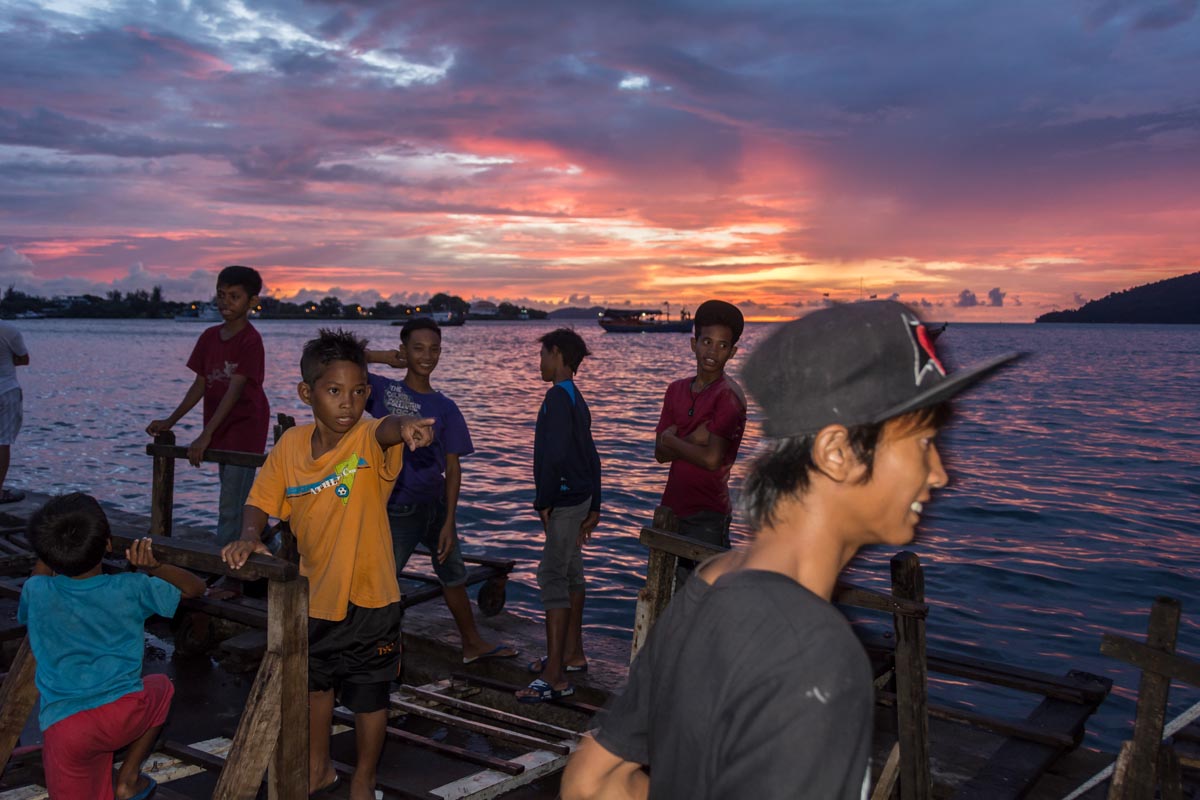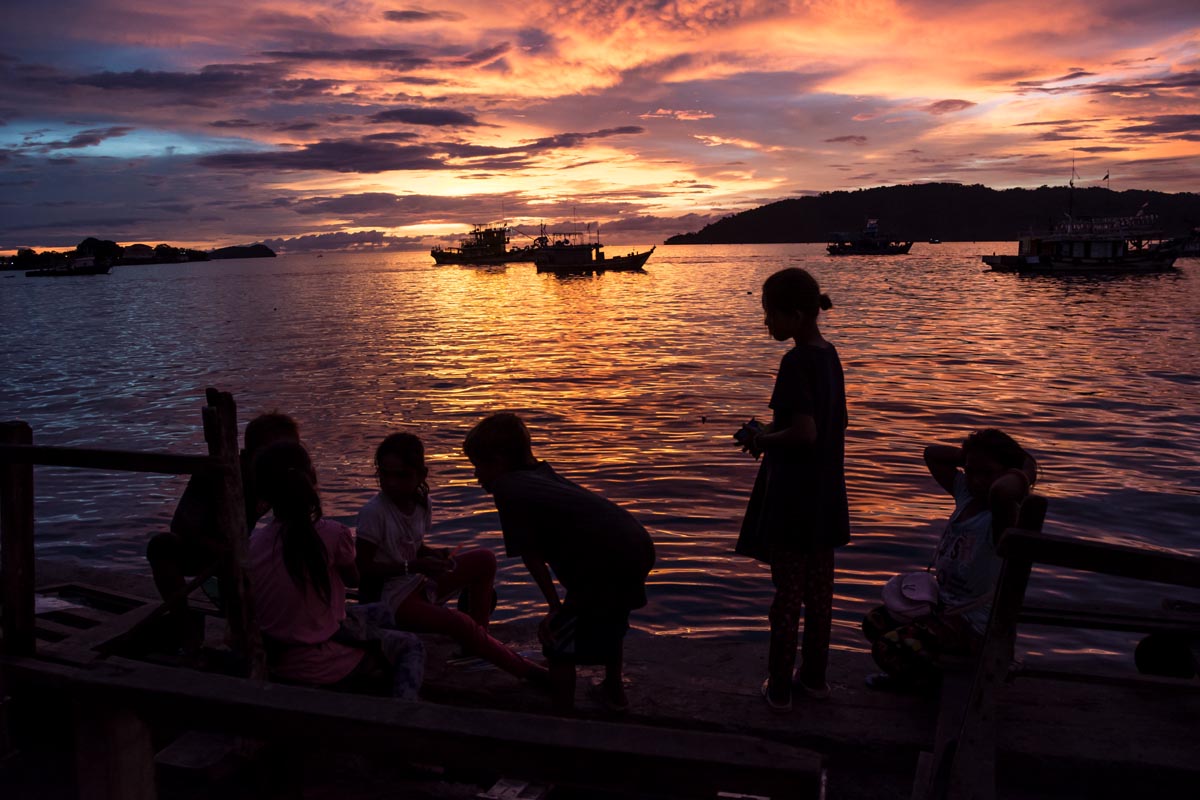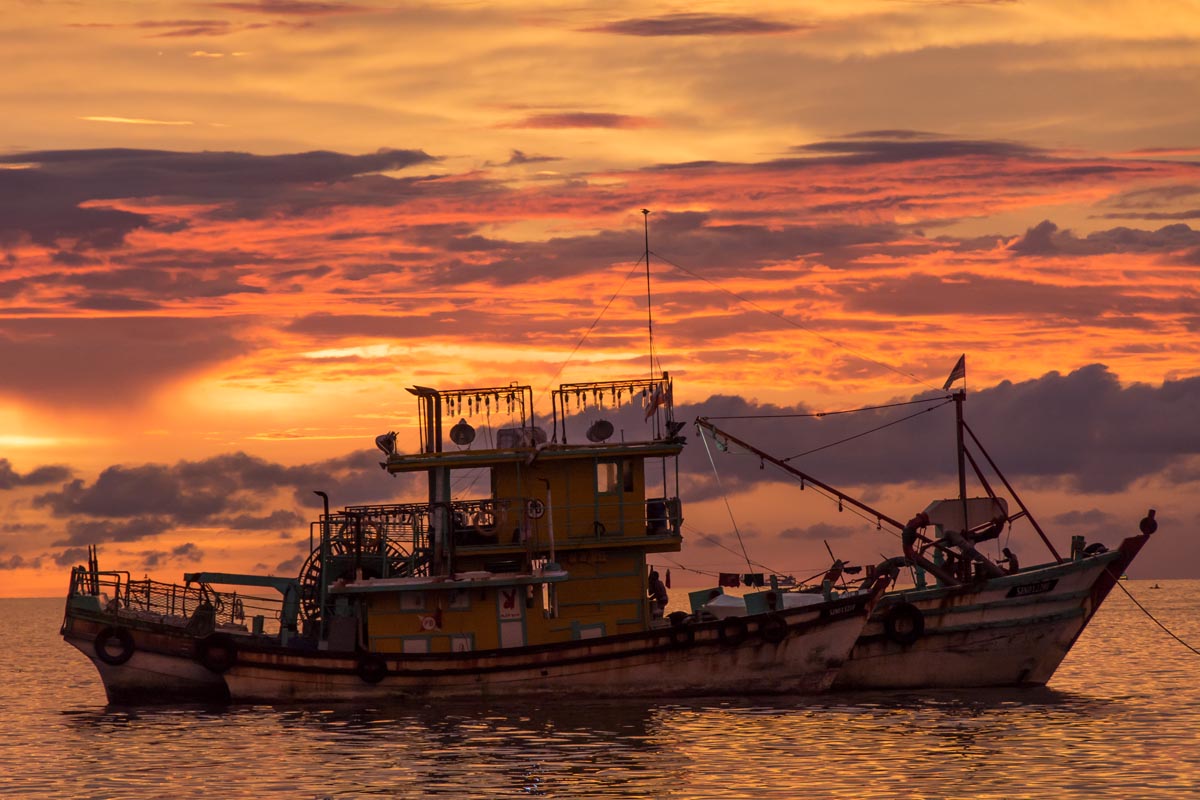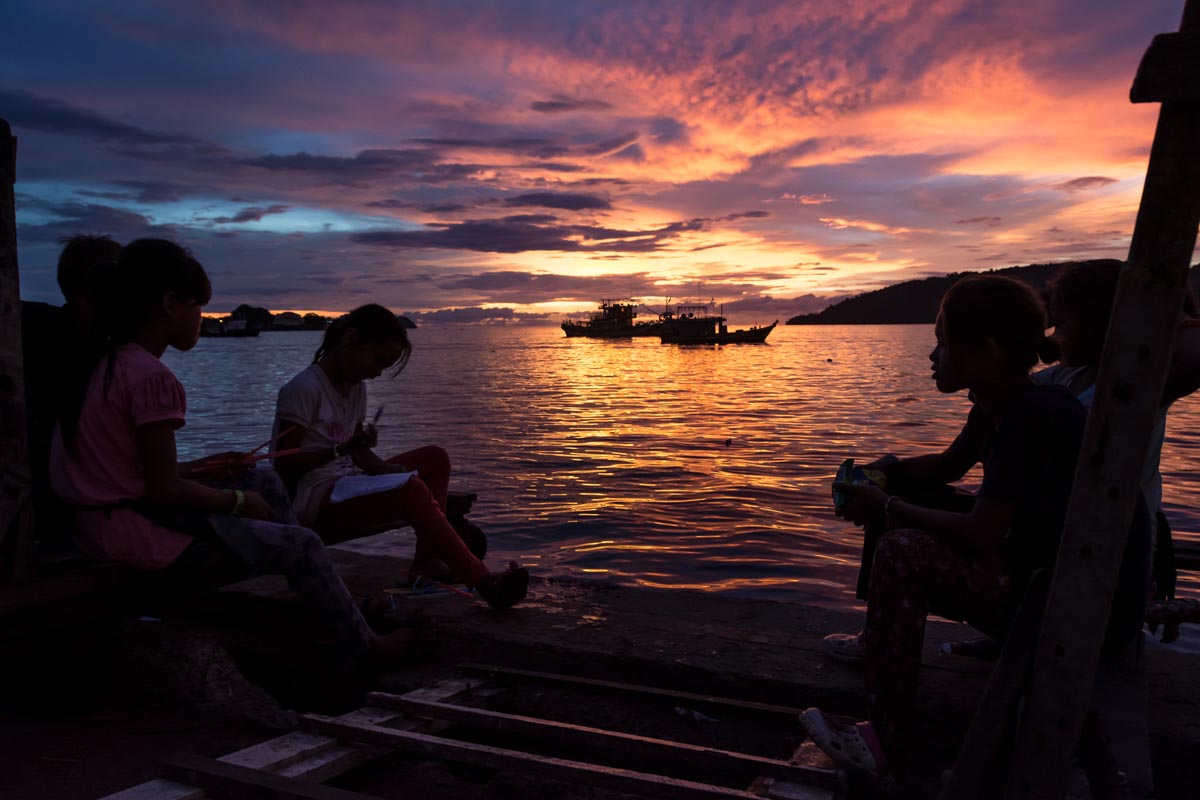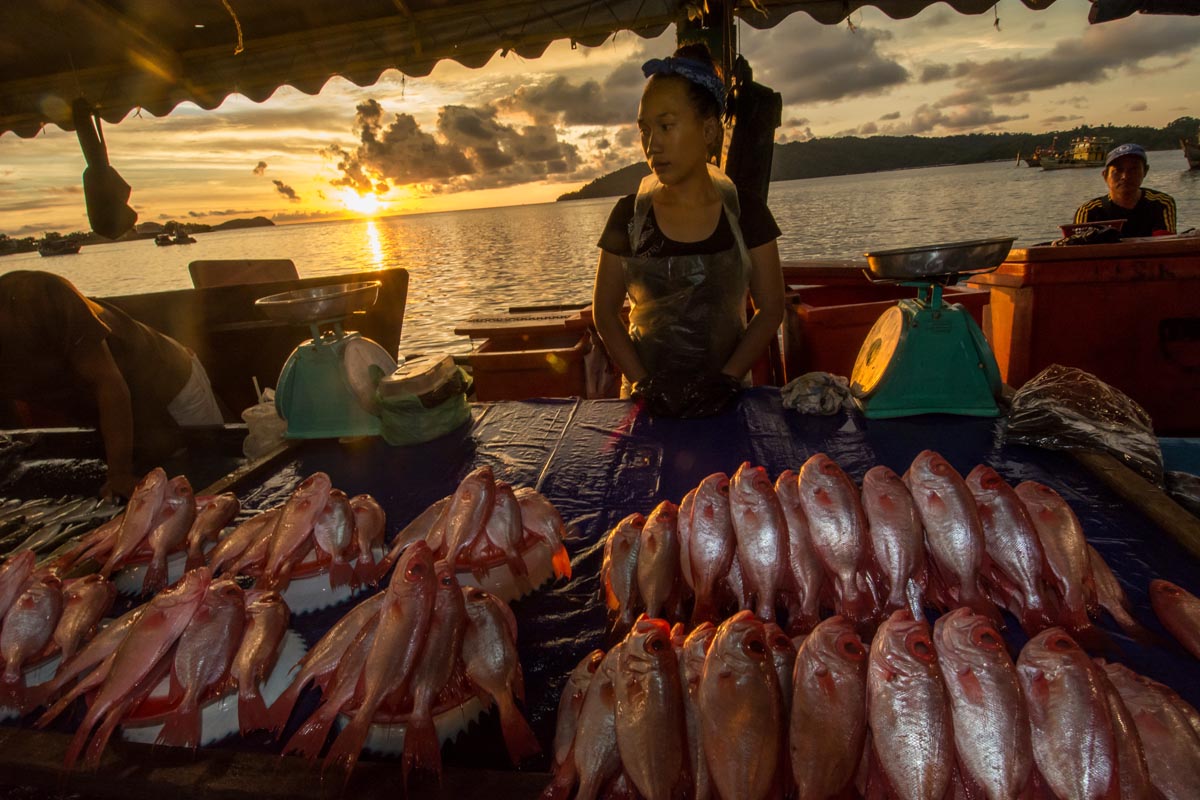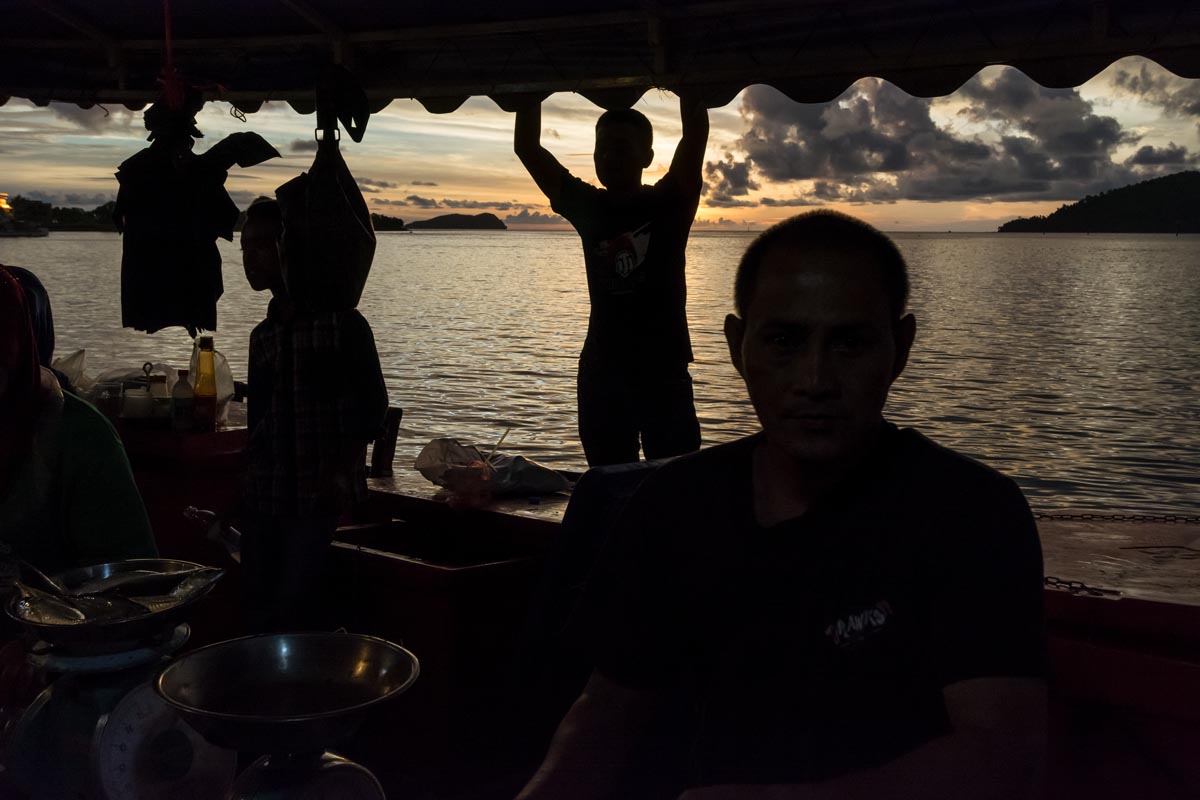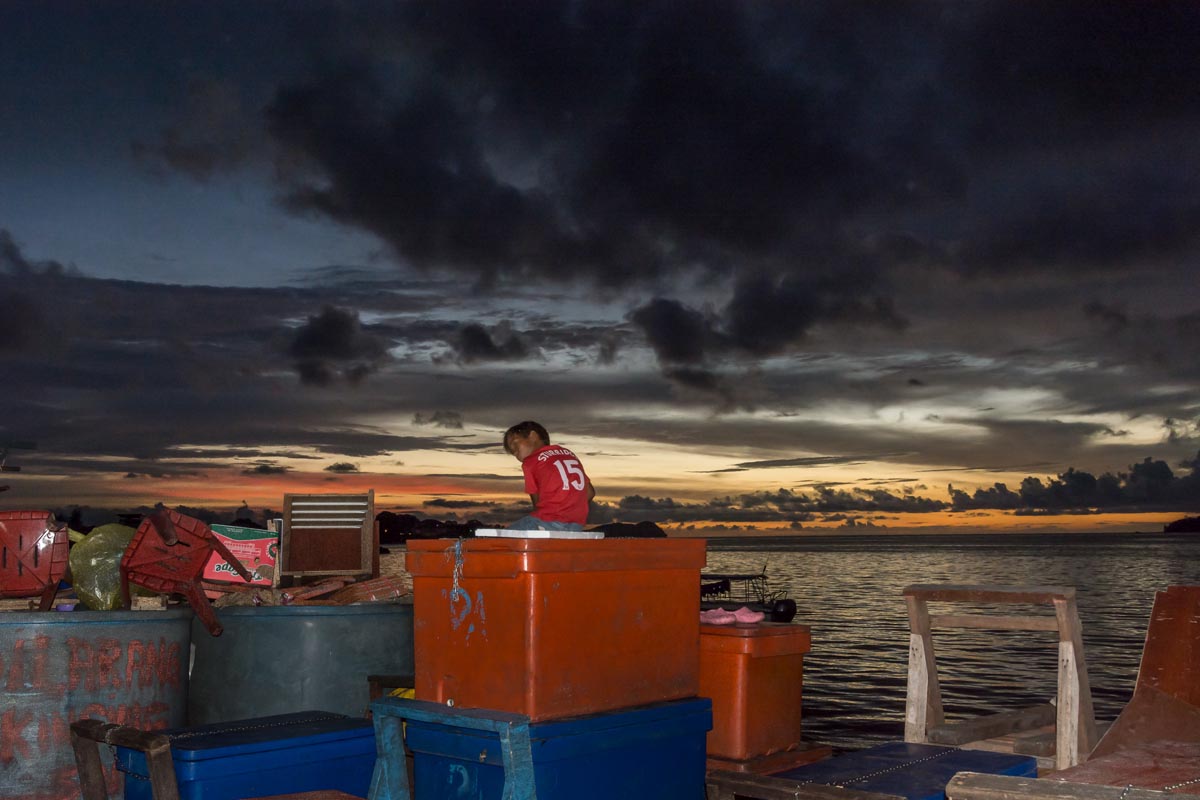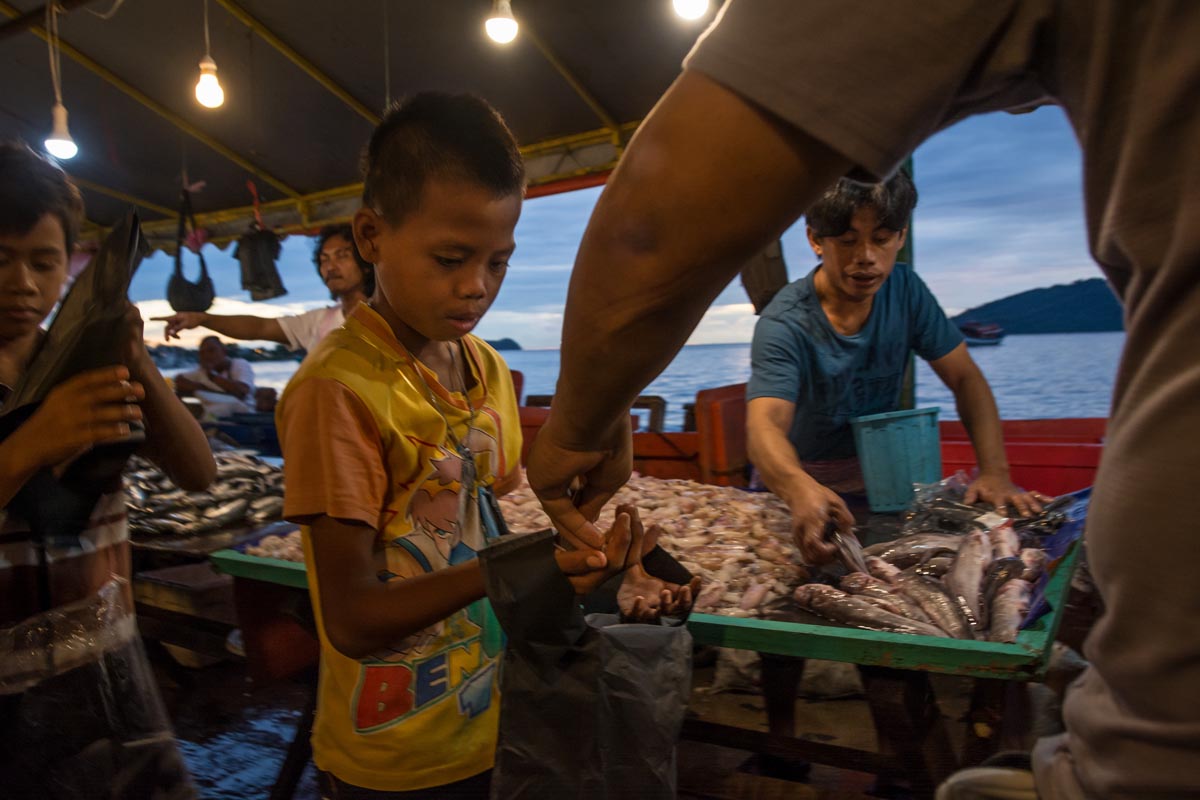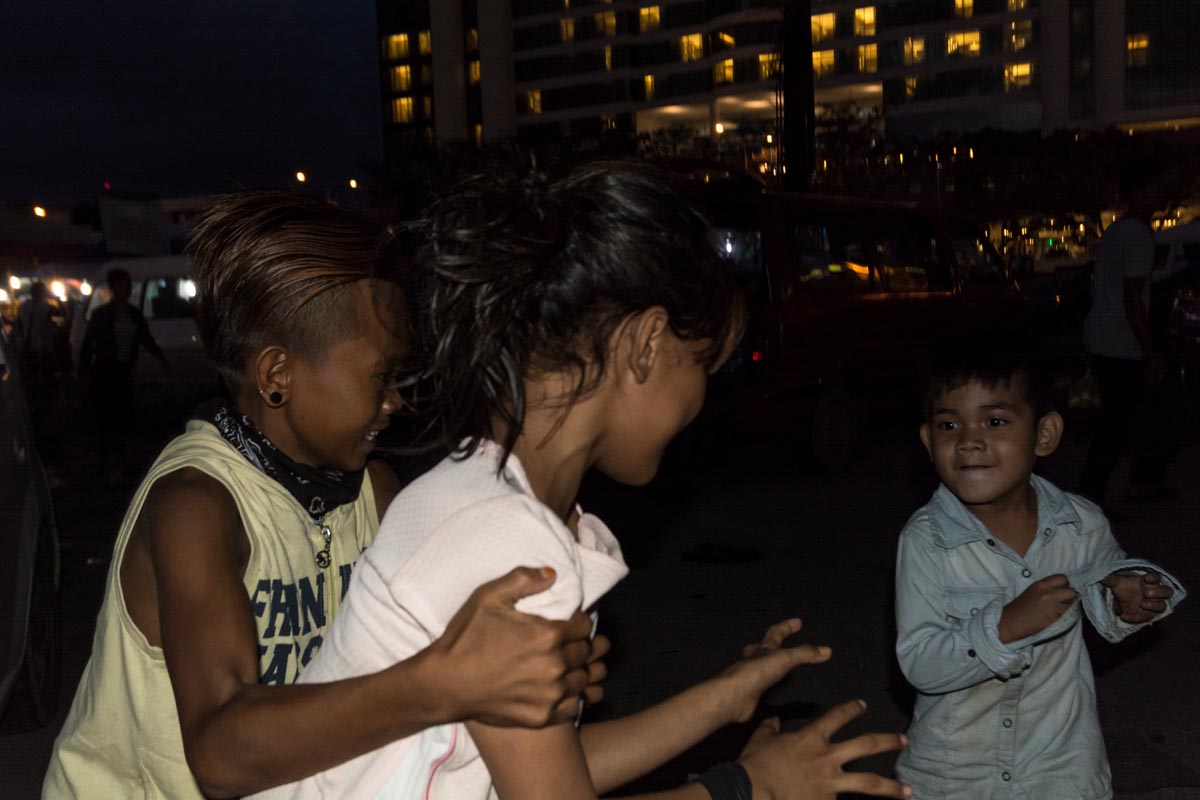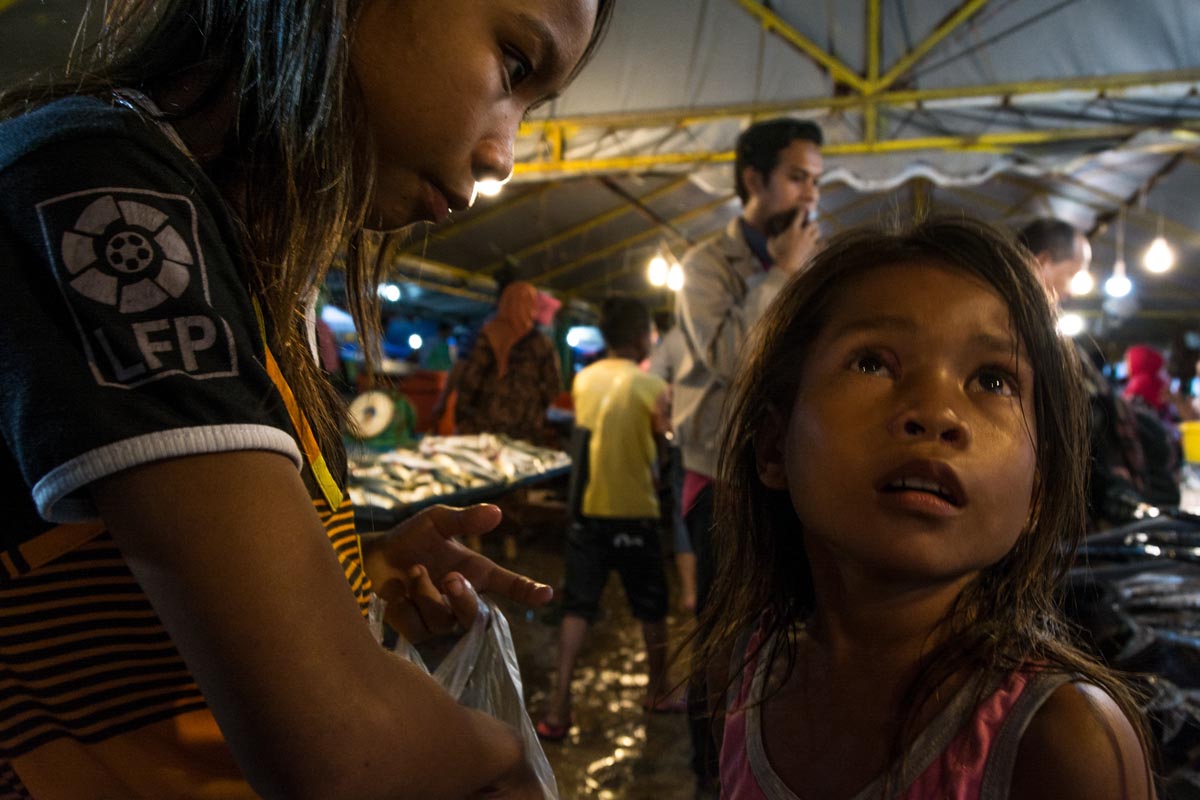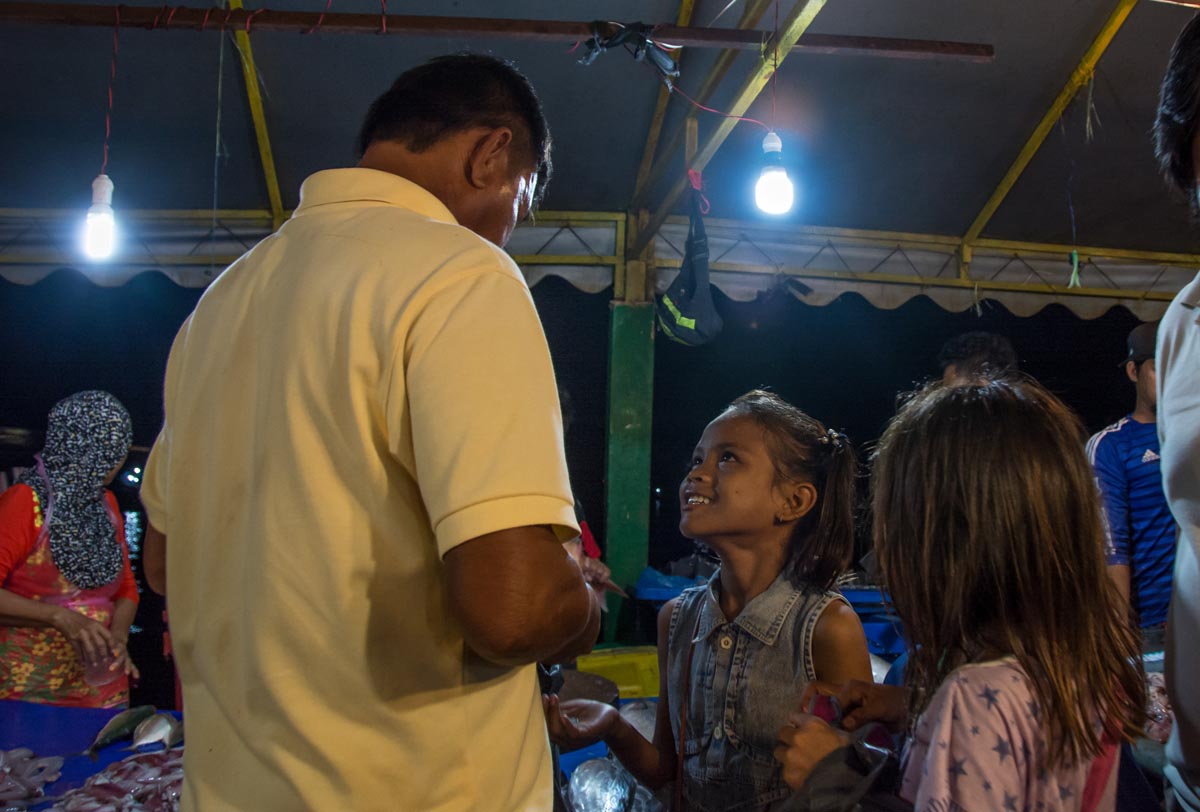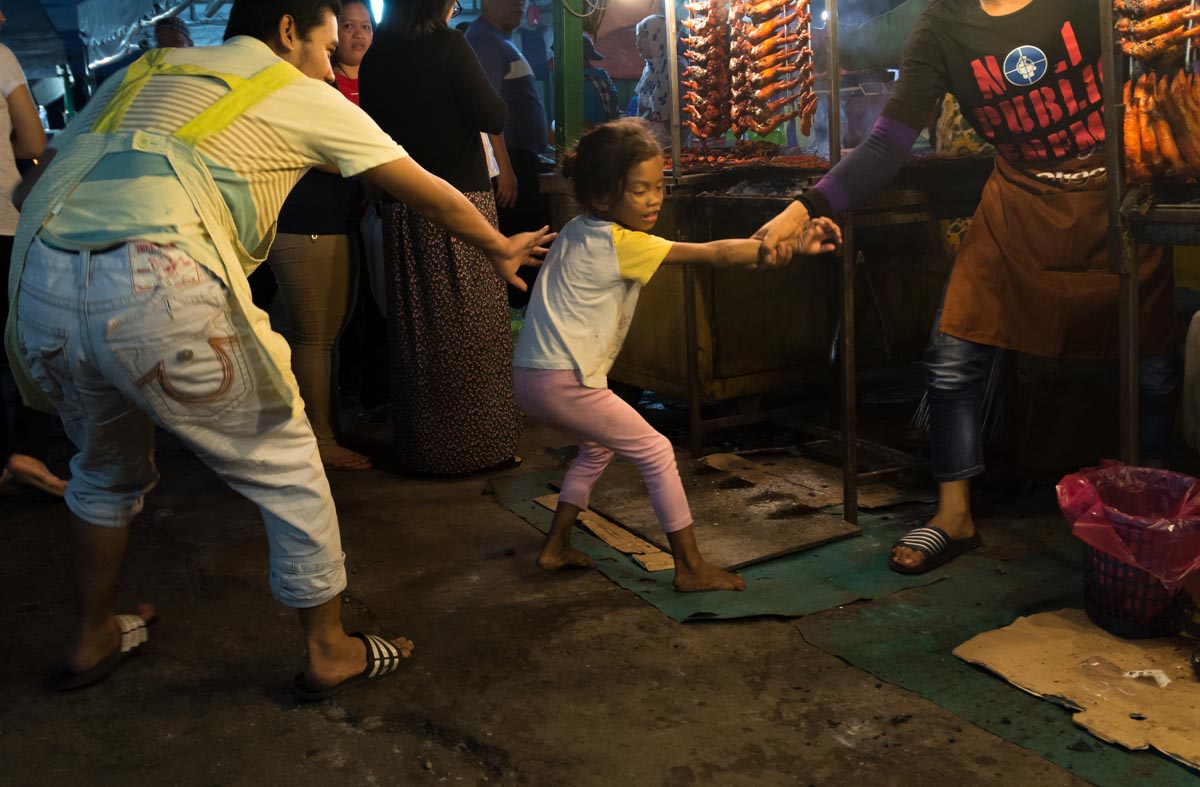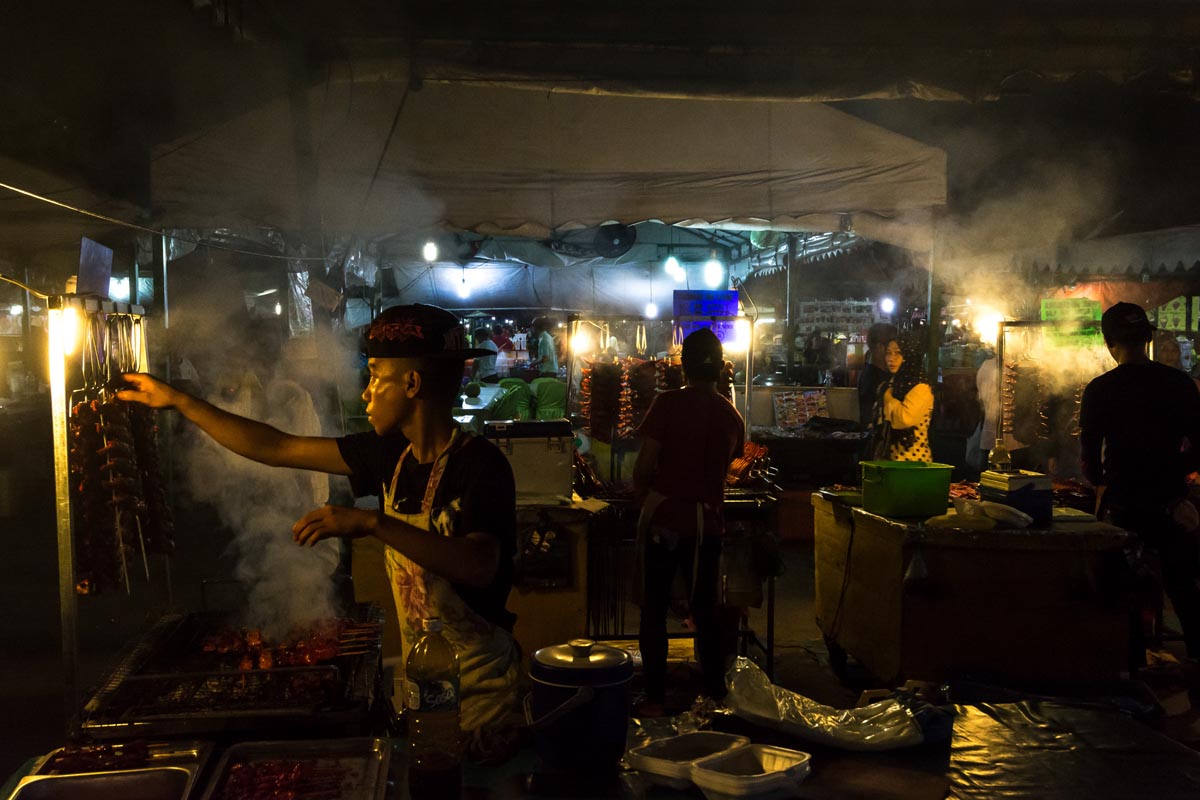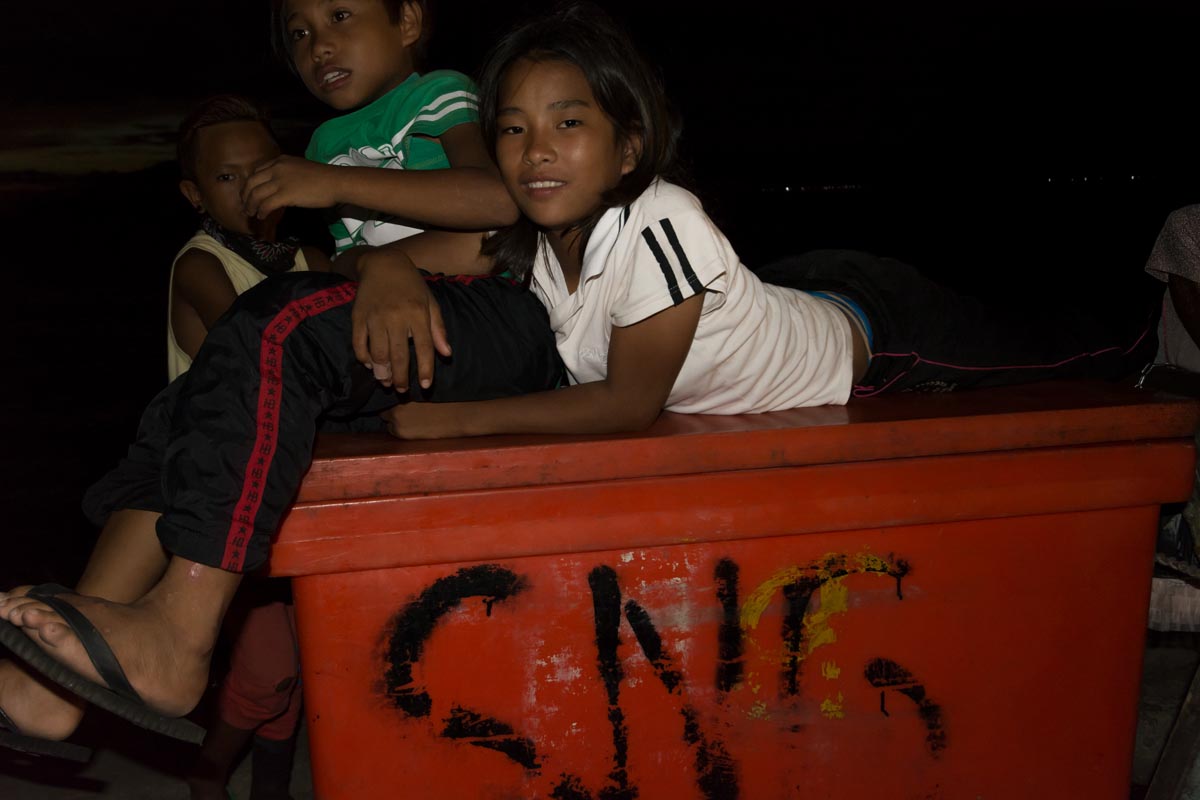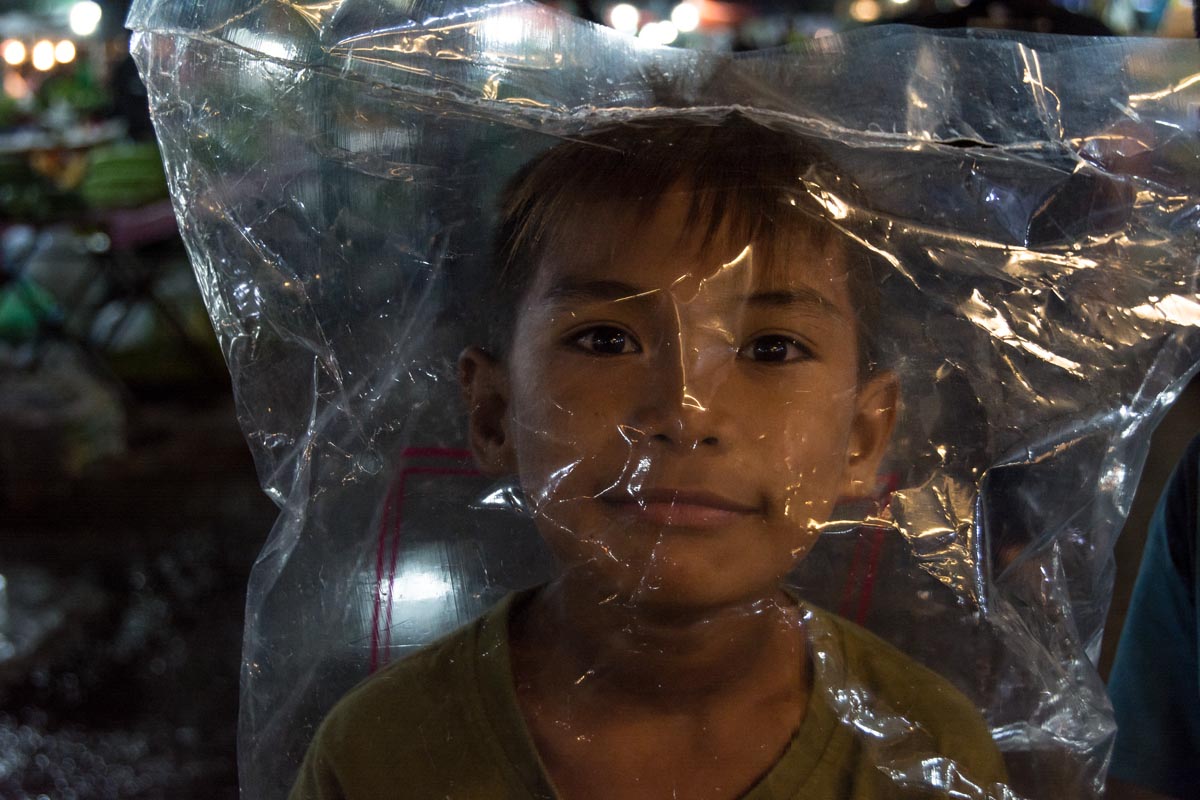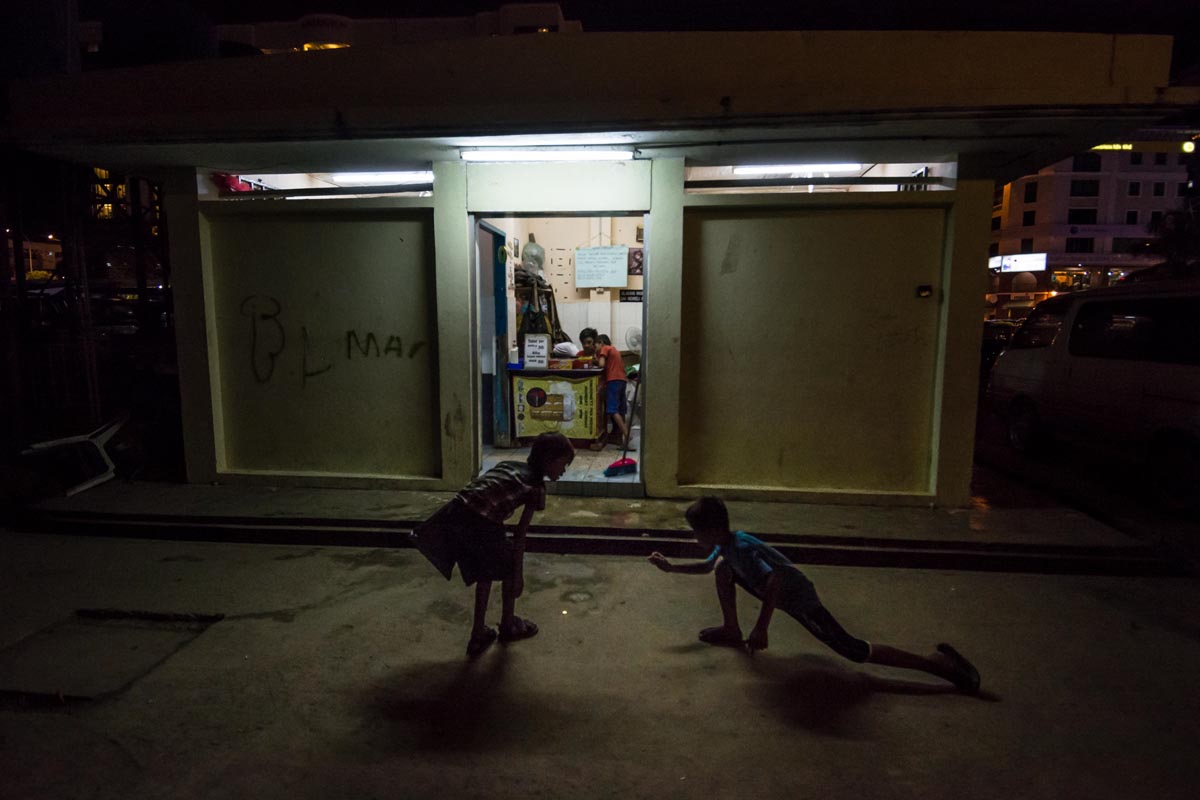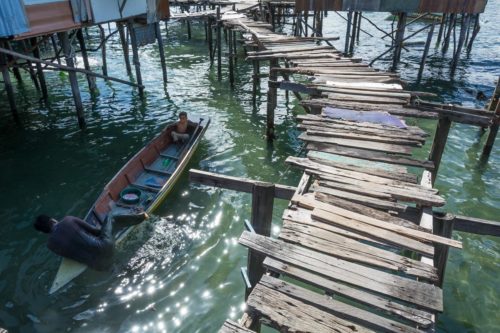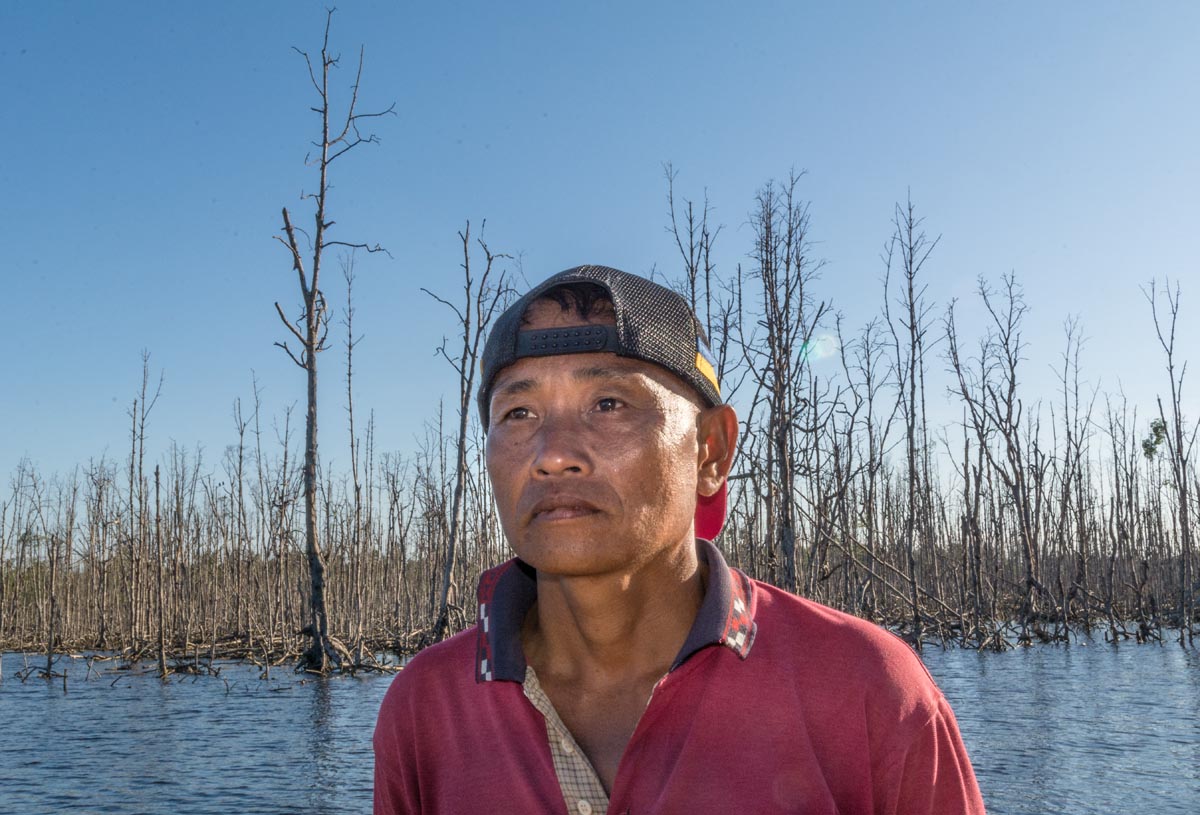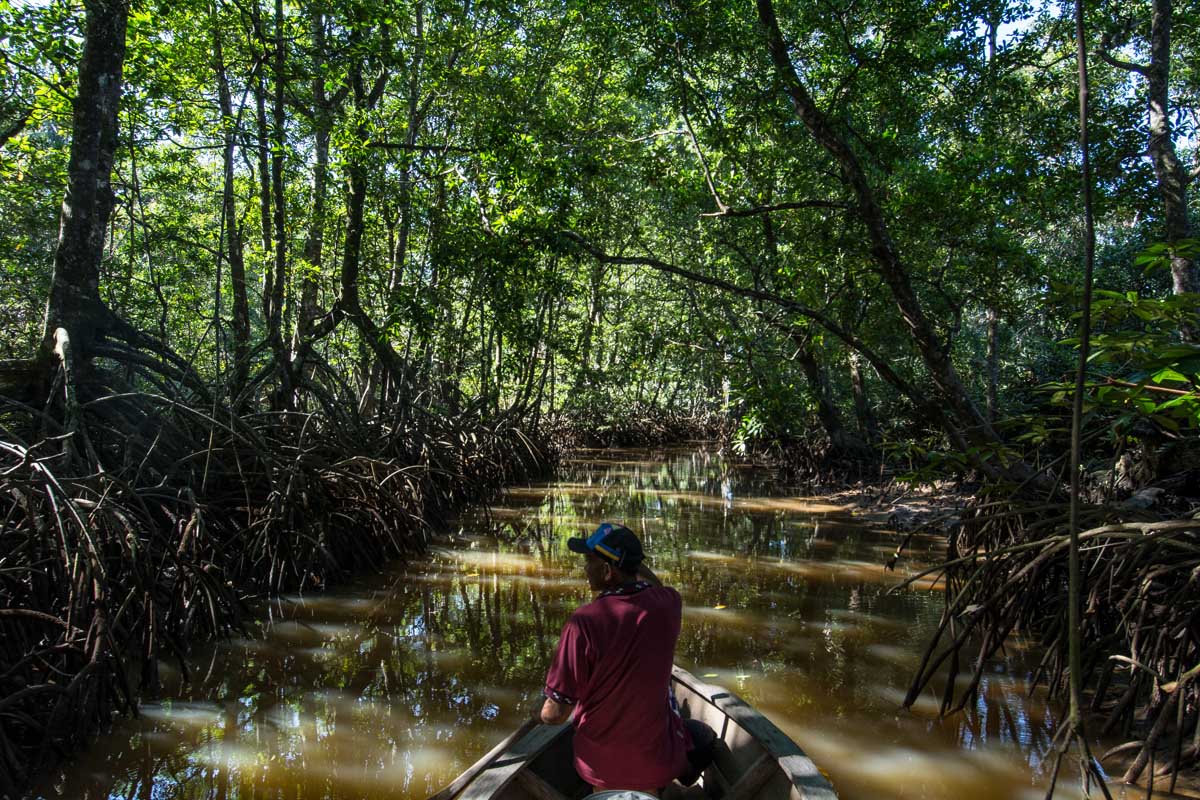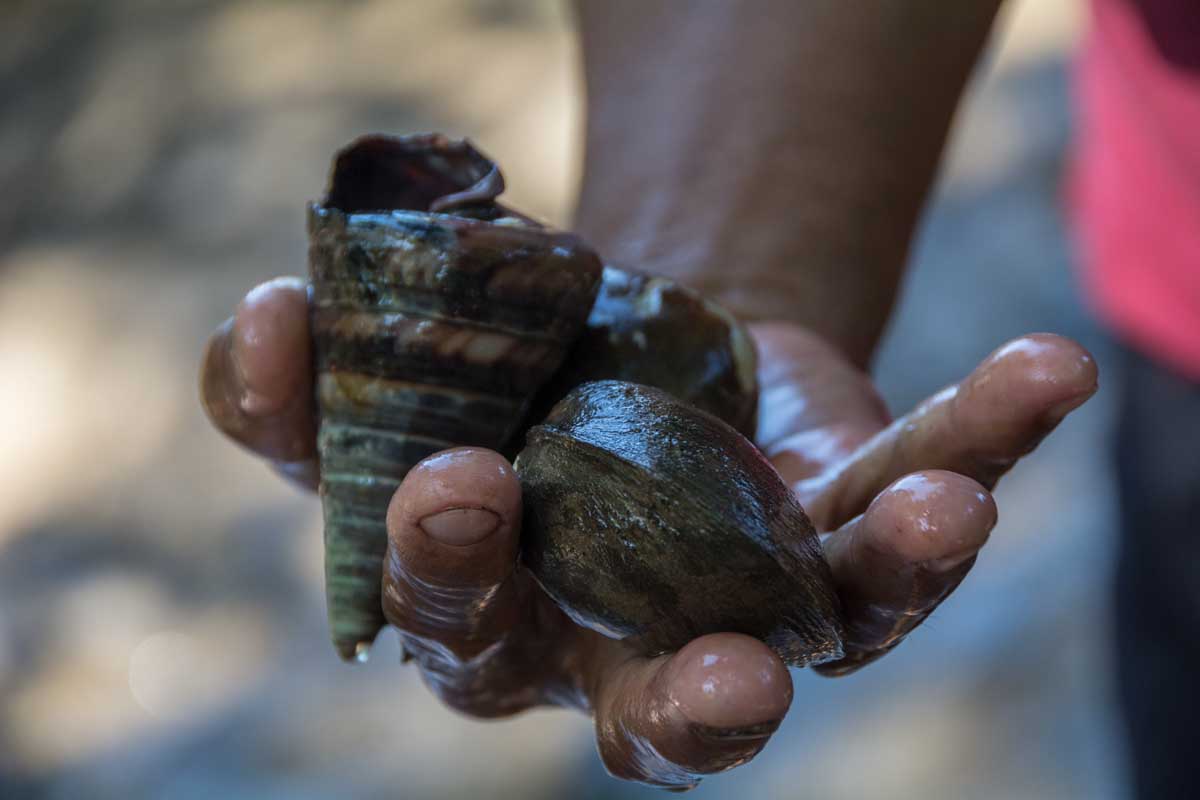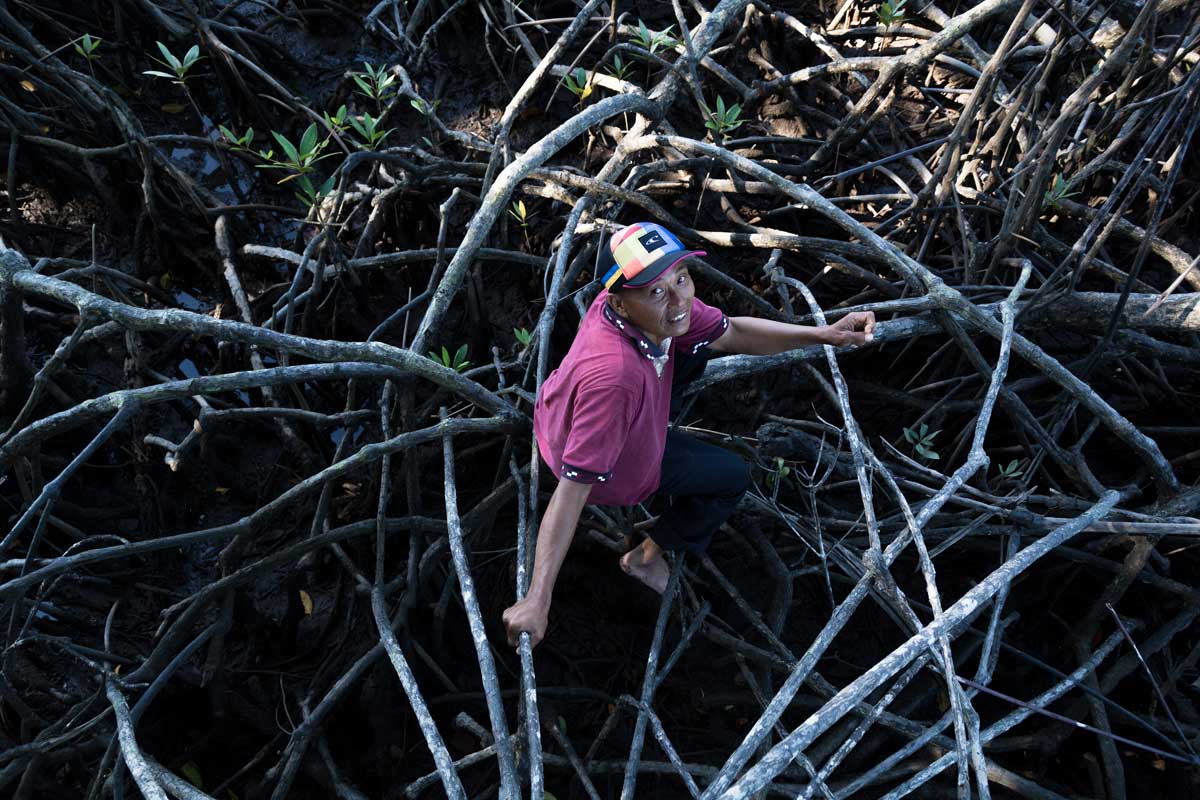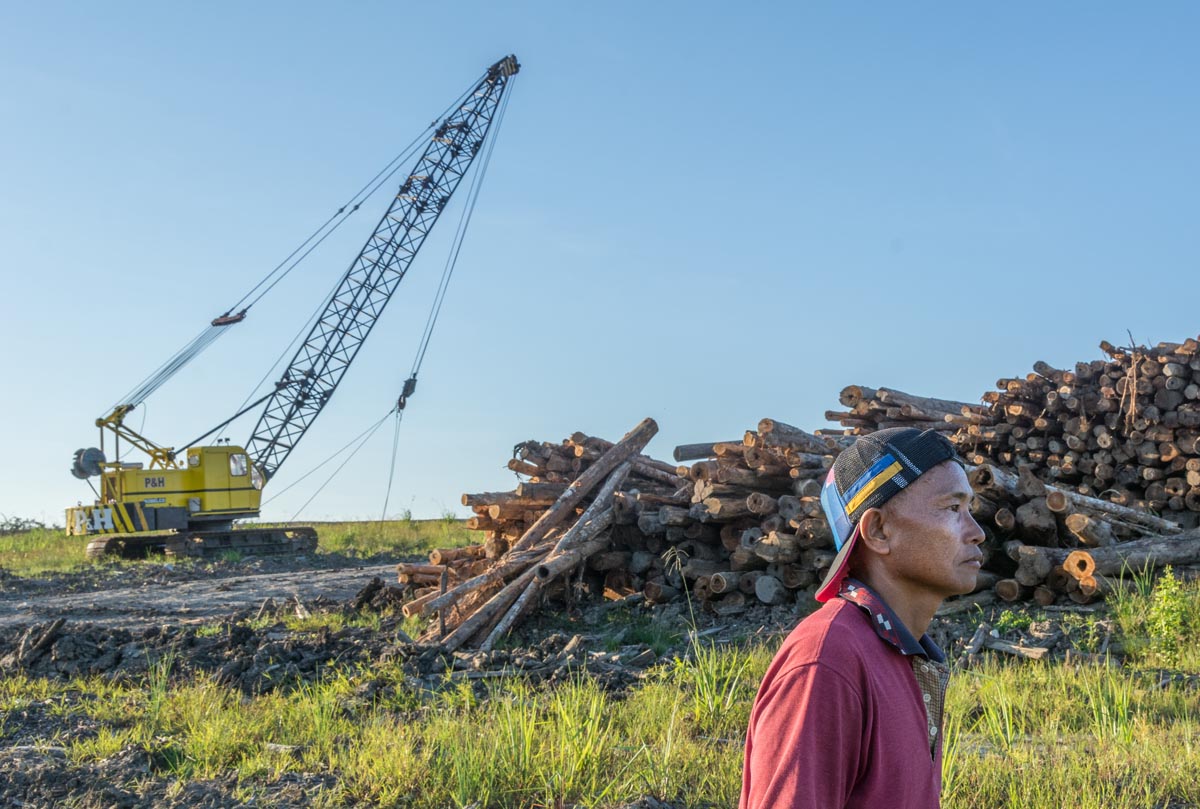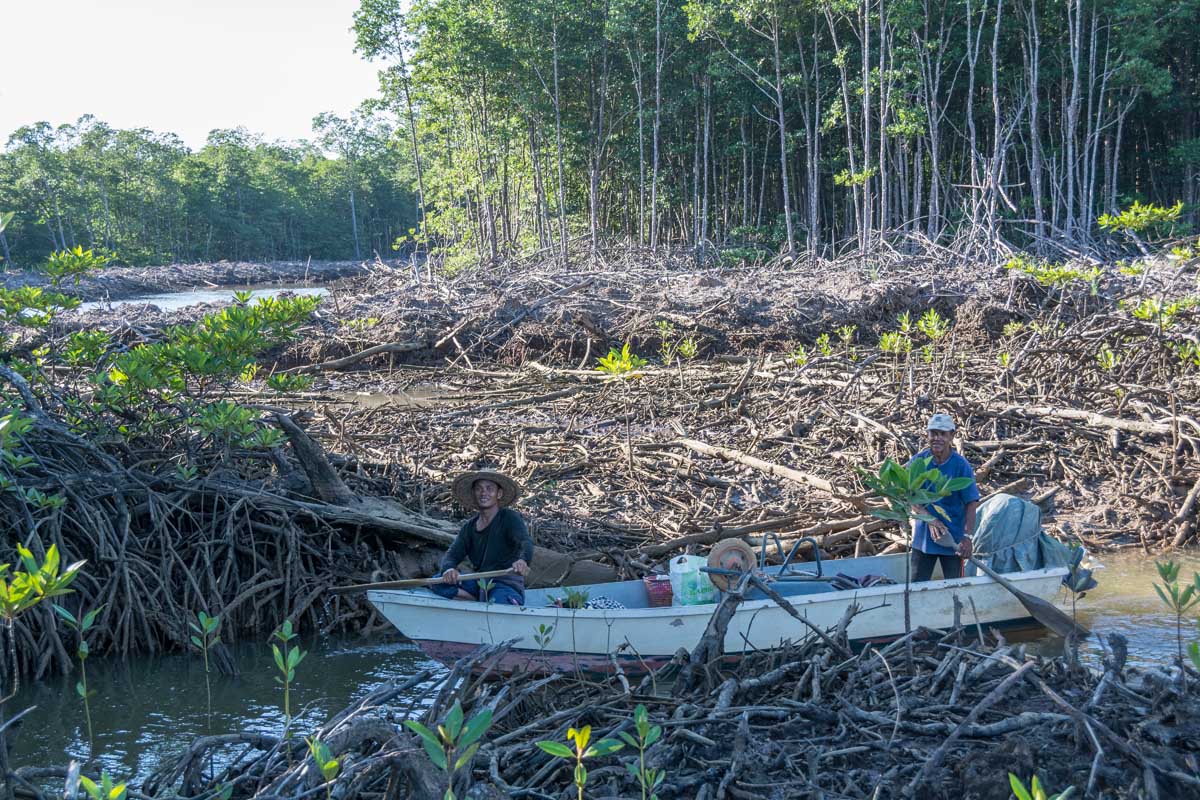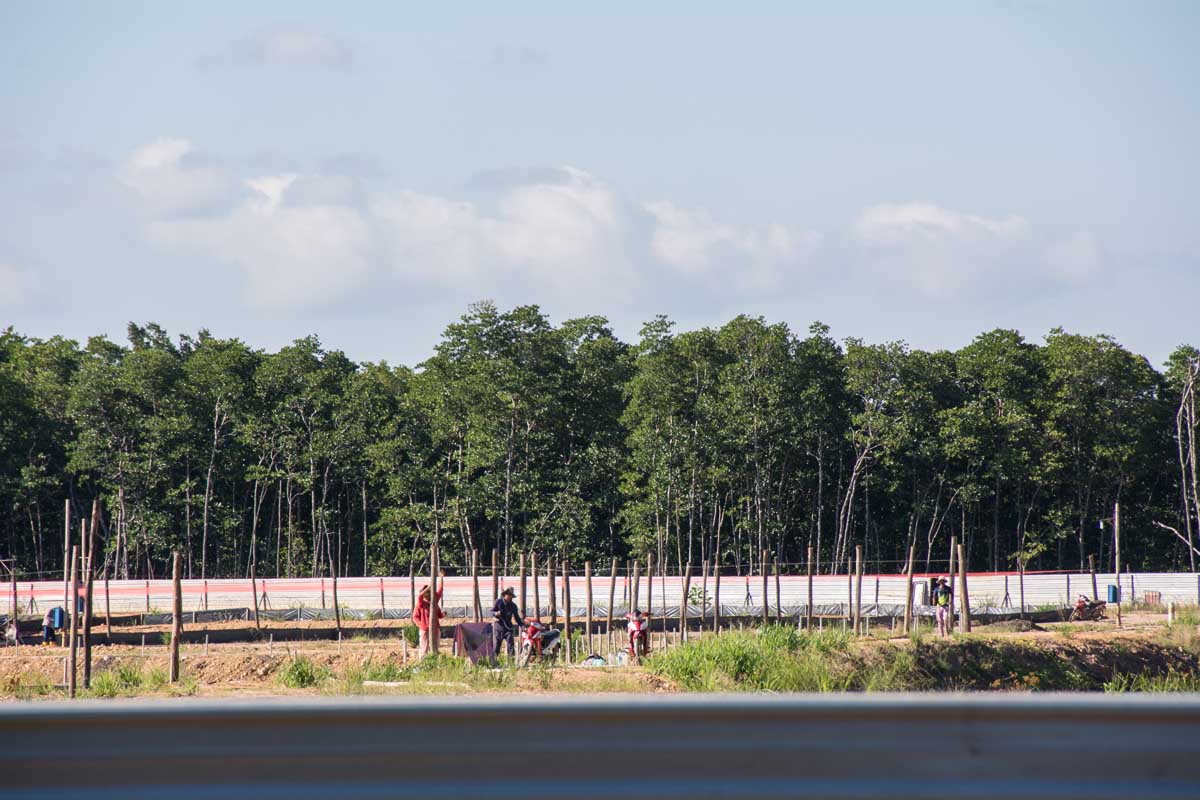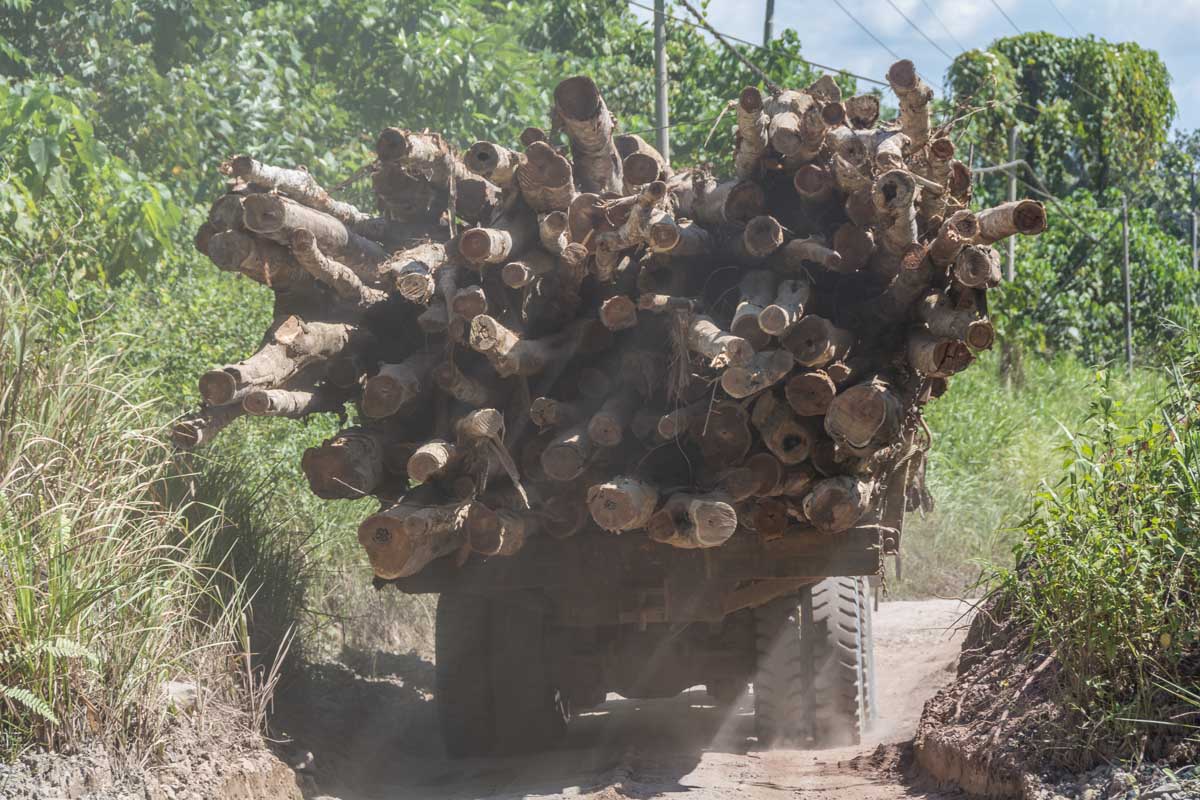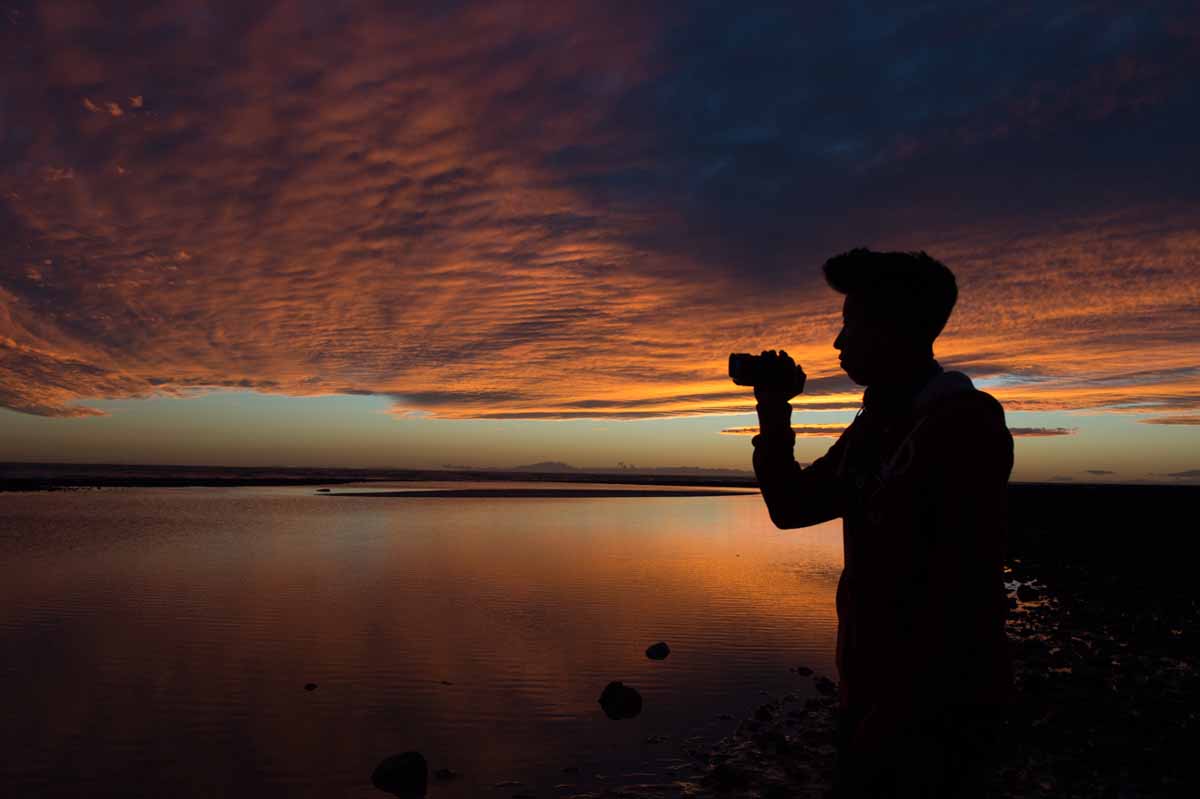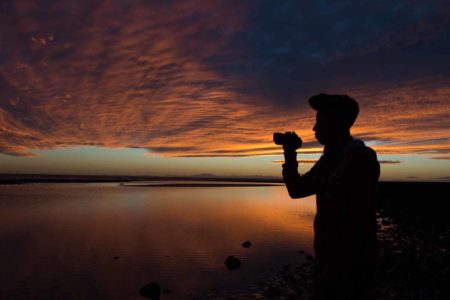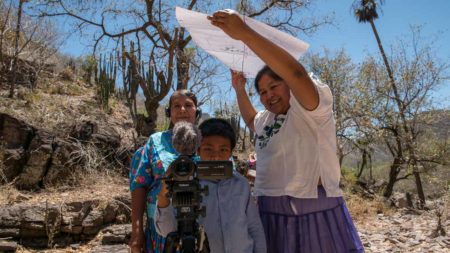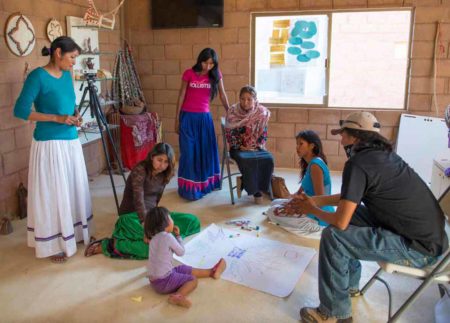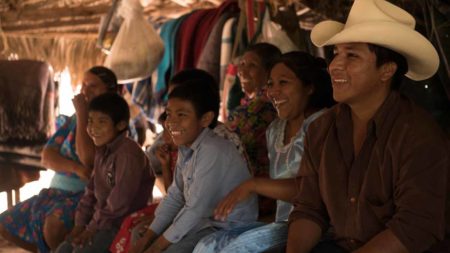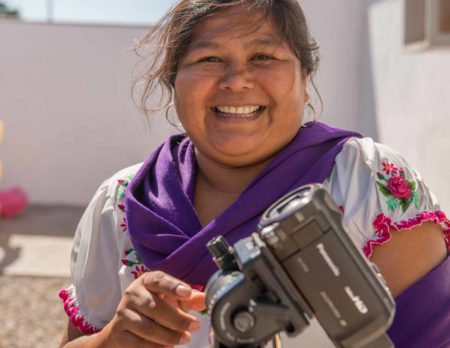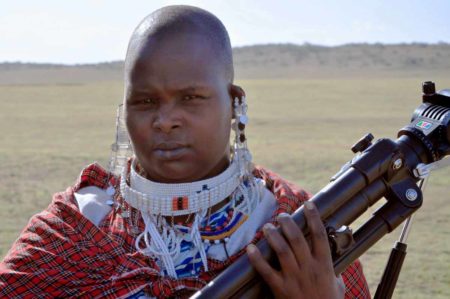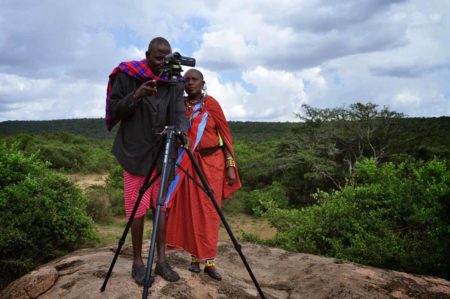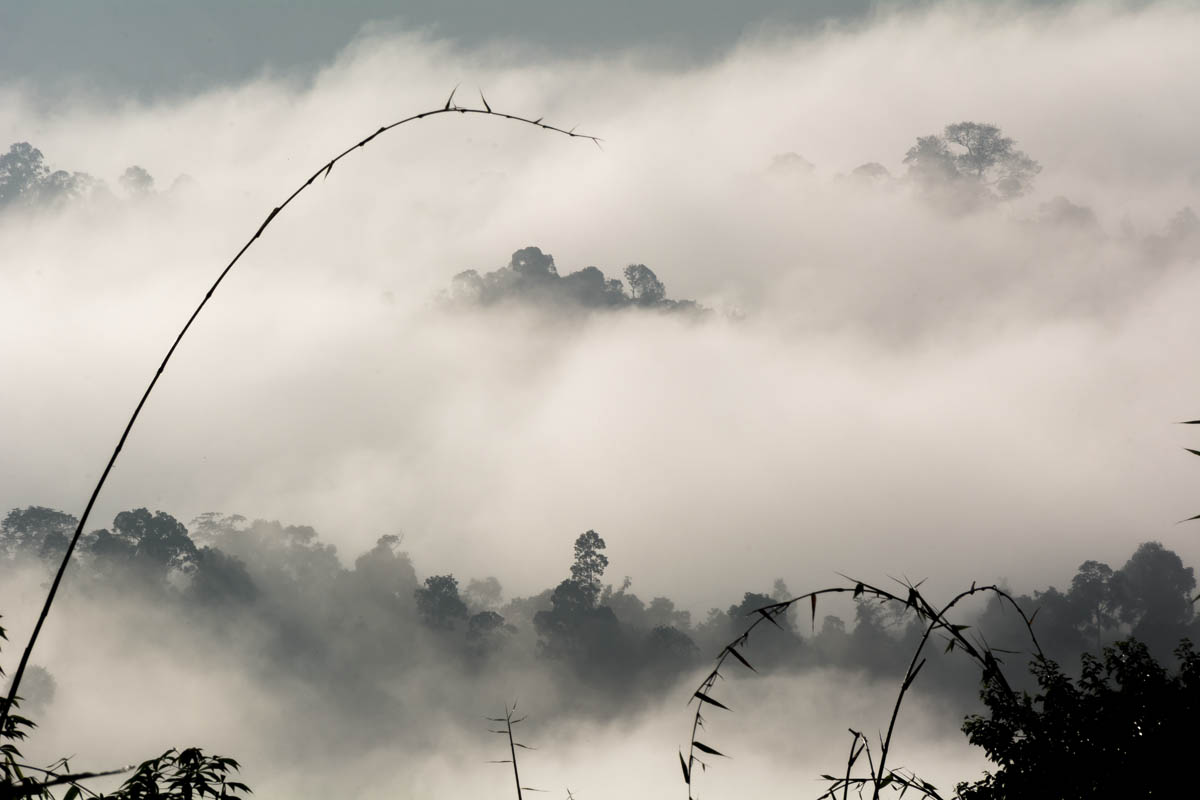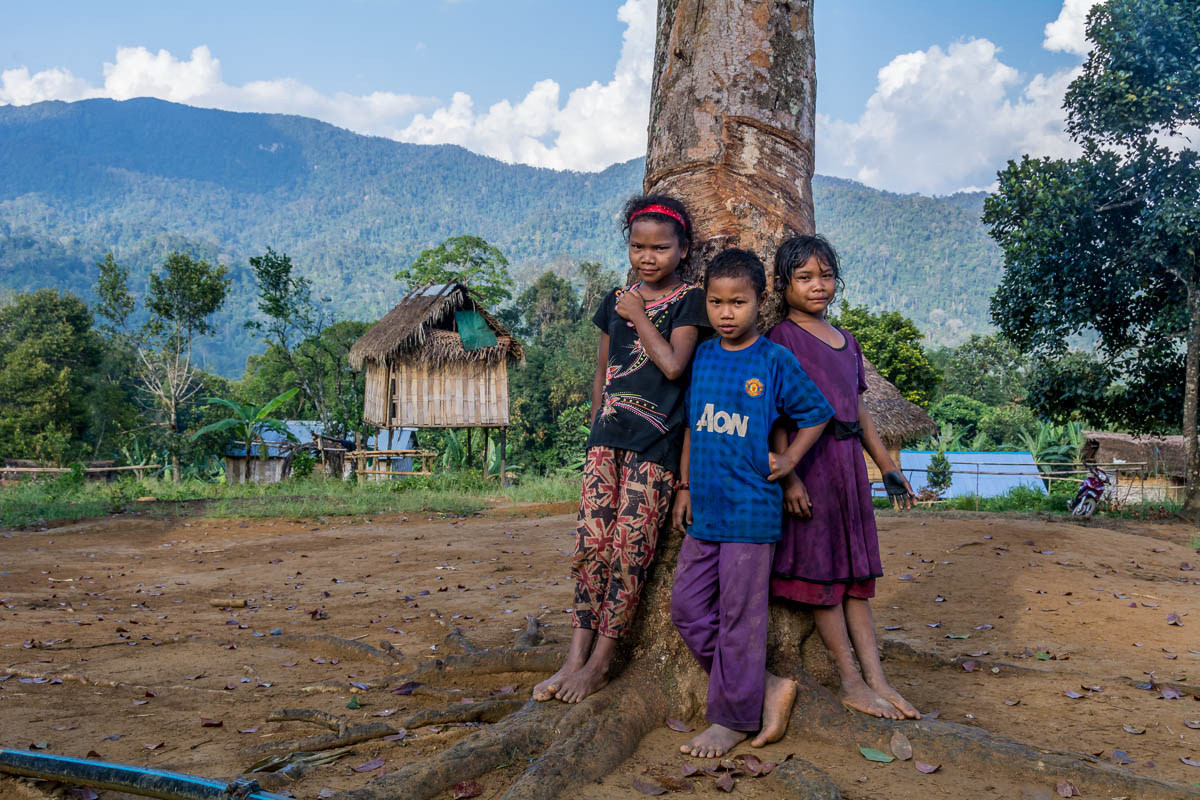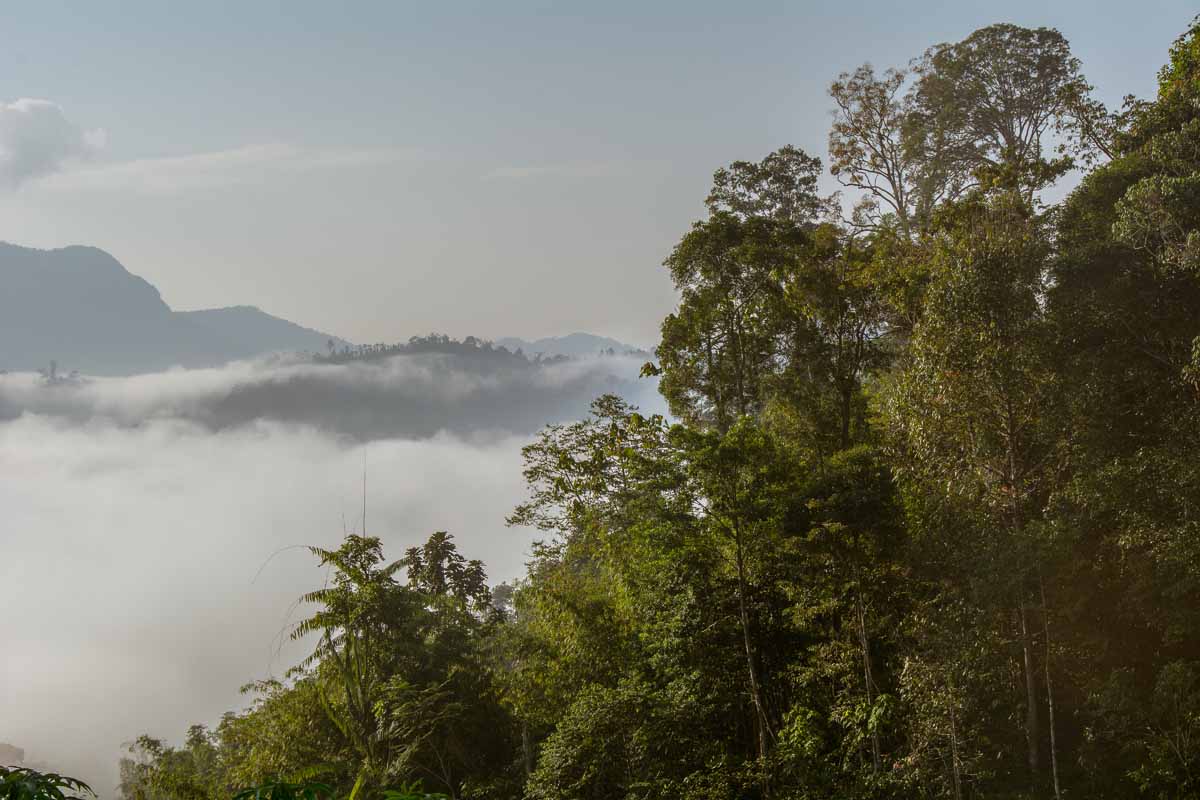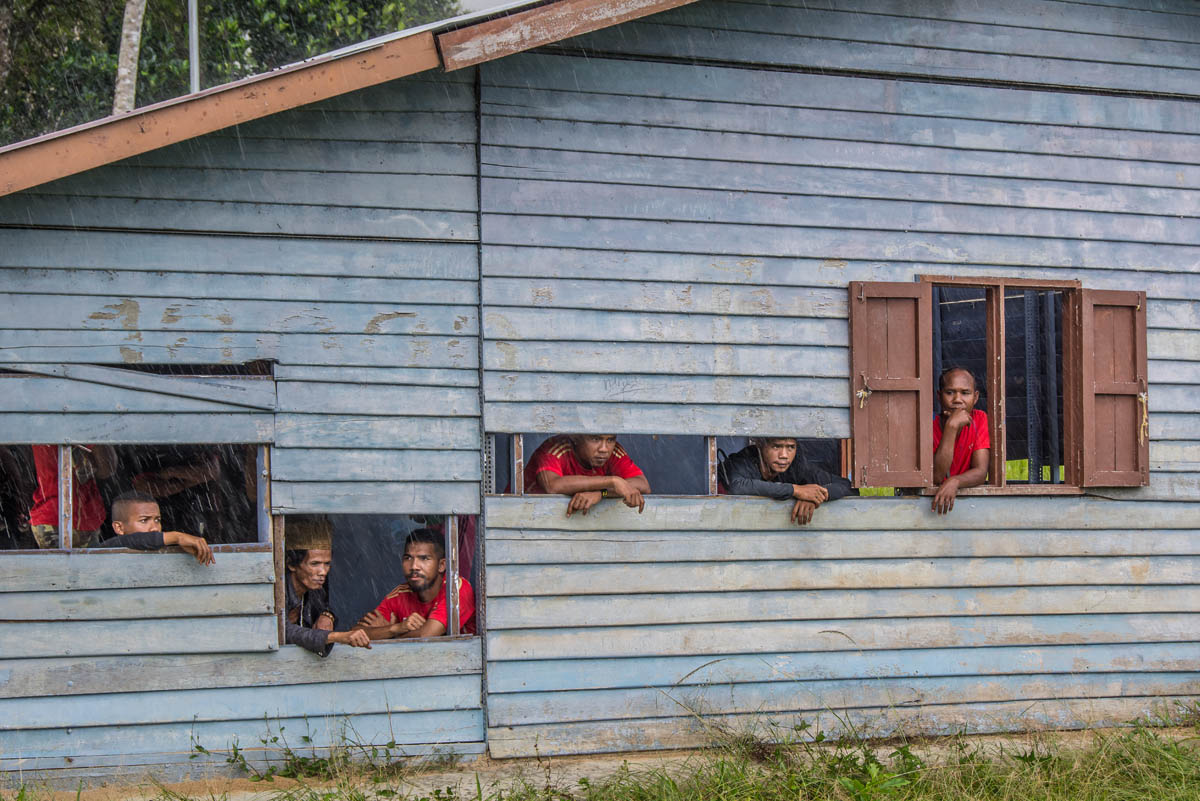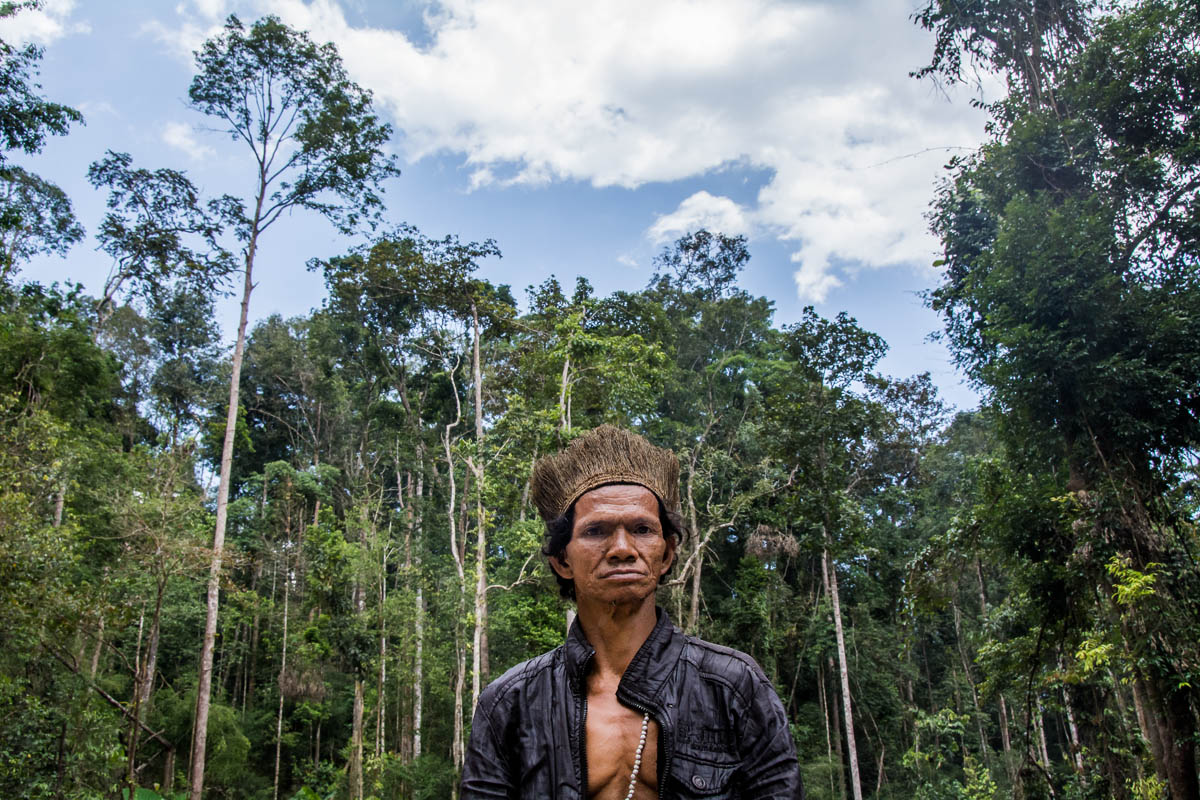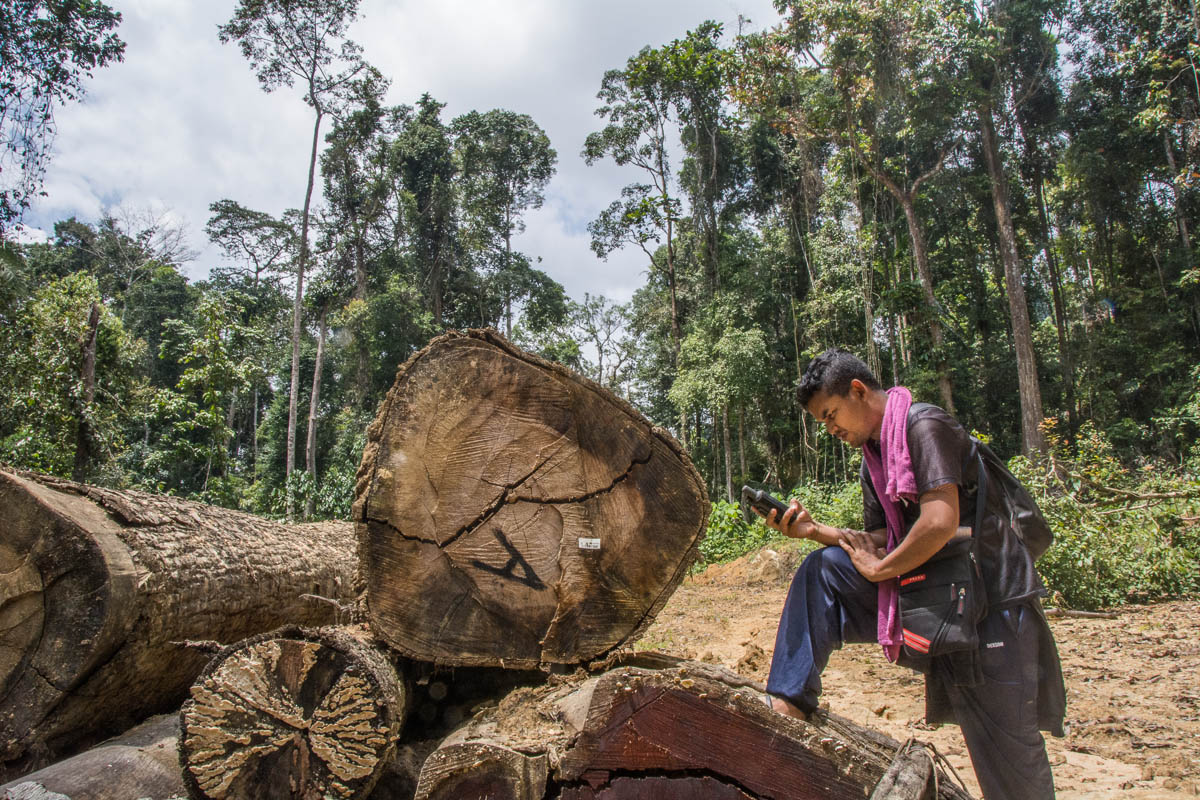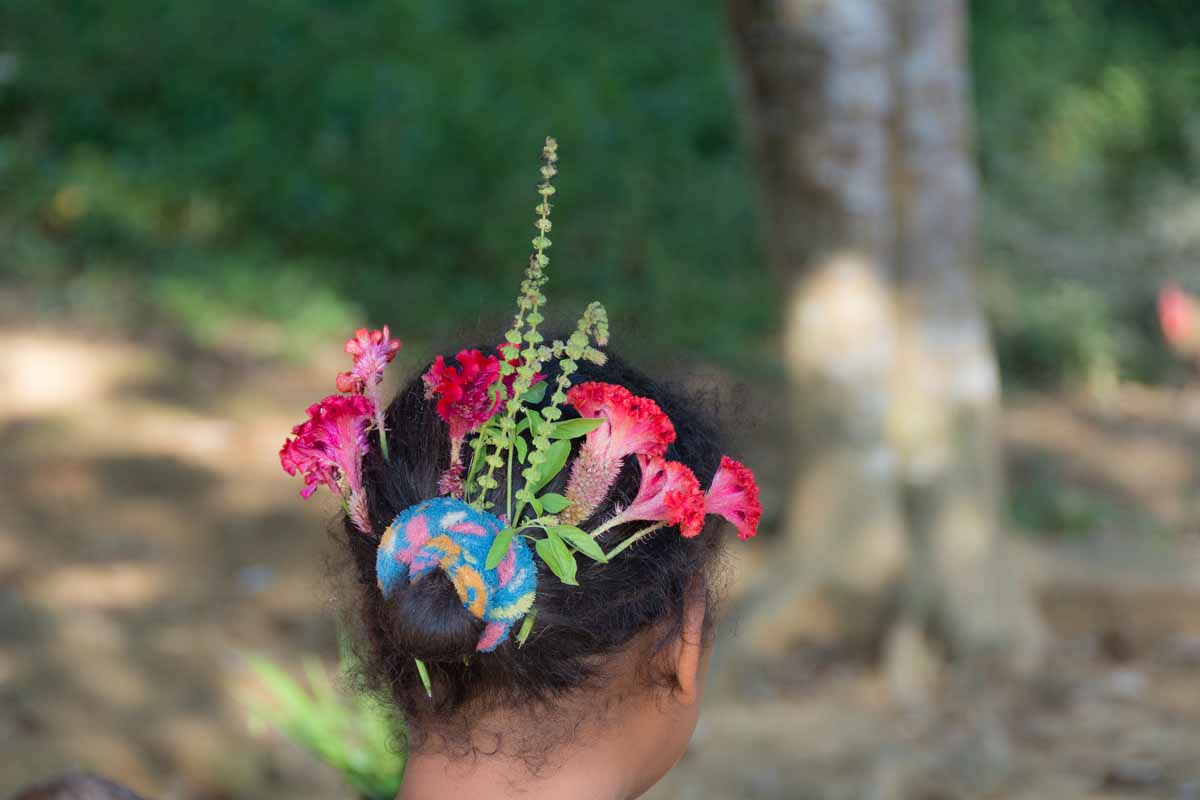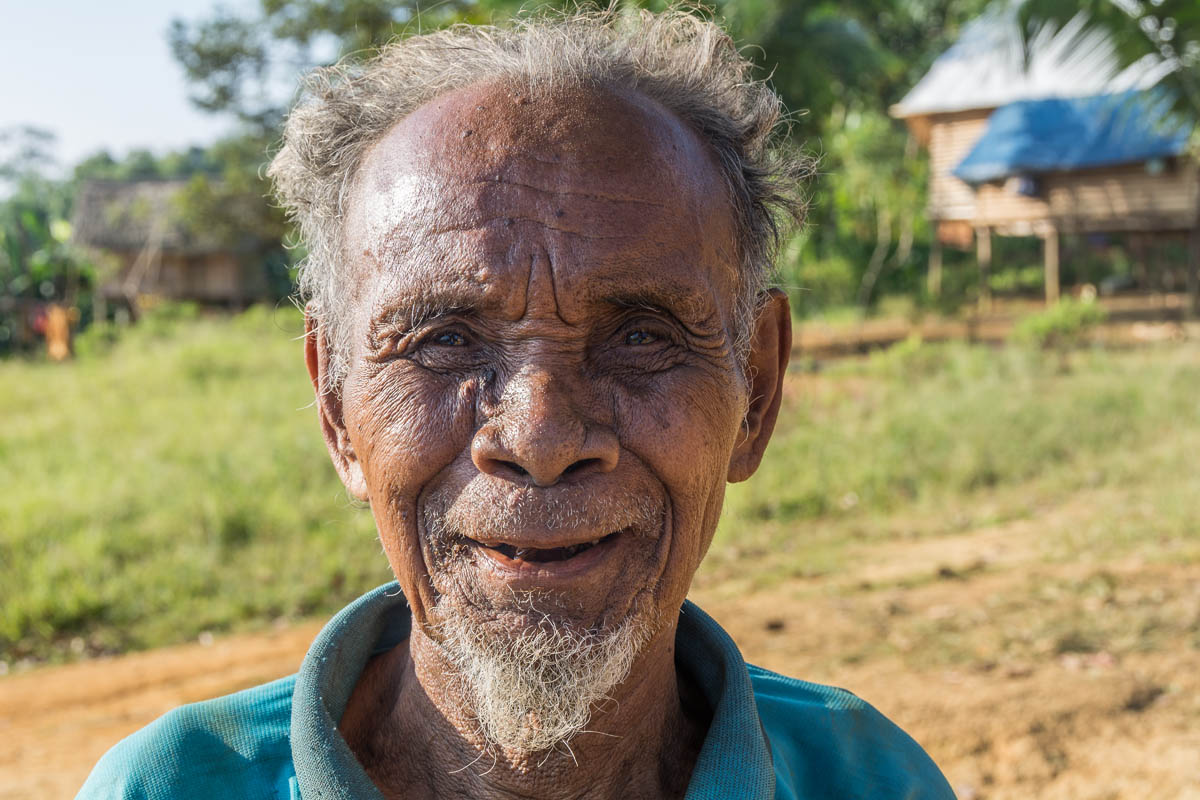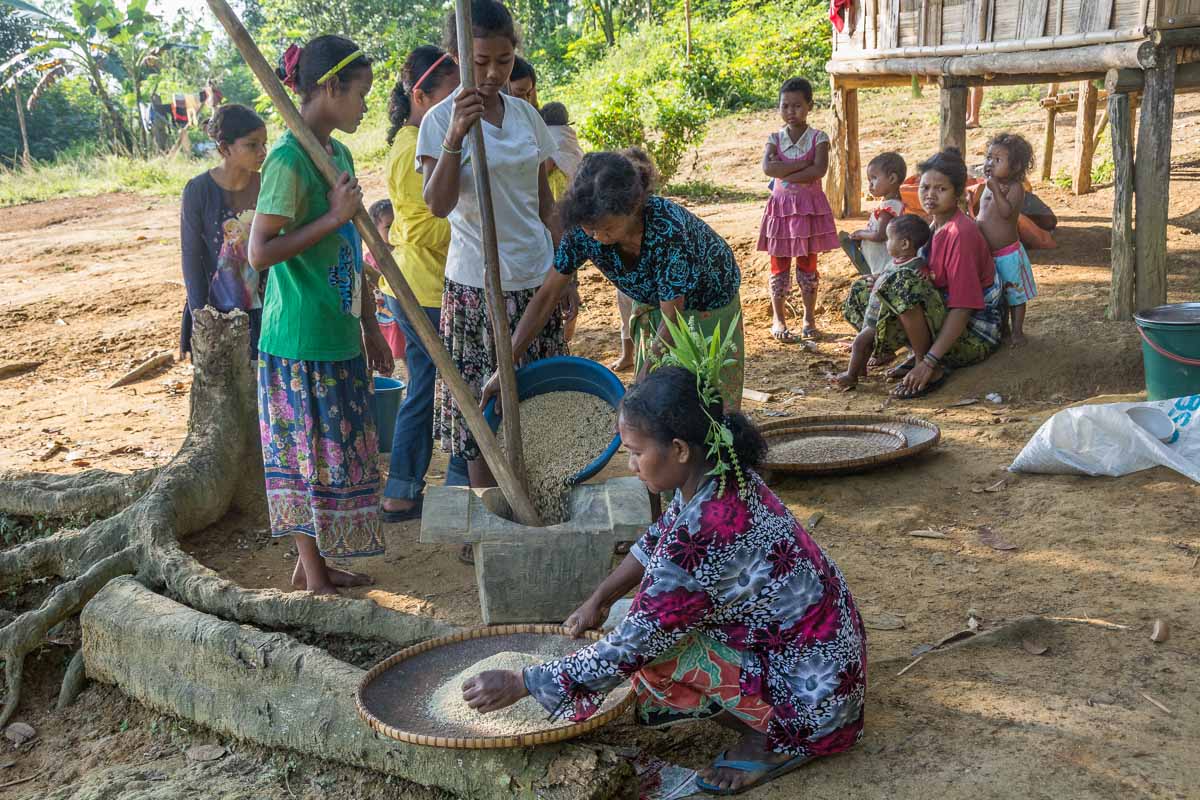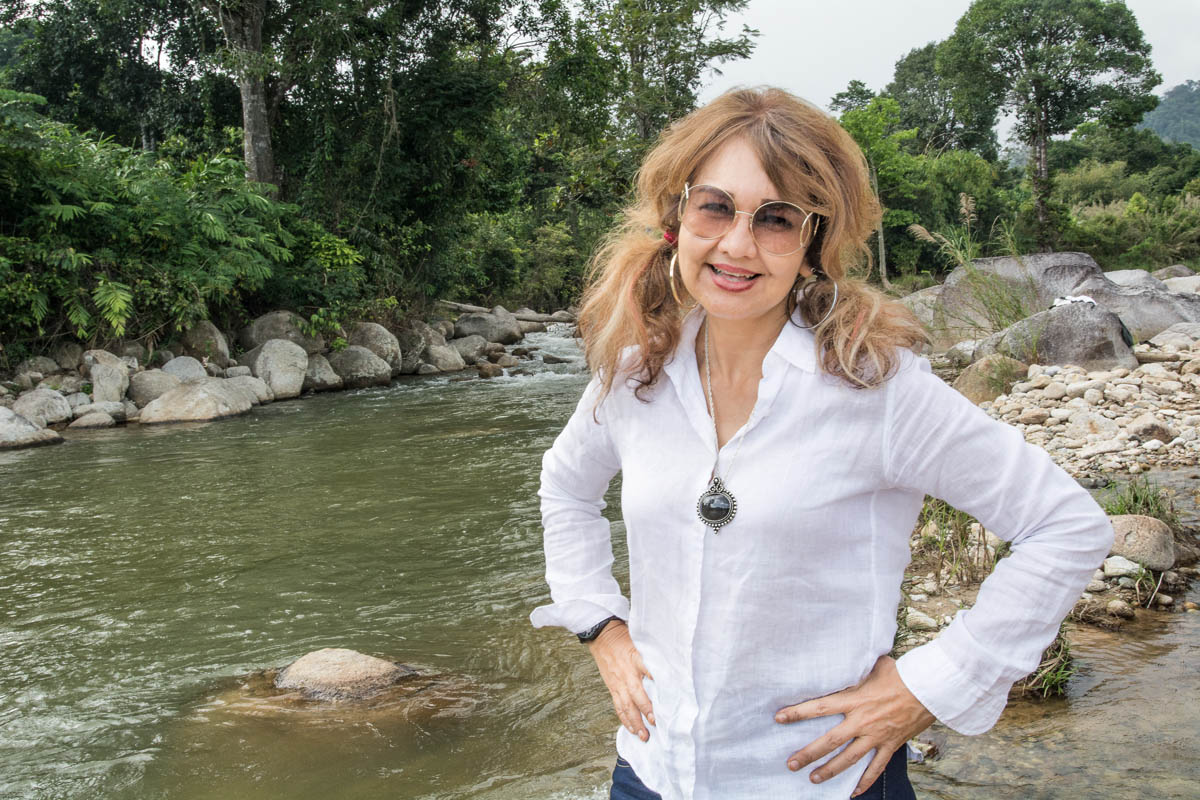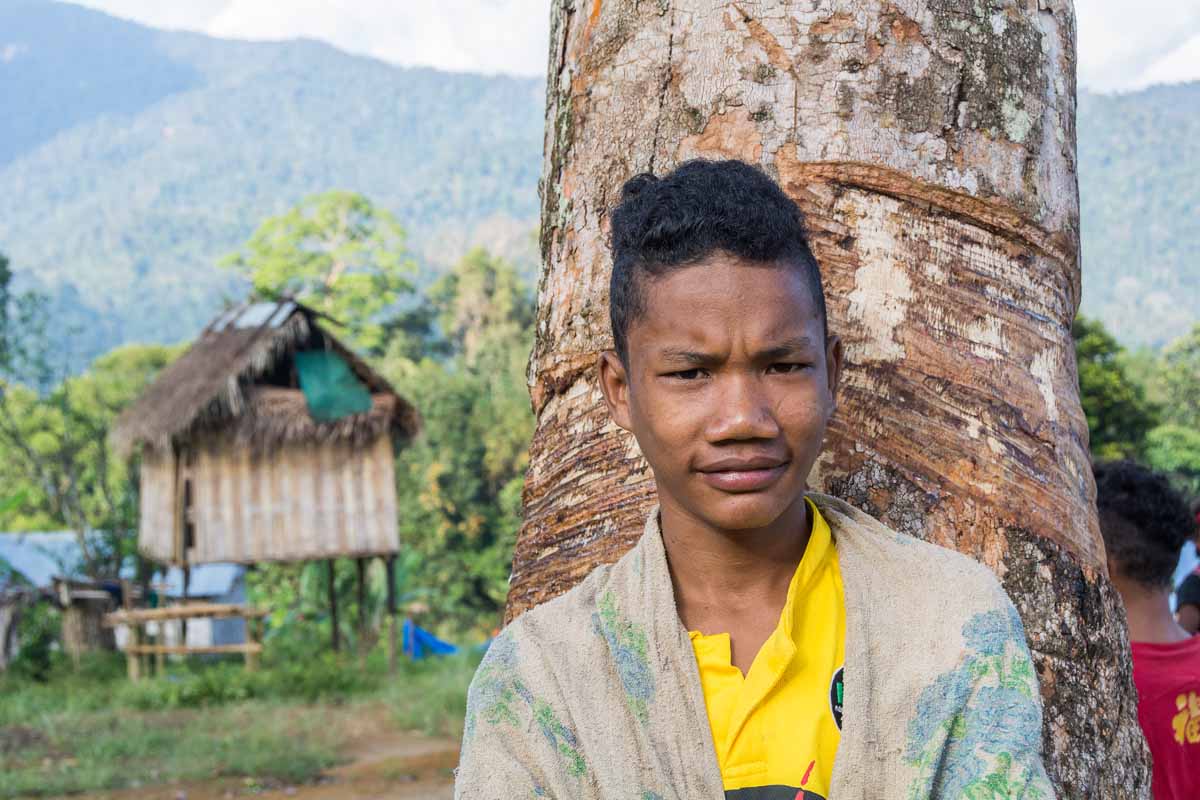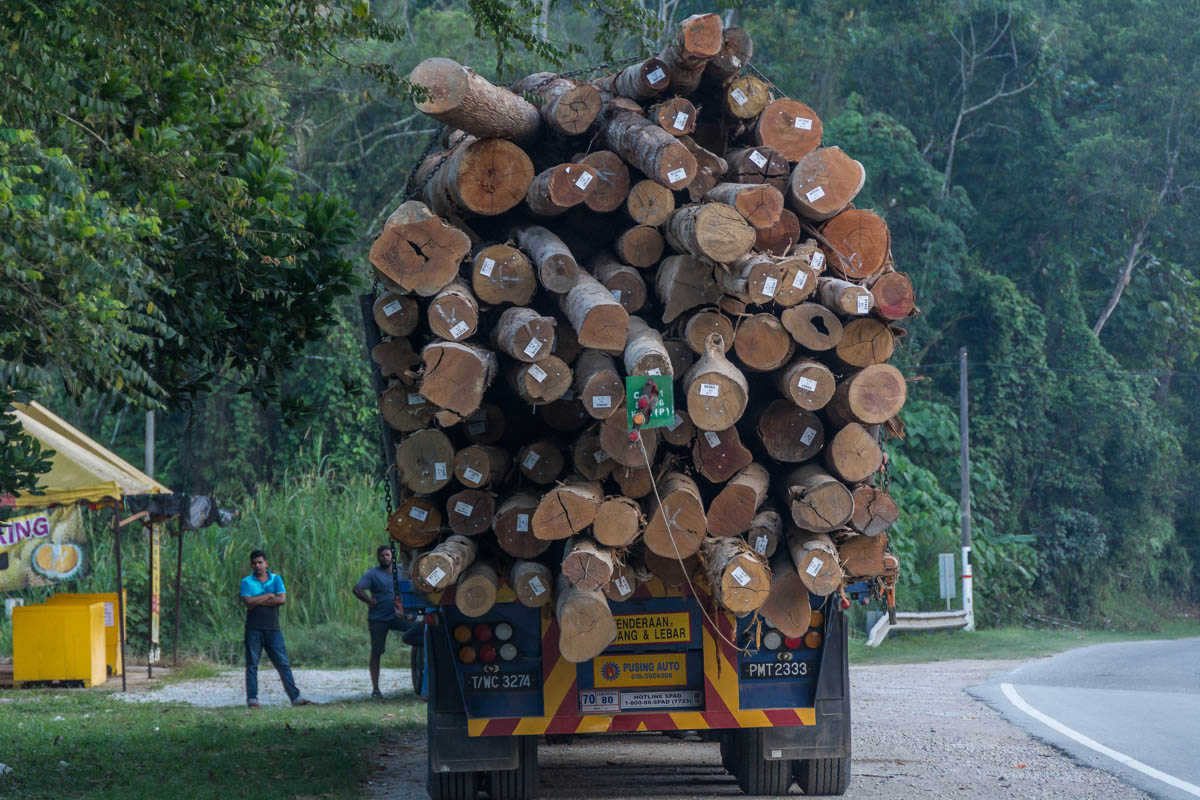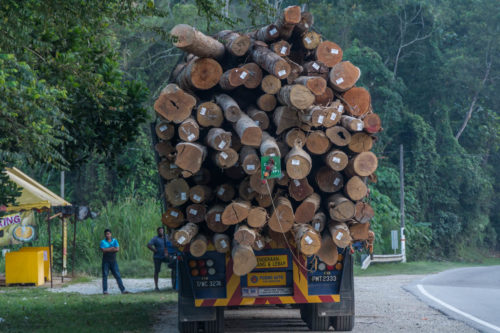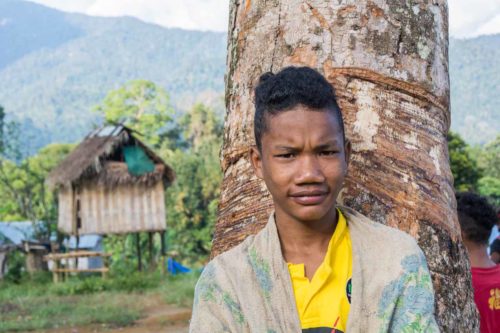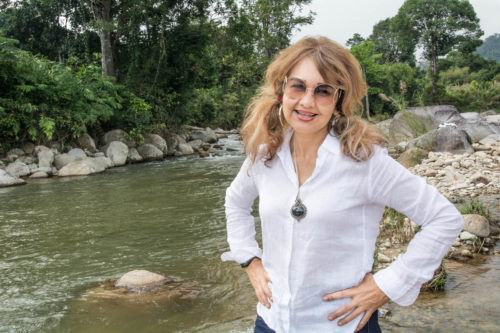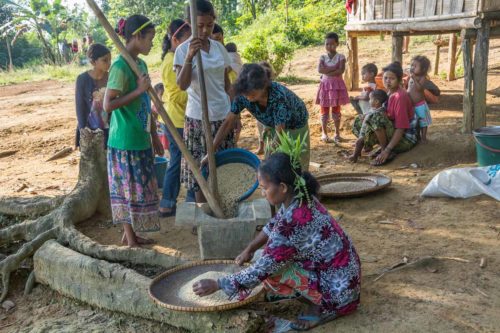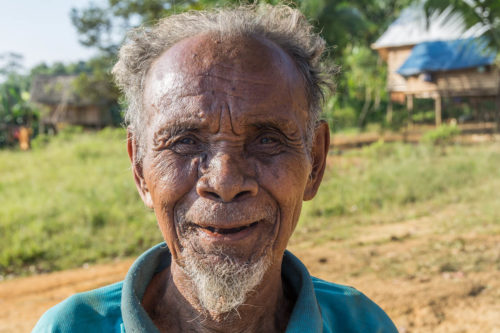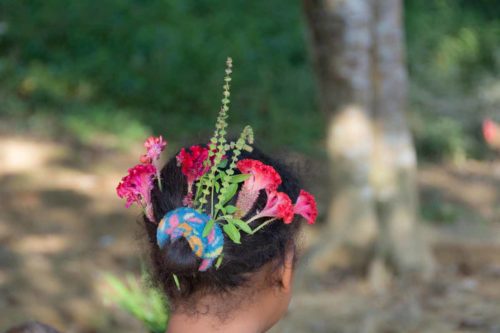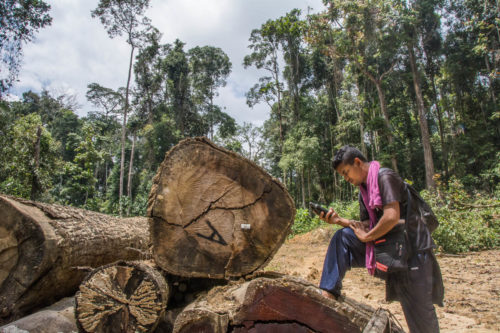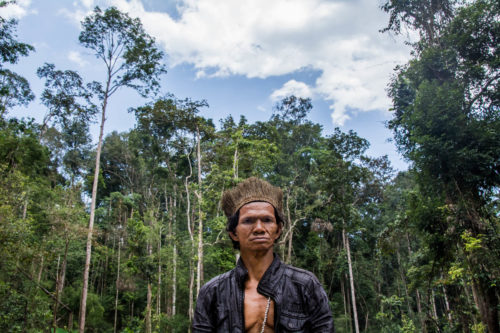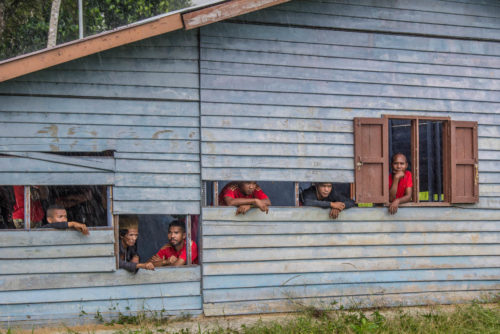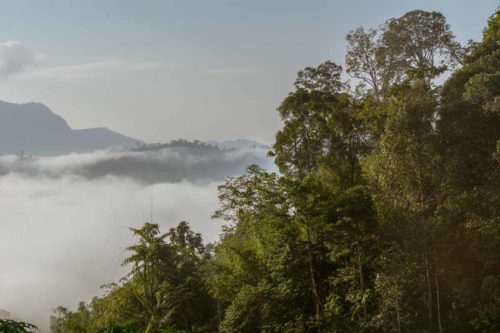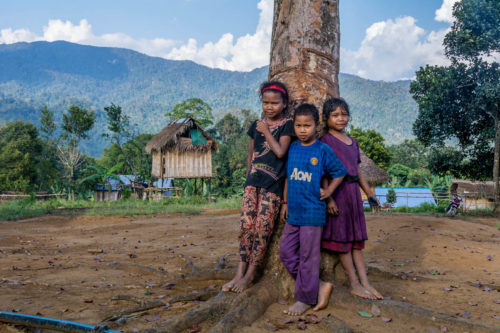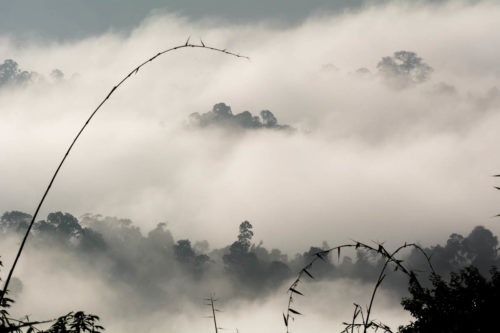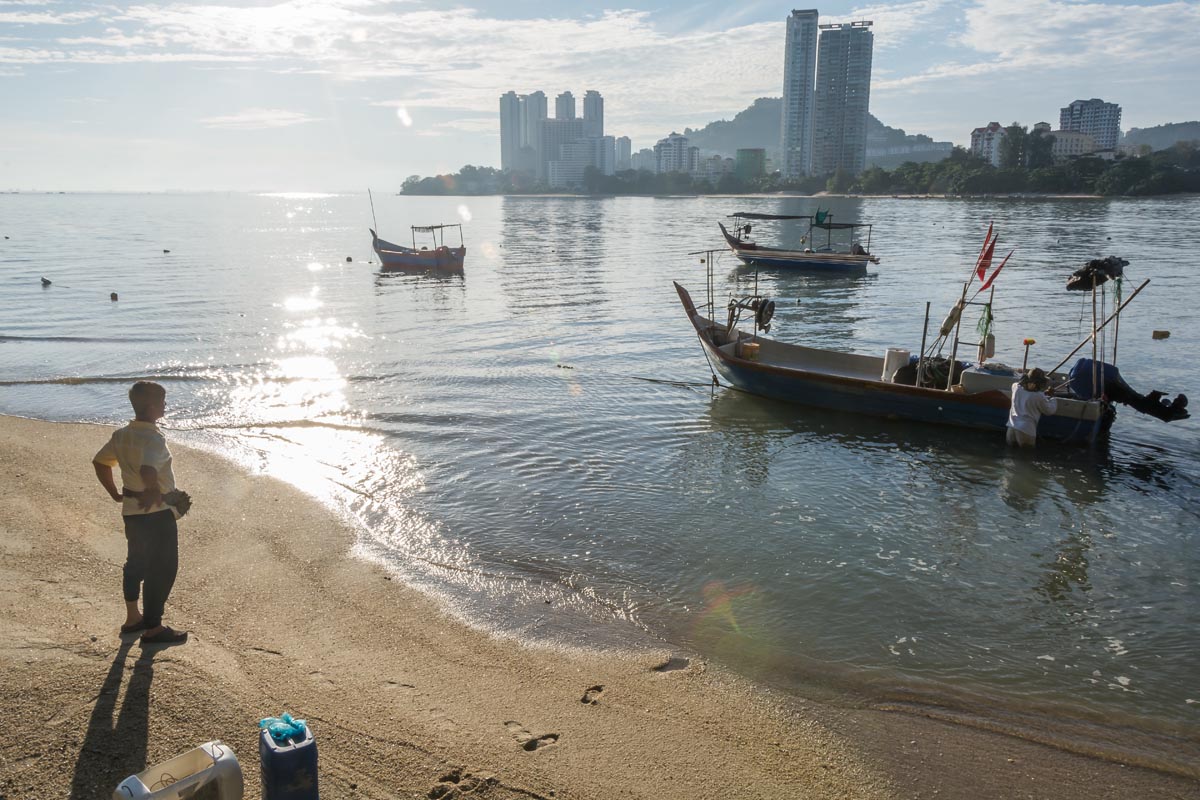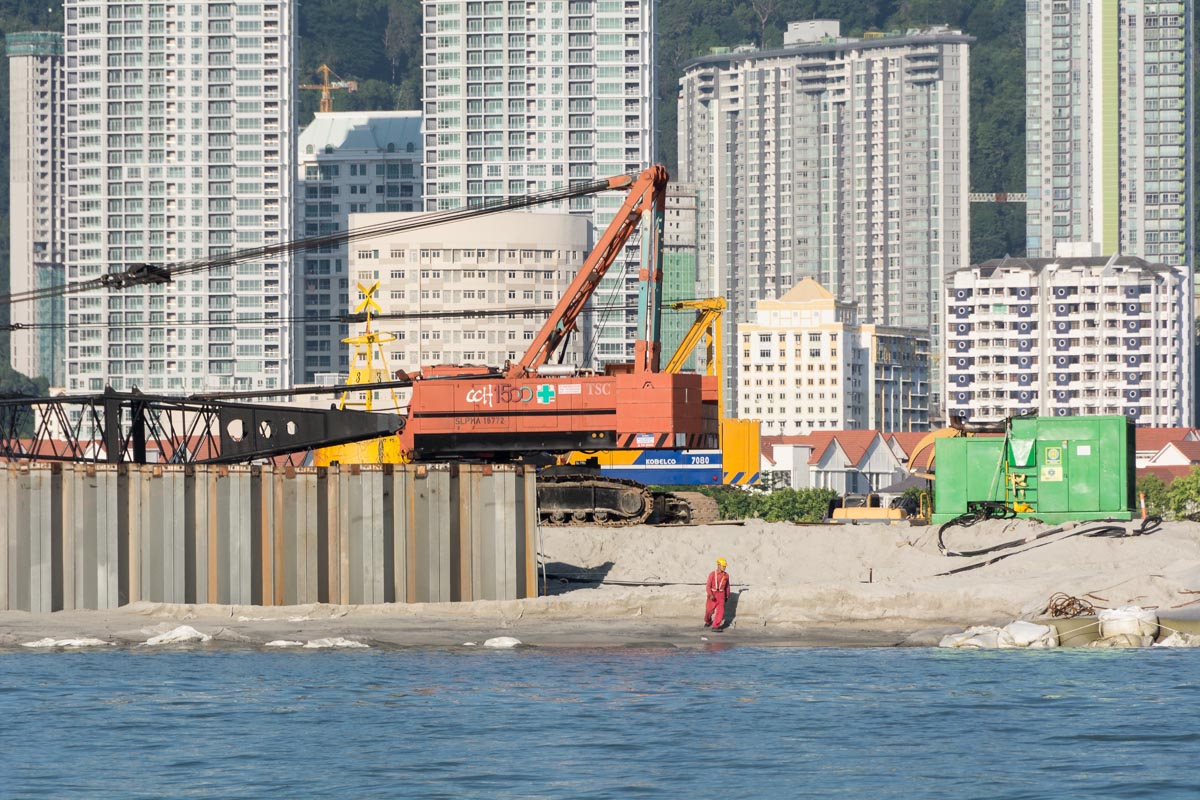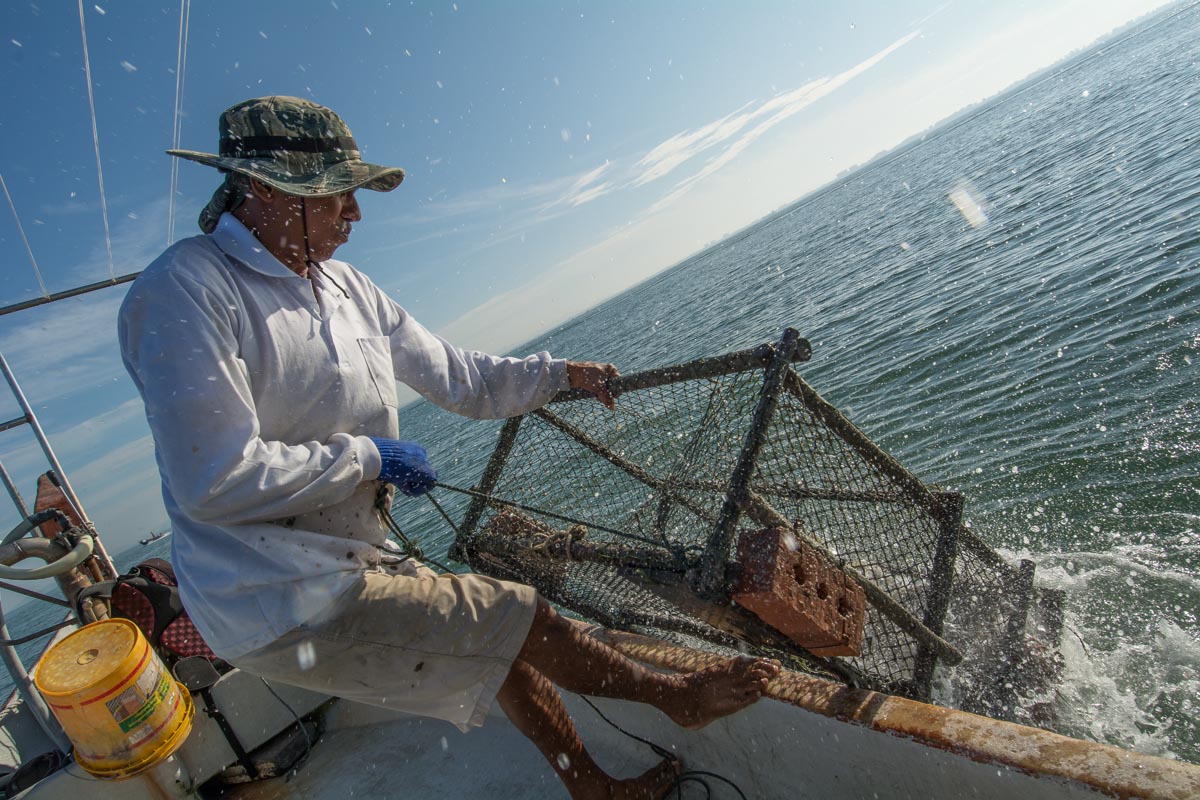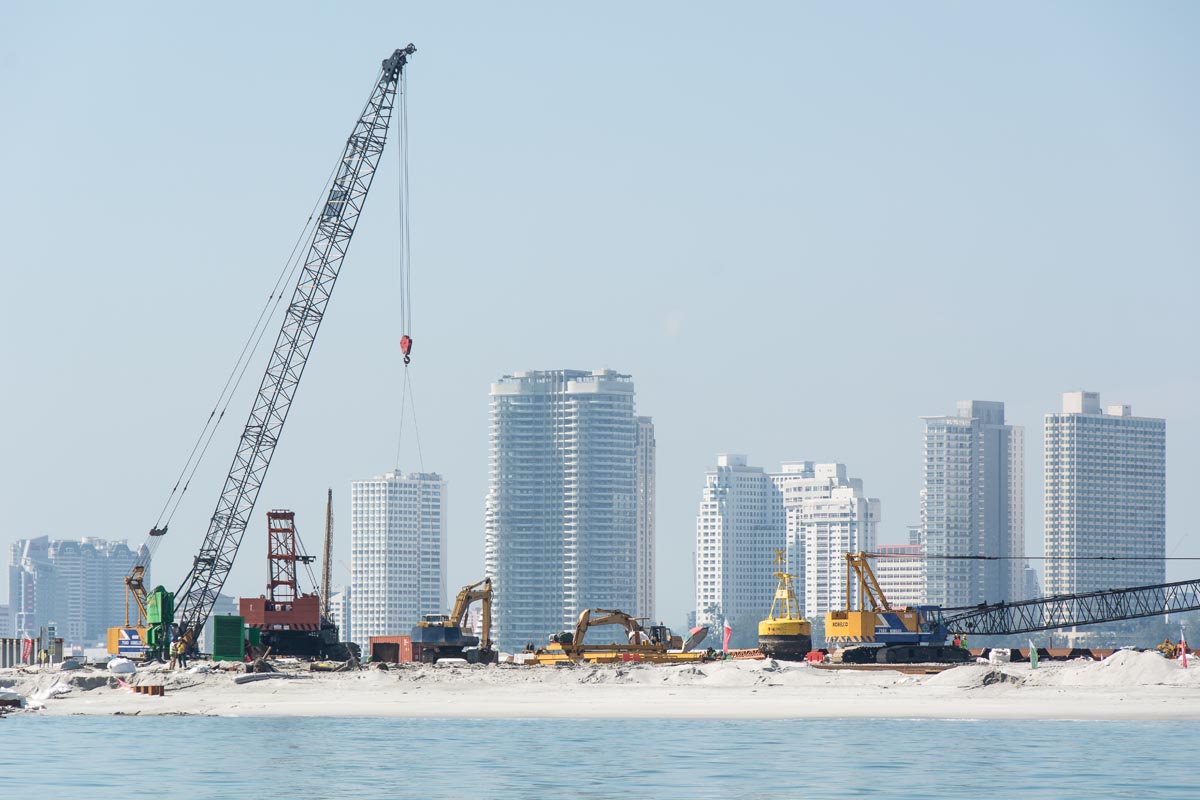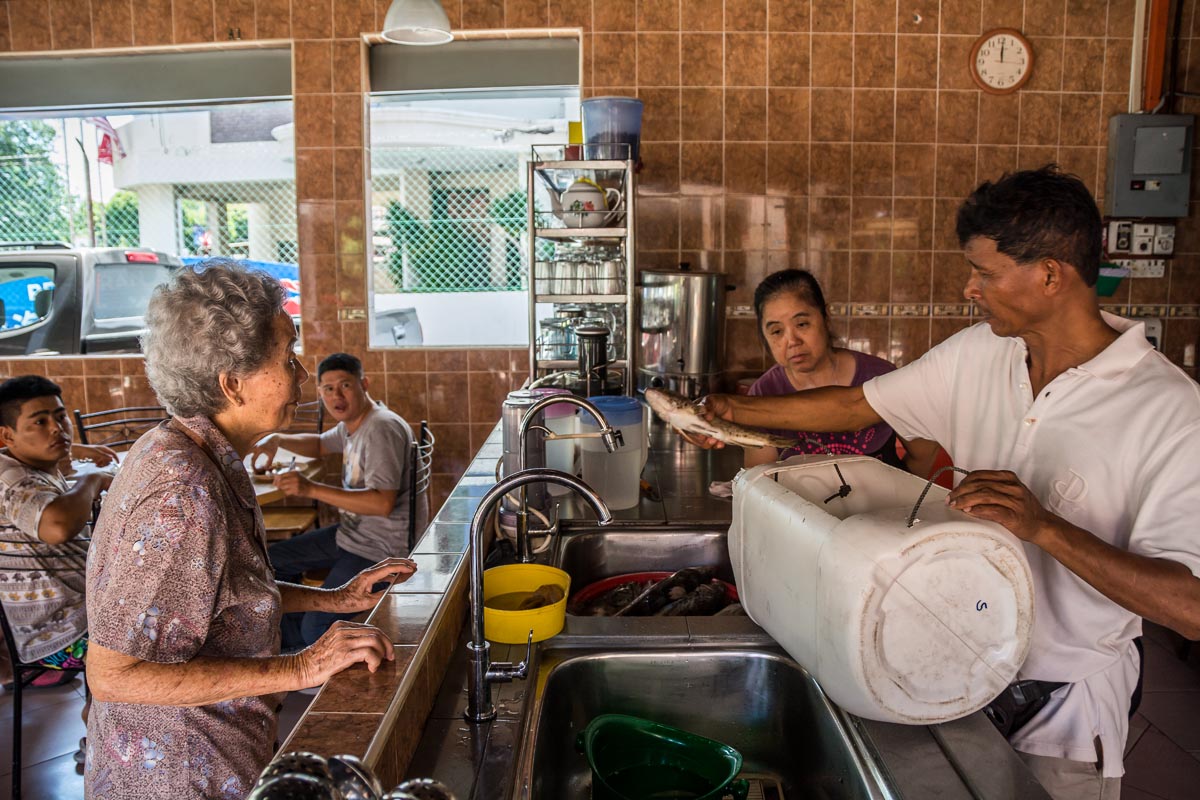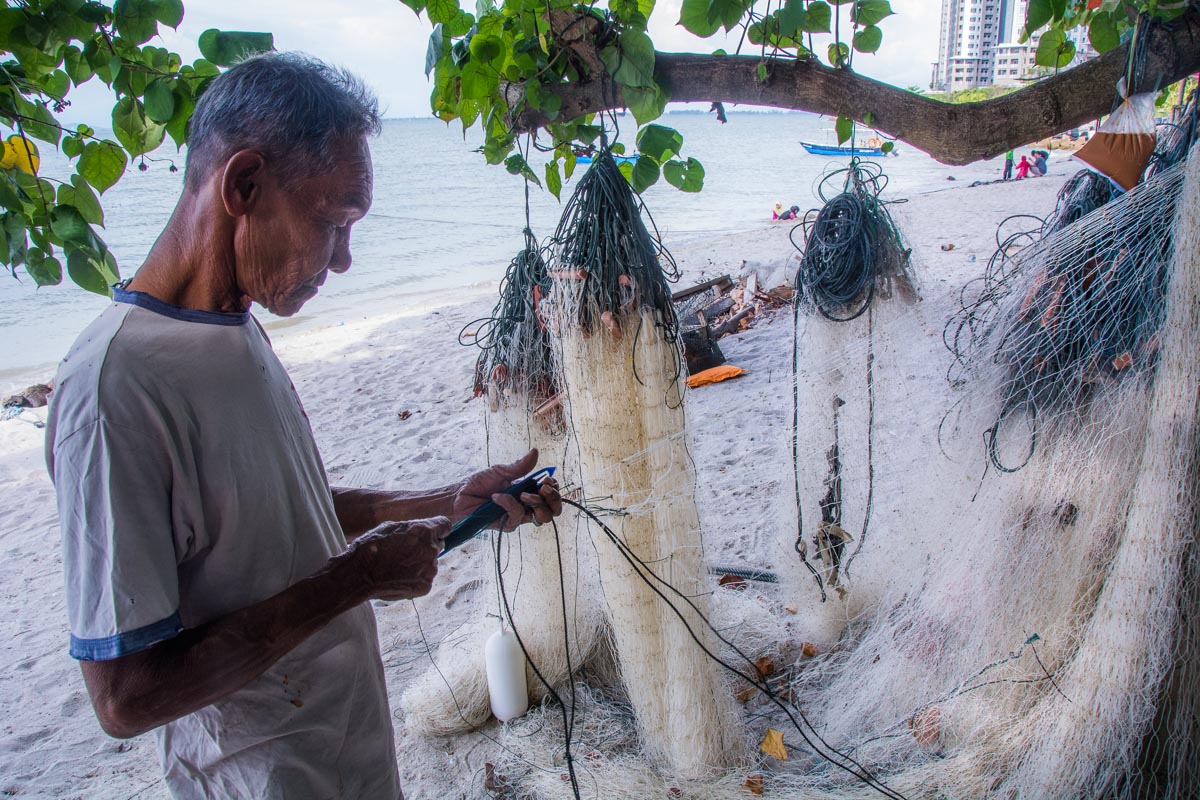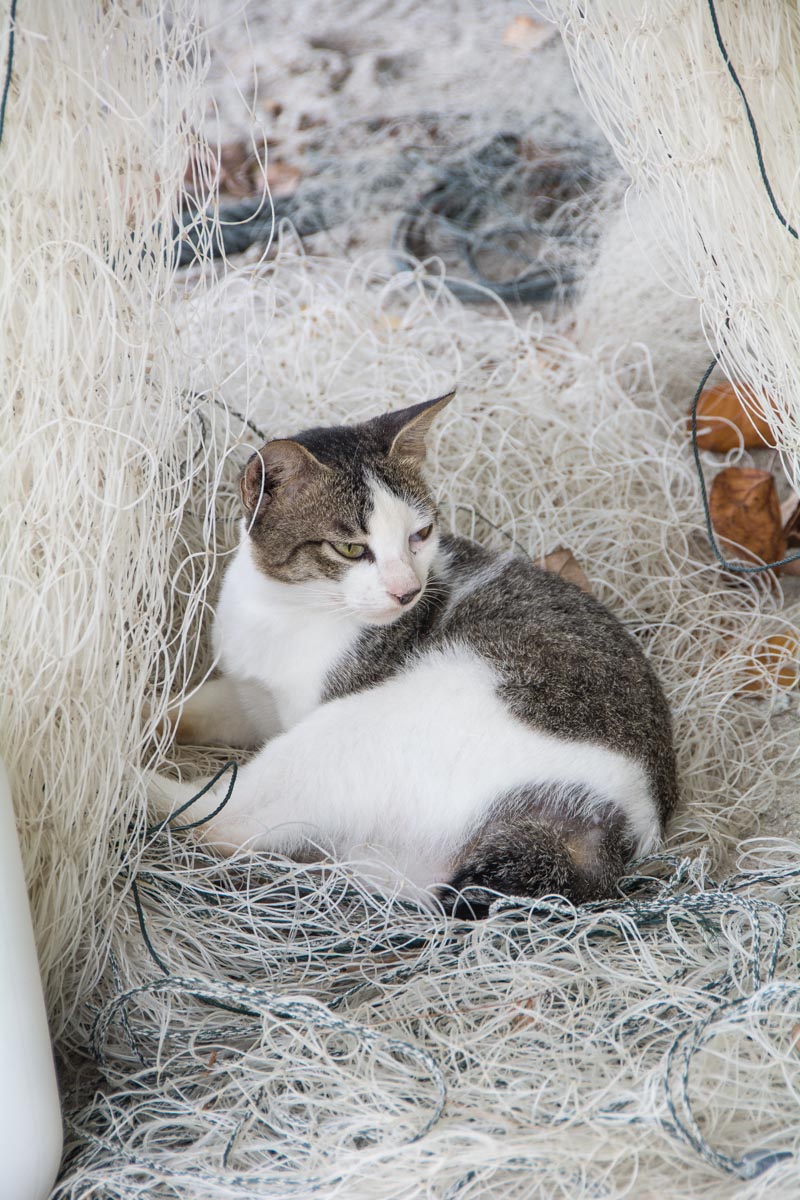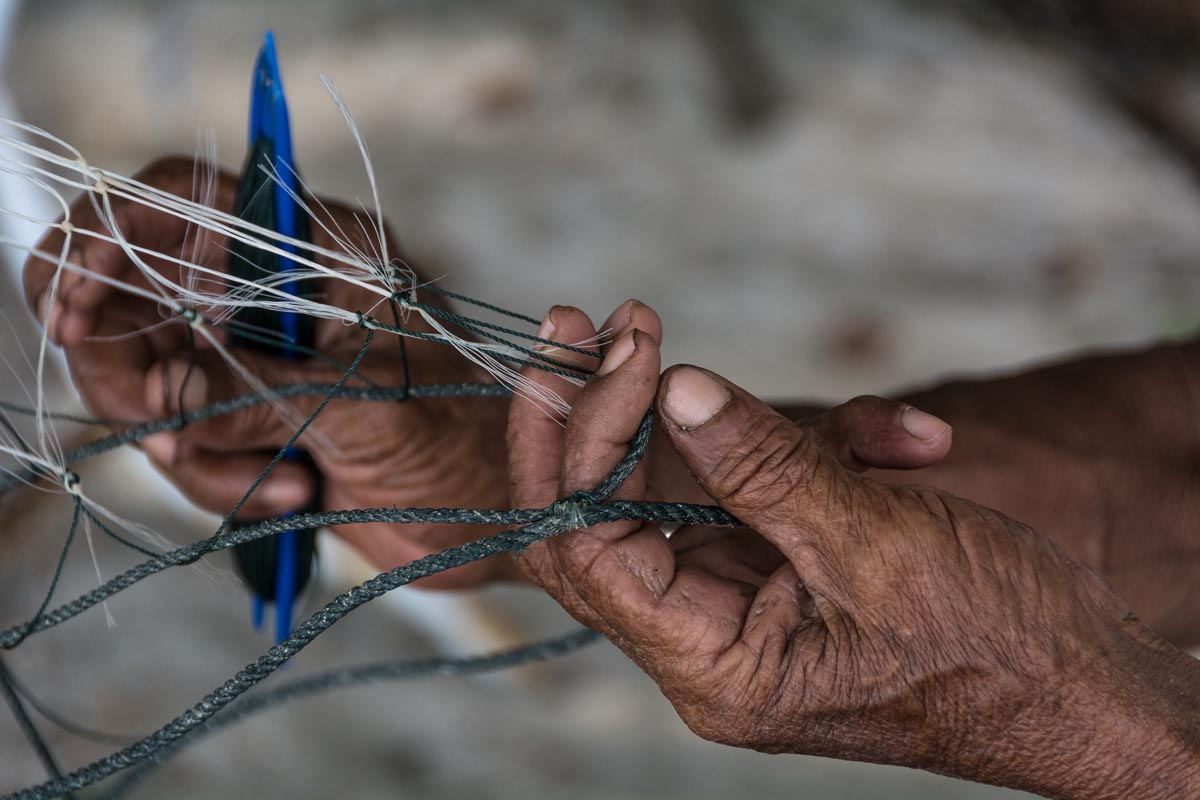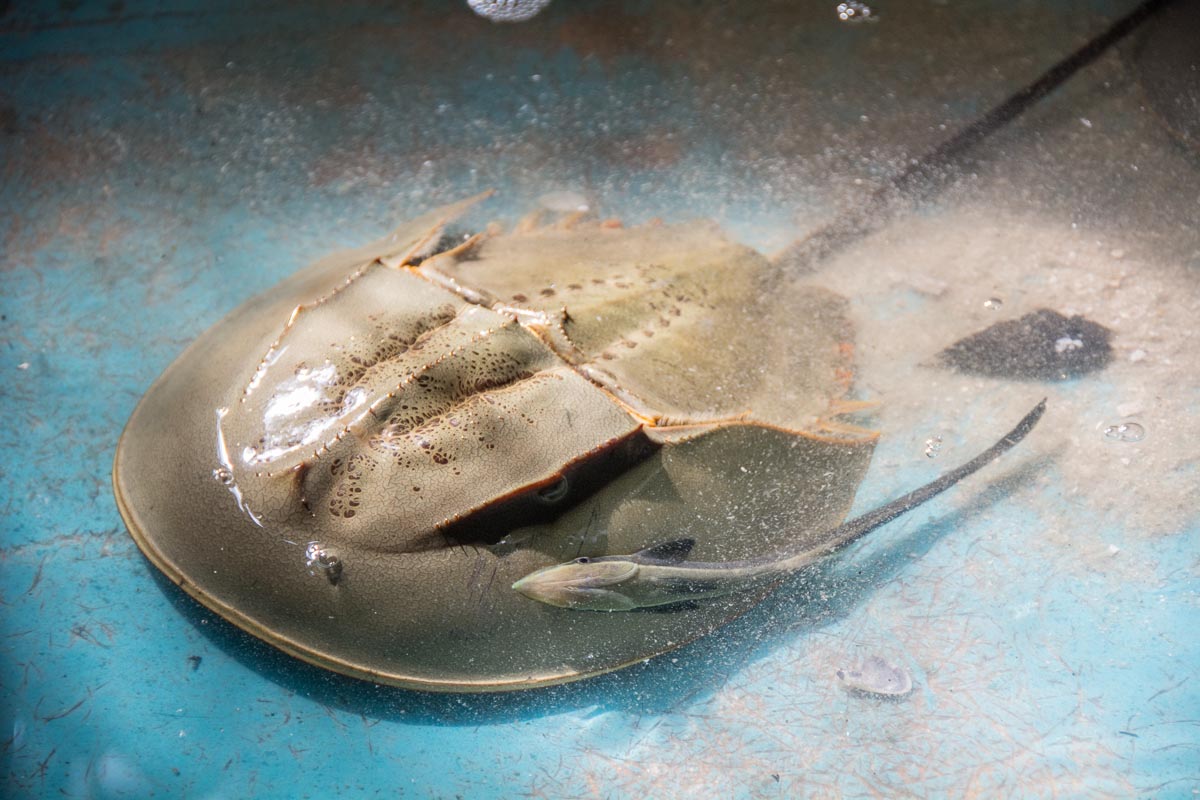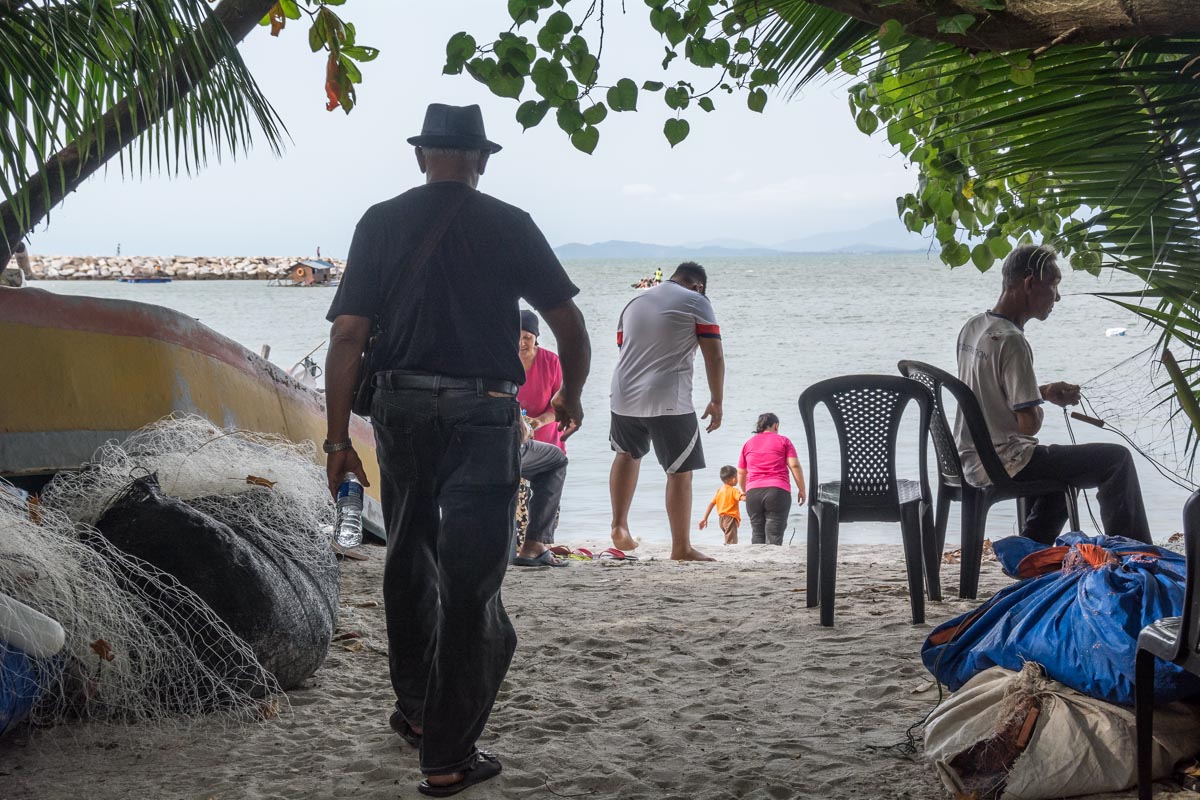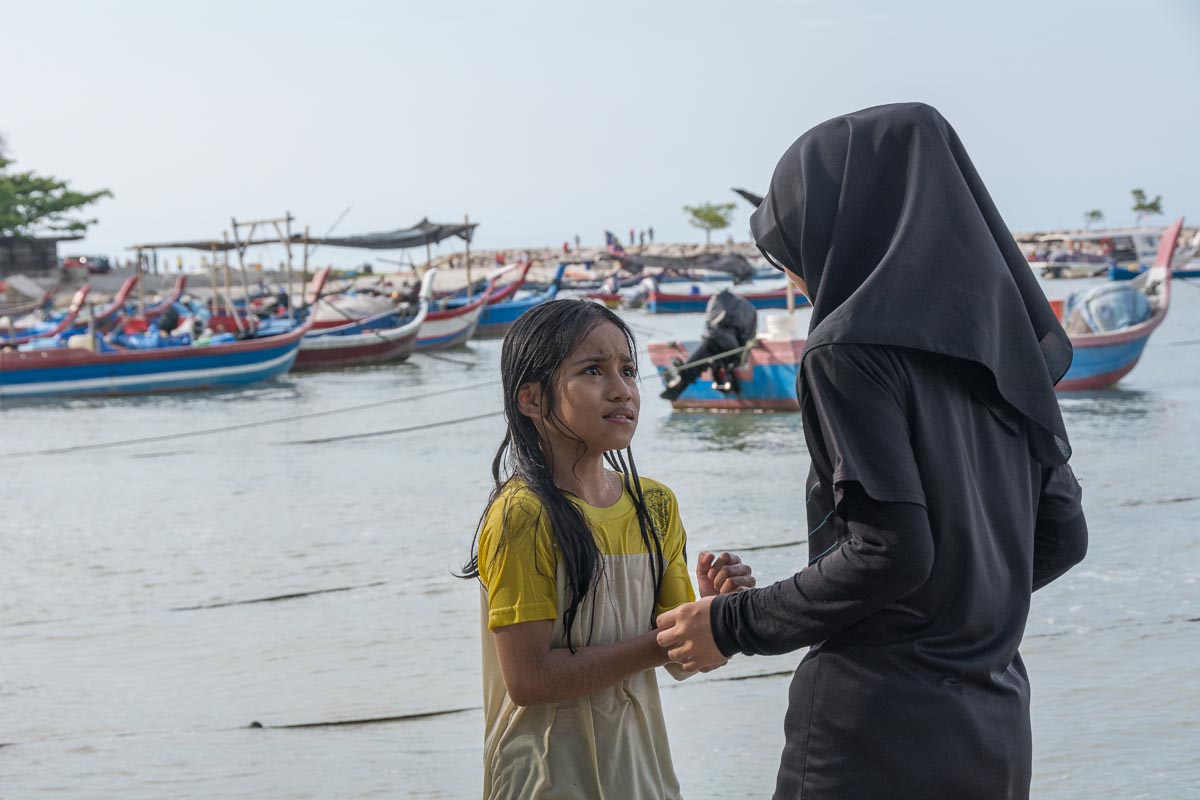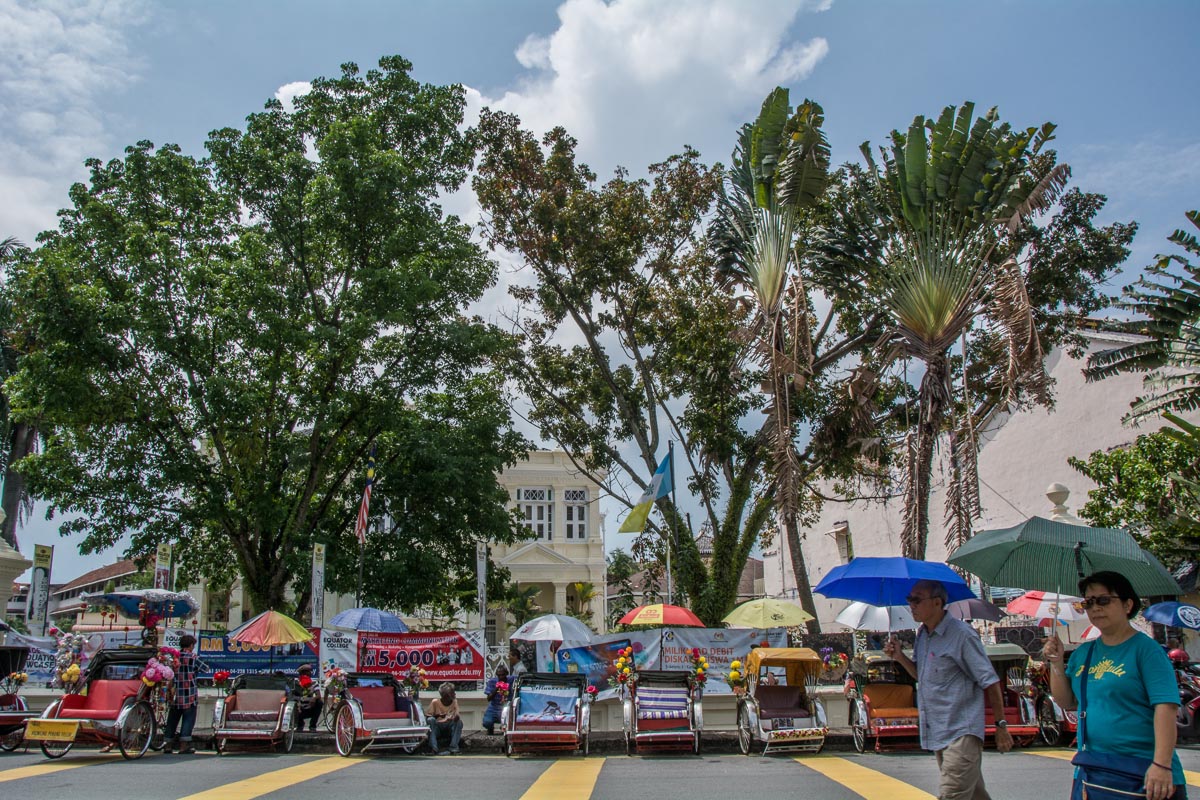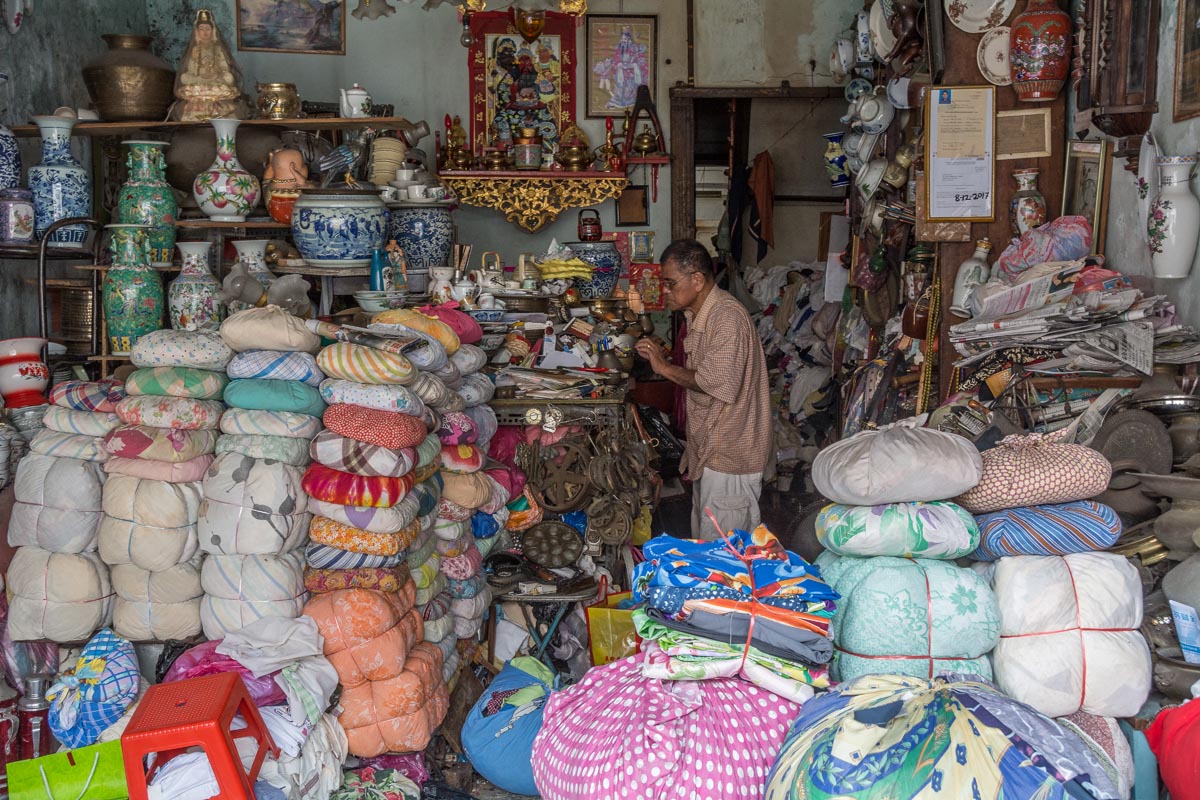- Many Palawan indigenous communities say they have suffered unfair land acquisition or lease arrangements for oil palm plantations. The situation hit a peak around 2007, when palm oil company Agumil Philippines promoted palm oil around the island as a miracle get-rich-quick crop.
- Many tribal landowners leased or sold parcels of land to Agumil. Those who leased said they were provided loans from the government-run Land Bank of the Philippines, negotiated by Agumil, to clear the land and plant oil palm saplings. Title deeds to the leased land were lodged with the bank as collateral against the loans, where they remain.
- Today the plantations are producing plentiful bunches of oil palm fruit. Still, landowners say they have yet to see any financial returns on their leased land. The problem all cite is that the loans came with crippling 14 percent annual interest rates, which left the original loan amounts inflating out of control. The terms of the lease contracts also stipulate that ongoing operational and managements costs be subtracted from the loan and harvest income.
- Now tribal groups are fighting back on multiple fronts. A tribal representative in the municipality of Rizal recently won a mayoral election. The re-elected mayor of neighboring Brooke’s Point has also pledged a halt to more oil palm plantations. Three of the seven municipalities in southern Palawan have now placed limitations on oil palm cultivation.
- The sandy path from the village of bamboo houses winds down through the coconut palms, which gives way to mangroves growing along the muddy shoreline. The seven elders inspect their fishing boats. Hand-built using timber from their communal forest, the small craft have bamboo outriggers to keep them stable in the open sea.
The Sarong community on the island of Palawan in the Philippines has for generations been living a similar way of life from the forest, cultivated fields, stands of coconut and fishing. But a few years ago, in 2012, their lives were turned upside down when they noticed that their communal forest was being logged and cleared without any consultation, let alone their permission.
“A contractor coming from another barangay [village] was clearing the land,” says Romeo L. Japson, who grew up in the community.
Community members say the company responsible then went on to plant oil palm saplings on 200 hectares (500 acres) of their ancestral land. They add that now, every time they pass by the plantation, they’re reminded of how their community forest was razed. To this day they are bitter that the situation persists and they have no redress.
They are not alone, as many other Palawan indigenous communities have also suffered what they see as unfair land acquisition or lease arrangements for oil palm plantations. The situation hit a peak around 2007, when palm oil company Agumil Philippines promoted palm oil around the island as a miracle get-rich-quick crop. Twenty-five percent Filipino- and 75 percent Malaysian-owned, Agumil is a subsidiary of Agusan Plantations (API) and operates the only palm oil processing plant on Palawan.
Now tribal groups are fighting back on multiple fronts. A tribal representative in the municipality of Rizal recently won a mayoral election. The re-elected mayor of neighboring Brooke’s Point has also pledged a halt to more oil palm plantations. Three of the seven municipalities in southern Palawan have now placed limitations on oil palm cultivation.
Meanwhile, a growing number of communities are responding to threats to their ancestral domains by pursuing legal recognition of their community land and water resources. Two communities celebrated success in 2018, and at least 12 more claims are in process.
Tribal land appropriation
Many tribal landowners leased or sold parcels of land to Agumil. Those who leased said they were provided loans from the government-run Land Bank of the Philippines, negotiated by Agumil, to clear the land and plant oil palm saplings. Title deeds to the leased land were lodged with the bank as collateral against the loans, where they remain.
“Until now I am riding only in my thongs,” said Mily Saya, landowner and member of the village cooperative in the barangay of Aramaywan. He explains how early company promises of a car and stone house failed to materialize. He says he “has no idea how to get back the land title” for his 4.7 hectares (11.6 acres) from the Land Bank.
“I don’t know how big the loan is from the Land Bank,” he says, explaining how the company planted oil palm seedlings on 1 hectare (2.5 acres) of his land but abandoned the rest with no explanation.
In time, the saplings matured and today the plantations are producing plentiful bunches of oil palm fruit. Still, members of the landowner cooperatives say they have yet to see any financial returns on their leased land. The problem all cite is that the loans came with crippling 14 percent annual interest rates, which left the original loan amounts inflating out of control. The terms of the lease contracts also stipulate that ongoing operational and managements costs be subtracted from the loan and harvest income.
“You will become a rich man,” Larry Arcuyo says he and other landowners were promised, “before entering into contracts” with Agumil. Arcuyo chairs the Aramaywan farmers’ cooperative, one of 14 such growers’ cooperatives on the island. He says Aramaywan has 26 members who have leased land to Agumil. “There are rich men in Palawan — rich of debt,” he says. “We are praying that someone helps us to resolve that problem.
“From the start almost 11 years [ago], the landowners have never seen any money even through the harvesting started eight years ago … Some landowners already died in the meantime,” Arcuyo says. He adds that the price per kilo of palm fruit set by Agumil “is already very low.” Even then, he says, this payment never reaches the farmers who have leased their land to the company; instead, “it is given to the Land Bank for settling the debt,” including for preparation of the land and the initial seedlings. “All decisions regarding finances are controlled by the company,” Arcuyo says.
According to the Coalition against Land Grabbing (CALG), a local indigenous organization campaigning for indigenous people’s rights, 9,000 hectares (22,200 acres) in Palawan have been cleared for oil palm plantations, and the government is inviting foreign investors to develop more. Agumil spokesman Eric Ang told Mongabay, “We intend to expand our business in the oil palm industry but for now we are consolidating in Palawan.”
CALG says that if rules and regulations had been implemented properly, Agumil would never have been able to develop its plantations in the first place. It claims the Philippines’ Indigenous Peoples’ Rights Act (IPRA Law) has been ignored, and that the Palawan Council for Sustainable Development (PCSD) has failed to implement its Strategic Environmental Plan as required under a 1992 act. The group also says that environmental compliance certificates should never have been issued to palm oil companies by the Department of Environment and Natural Resources. The department did not respond to an email request to comment from Mongabay.
Arbitration between tribes and company
The Palawan Palm Oil Industry Development Council (PPOIDC), a multi-stakeholder industry body, is seeking a solution to the ongoing disagreements. However, four meetings “resulted in deadlock,” according to the minutes of the most recent meeting, held last November, and an agreement has still not been reached.
According to lease agreements obtained by Mongabay, Agumil offered a land rental rate of 17,000 pesos ($333) per hectare for a 10-year period, amounting to 1,000 to 2,000 pesos ($20 to $40) per hectare per year to each landowner. In addition, it offered 200 pesos ($4) per ton for harvested palm fruit.
The price of processed palm oil has been dropping in recent months, and on May 31 stood at $563 per metric ton, the sixth-lowest monthly valuation in the past five years.
It was noted at the PPOIDC meeting that the estimated tonnage of palm oil per hectare was well below that promised to farmers by Agumil at the project initiation. In contrast, the palm oil cooperatives demanded a signing bonus of 20,000 pesos ($400), production sharing of 400 pesos ($8) per metric ton, and land lease rental of 10,000 pesos ($200) per hectare per year.
The meeting recommended that Agumil reconsider its offer to the cooperatives and if still no agreement could be reached, the committee should “render a report to the committee on Cooperatives, House of Representatives, and recommend/request Congress to provide legal assistance to the Palm Oil Cooperatives for the filing of appropriate case, a class suit against Agumil.”
It also recommended that the “Top management of the Landbank of the Philippines conduct a thorough investigation on the various accounts of the Oil Palm Cooperatives and possibly cooperate with the Oil Palm Cooperatives in filing appropriate legal charges against Agumil.”
Back in 2015, only one co-op had already repaid its loan and four were up-to-date with payments and on course for full repayment by 2023. Seven, however, needed loan restructuring and two had defaulted on their repayments. Restructuring in previous meetings had involved interest rate reductions from 14 percent to 7 percent, and the management fee charged by Agumil reduced from 10 percent to between 2.5 and 5 percent.
Summing up, board member B.M. Rama said that, “with what had happened to this industry, somebody must be [held] responsible and liable to this problem and that this case should be brought to the proper forum which is the court.”
Asked by Mongabay whether Agumil would be improving terms to co-ops in future, Ang said: “There is no change in the terms and conditions of the Lease Agreement entered between the Coops and the Company.” He maintained that the coops are still liable for a start-up 20 percent equity advance, a matter hotly disputed in the meeting. “We are agreeable to an independent audit of the 20 percent equity advance,” Ang said, adding that none of the co-ops had yet initiated the auditing process.
The idea that the capital debt of the co-ops be assumed by another entity was recommended by a study commissioned by the government’s Cooperative Development Authority. Ang says this “was explored by the Land Bank of Philippines (LBP) and Agumil.” Such a restructuring scheme has yet to be implemented, and according to Ang, would entail a new company assuming the capital debt and a further loan from the Land Bank along with a “processing agreement with Agumil.”
Moratoria stop palm oil plantations
These days, the tribes are getting organized and pursuing ways to seek justice for their lost earnings. Mobilizing to stem the spread of oil palm plantations in Palawan, groups such as CALG have networked with Palawan’s tribal groups to explain the risks of leasing their land. According to CALG chairman Kemil Motalib, the lessons have been learned and nobody is leasing land to Agumil any longer, though some are selling plots in areas where cultivation is still permitted.
There’s another cause for celebration among Palawan’s indigenous communities: the planting of oil palm has been banned in two other provinces in the Philippines, a trend others may follow in the coming months.
“No to expansion of palm oil planting in Rizal for five years,” says Motalib, explaining the substance of the moratorium declared by the Rizal municipal government in October 2018. Motalib, who is from the Tagbanwa tribe, said that a year of painstaking lobbying that included frequent meetings with government officials by CALG members and local indigenous people had finally paid off: “After one year the moratorium was signed by the Municipal Mayor of Rizal,” he says. “Agumil cannot question it because that is ordinance. That is the law made by the municipal government.”
This sense of victory was reinforced by the election of Rizal’s first indigenous mayor. Otol Odi, a member of the Palaw’an tribe, was won the May 13 election, polling nearly twice his nearest rival. Odi, now in his seventies, attracted widespread support among Rizal’s population of 50,000 with his platform of defending the area’s natural resources from big business.
The municipality of Quezon was the first in the Philippines to declare a moratorium on oil palm cultivation, back in 2014. After recent victories, CALG is now pressing for similar moves in the municipalities of Española and Bataraza. When asked by Mongabay whether Agumil would respect the moratoria, Ang said, “We will abide by any rules and regulations imposed by the Government.”
A further challenge to palm oil companies came from the May 16 re-election of Mary Jean Feliciano as mayor of Brooke’s Point. Despite Agumil being headquartered at Maasin near Brooke’s Point, where its processing plant is located, and using the town’s port facilities for exporting palm oil, Mayor Feliciano has pledged no new oil palm plantations in her region. (She says the two existing plantations can stay for now.) When asked what impact this would have on Agumil’s business, Ang said the company was “not aware of Mayor Feliciano’s pledge.”
Recognizing ancestral domain land
In an August 2018 ceremony, ancestral domain titles were awarded to the Tagbanwa tribes in the barangays of Berong and Aramaywan. In all, the titles awarded by the National Commission on Indigenous People (NCIP) covered 31,000 hectares (76,600 acres) of territory, comprising 23,000 hectares (56,800 acres) of land and 8,000 hectares (19,800 acres) of ancestral waters.
“The forest land is inside the ancestral domain because the forest provides many things, such as honey, rattan, and almaciga [Agathis philippinensis] tree resin,” says Sarong resident Romeo Japson. “They are hunting grounds and provide clean water to drink. There are also natural medicines in the forest that can prevent and cure many illnesses.”
After an application has been filed, it is assessed by the NCIP at the national office in Manila. Here the order is issued for a survey of the area to determine parcel size and boundaries.
“Ancestral domain land is the common land of the indigenous peoples. So the indigenous people are claiming their land, no limits to the thousands of hectares that they claimed. They can own that but only communally, not in the name of one person,” Japson says. He adds that marine and mangrove areas can also be applied for under ancestral domain.
However, there are hurdles. According to Motalib, it takes at least five years to process an application, with the domains granted to Berong and Aramaywan the result of “12 years hard work.” Part of this is due to the average cost per application of around 1 million pesos ($19,500), which can take a while to amass. Then there’s the issue of capacity.
“The NCIP is very stretched as there is only one office in the whole of Palawan and only a few staff,” Motalib says.
Despite the obstacles, the number of ancestral domain applications has grown, with 12 currently in the pipeline. CALG has an ambitious program in the works that intends to support three barangays each in the municipalities of Batarazza and Matarazza and six in Quezon, according to Motalib.
After years of struggling against the odds for the rights to their land, the indigenous peoples of Palawan appear to be making progress.
“Ancestral domain is the only way the Katutubo [indigenous peoples] can protect their rights, their land,” Japson says. “It will decide whether they live freely and whether they maintain their own traditions and culture.
“Indigenous people believe if there is a forest, there is food, there is medicine, there is everything else.”
Published by Mongabay.com


